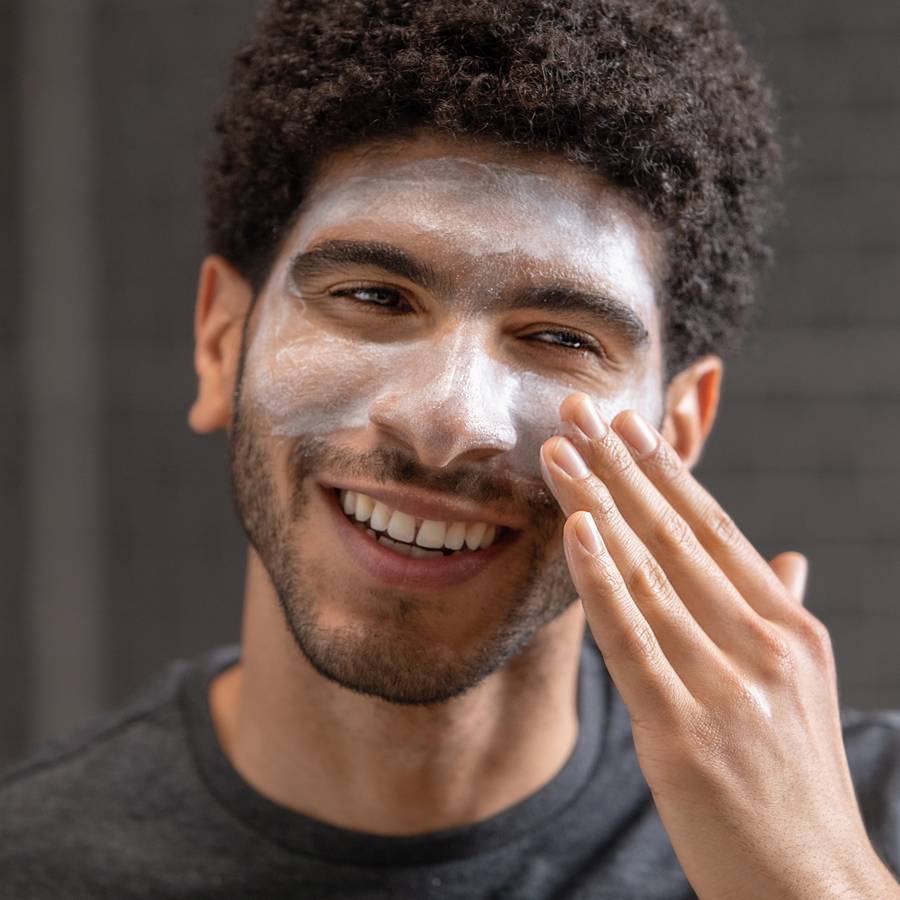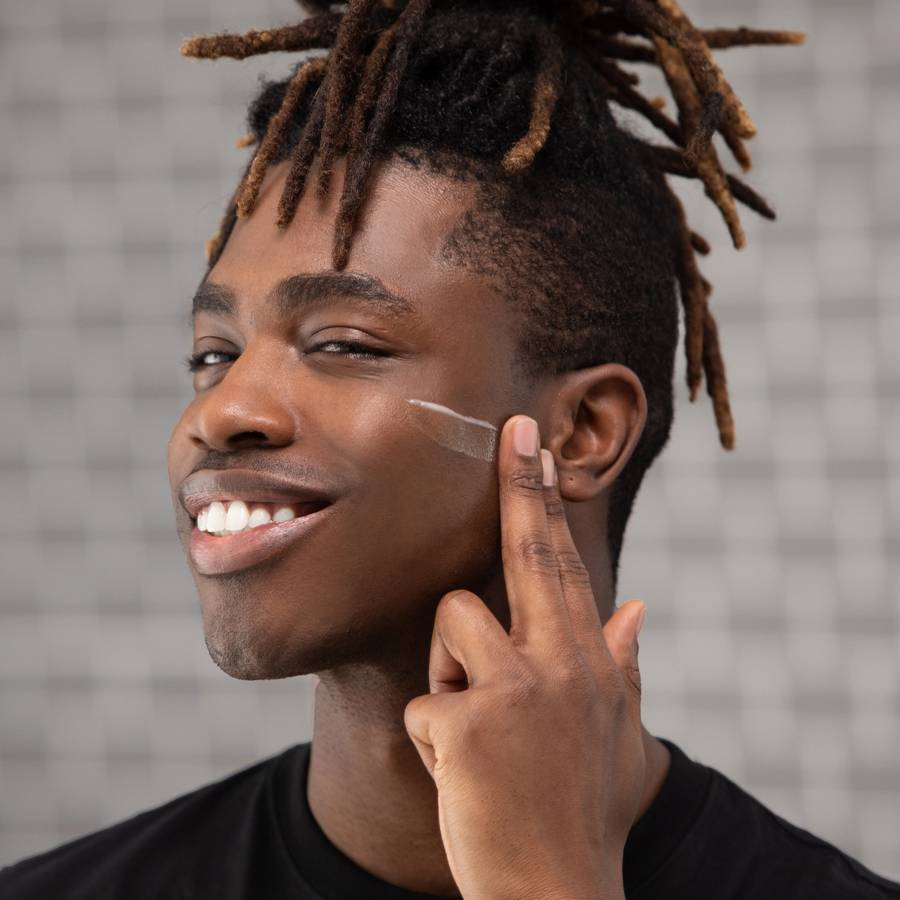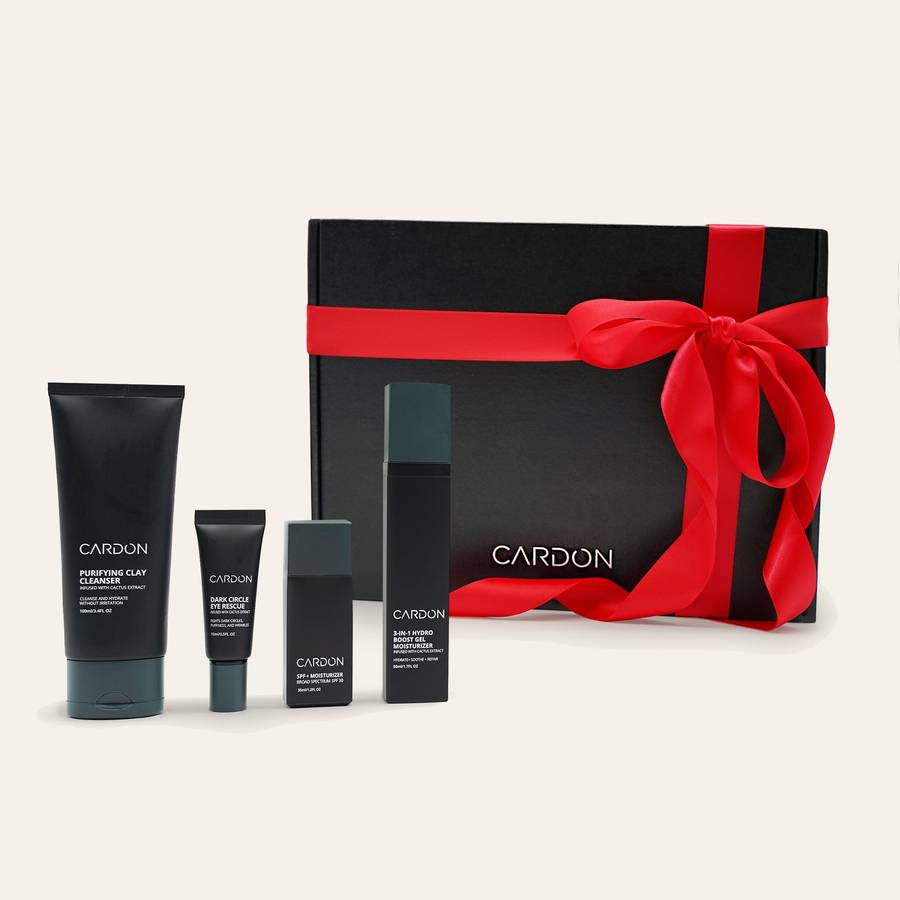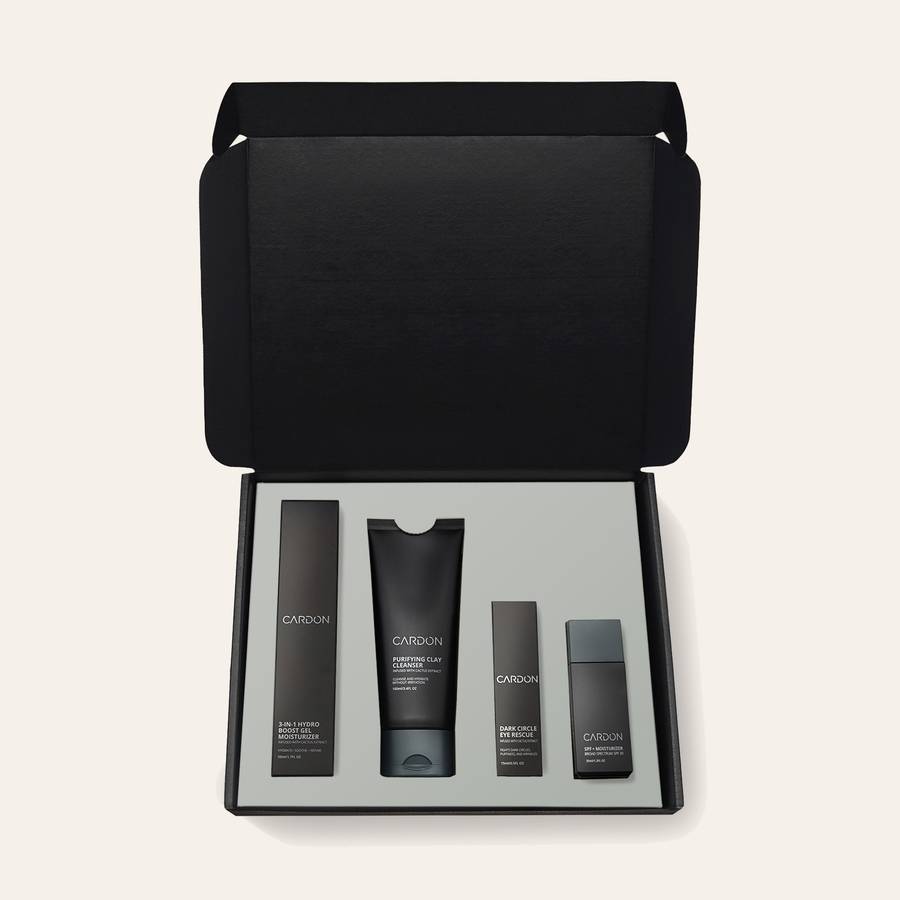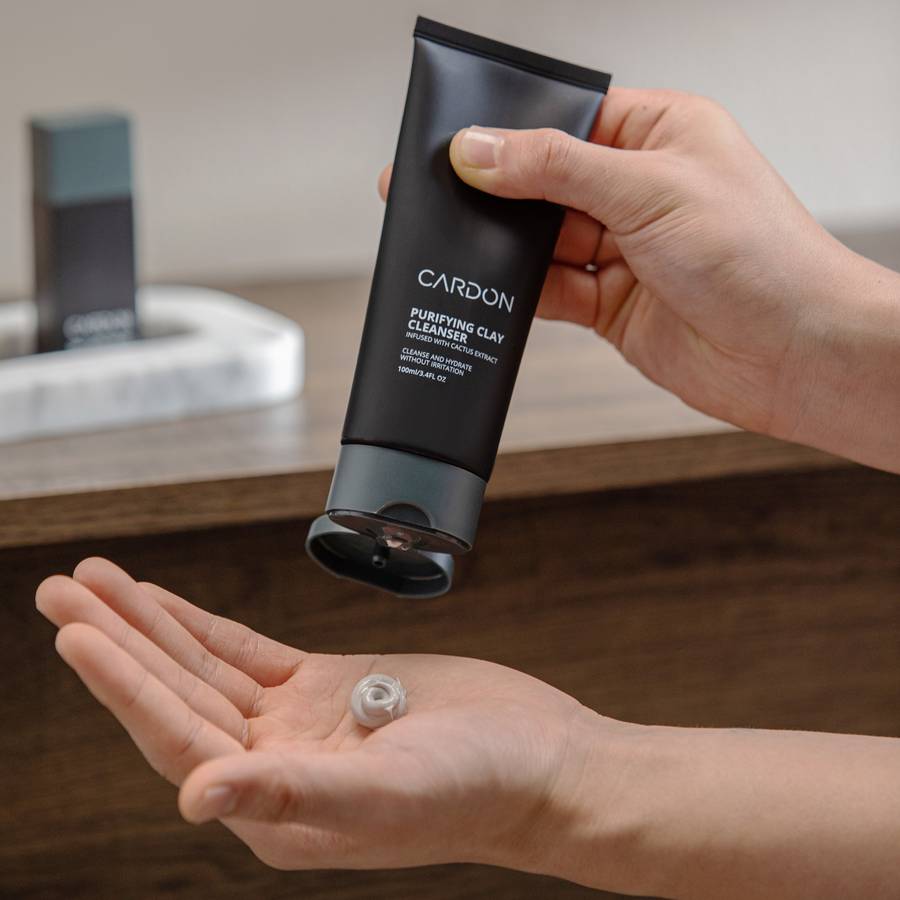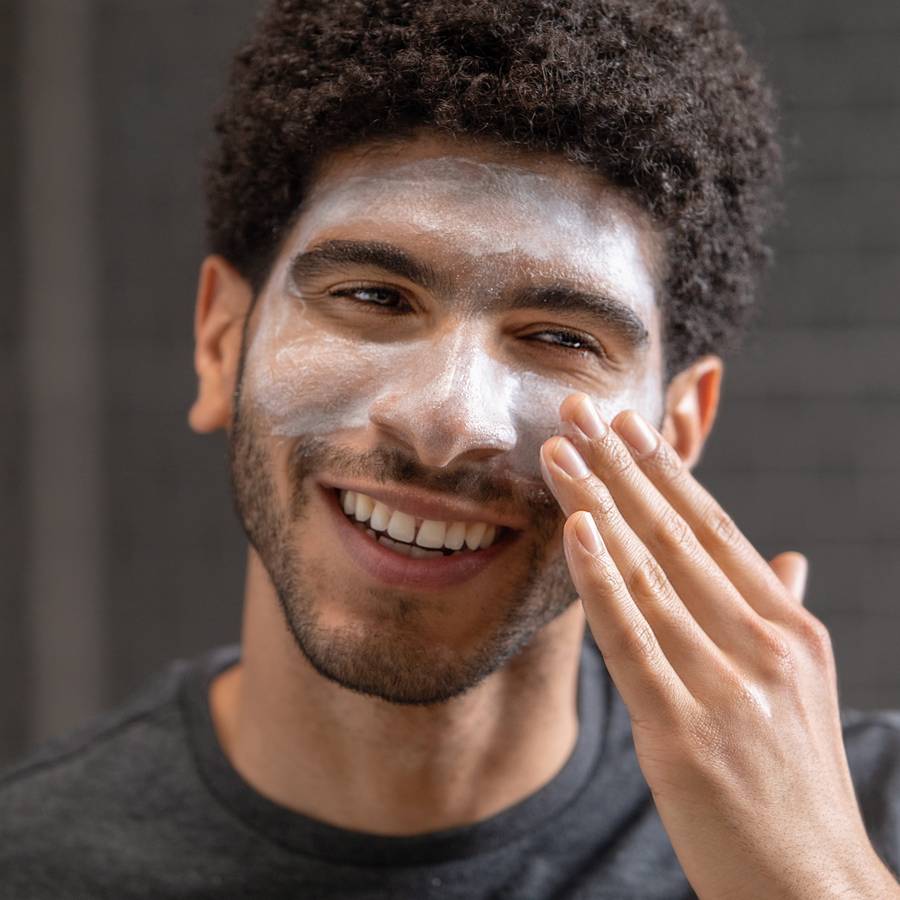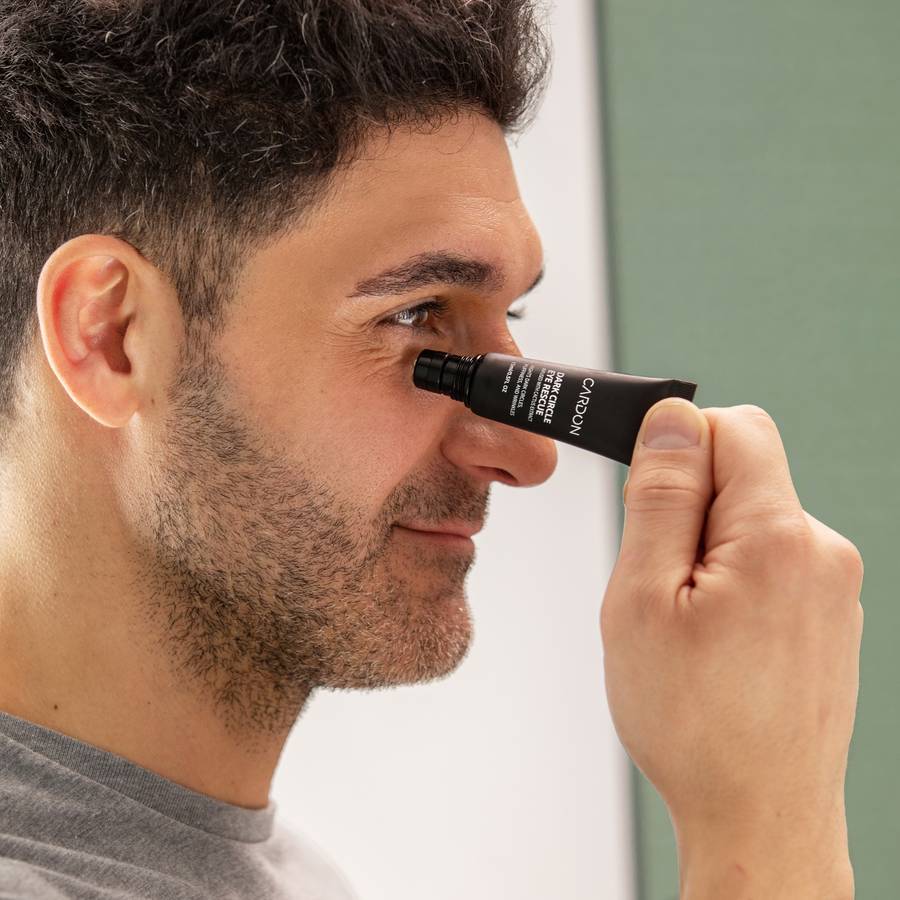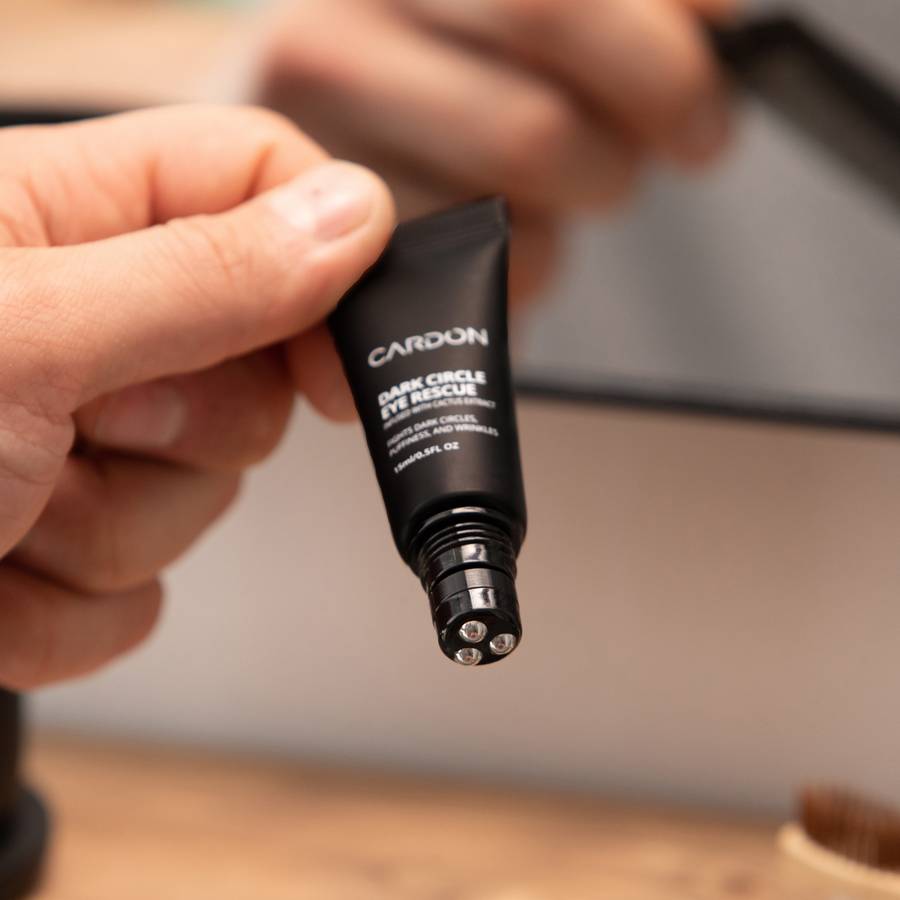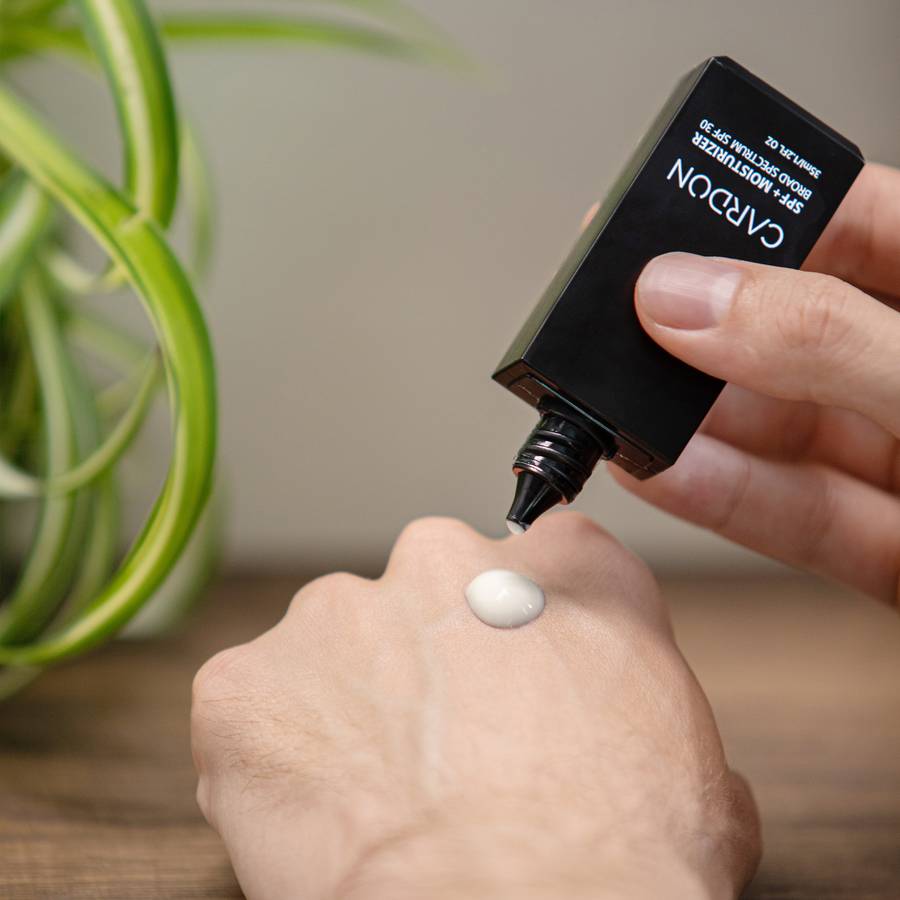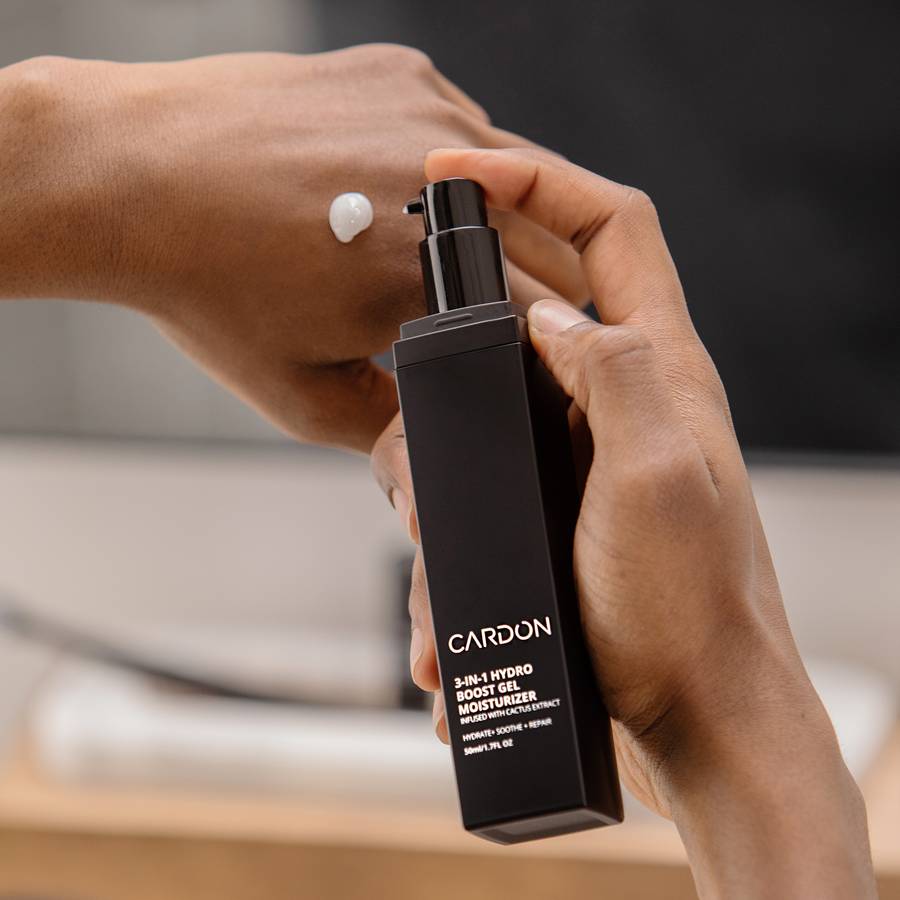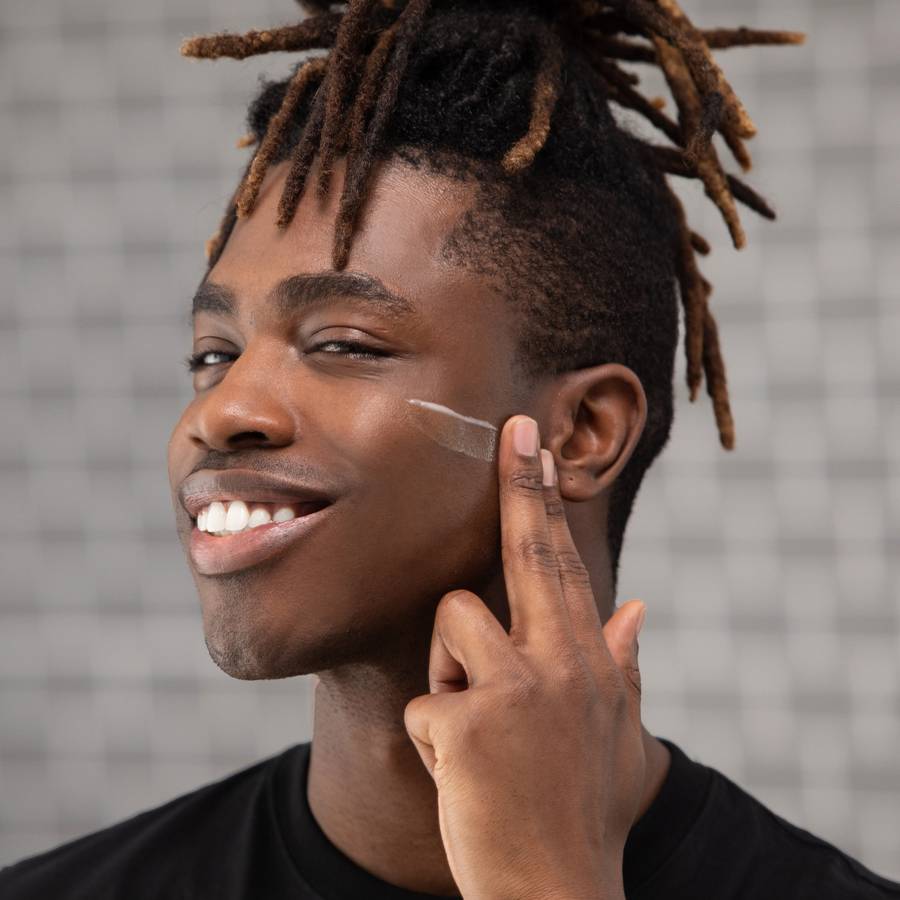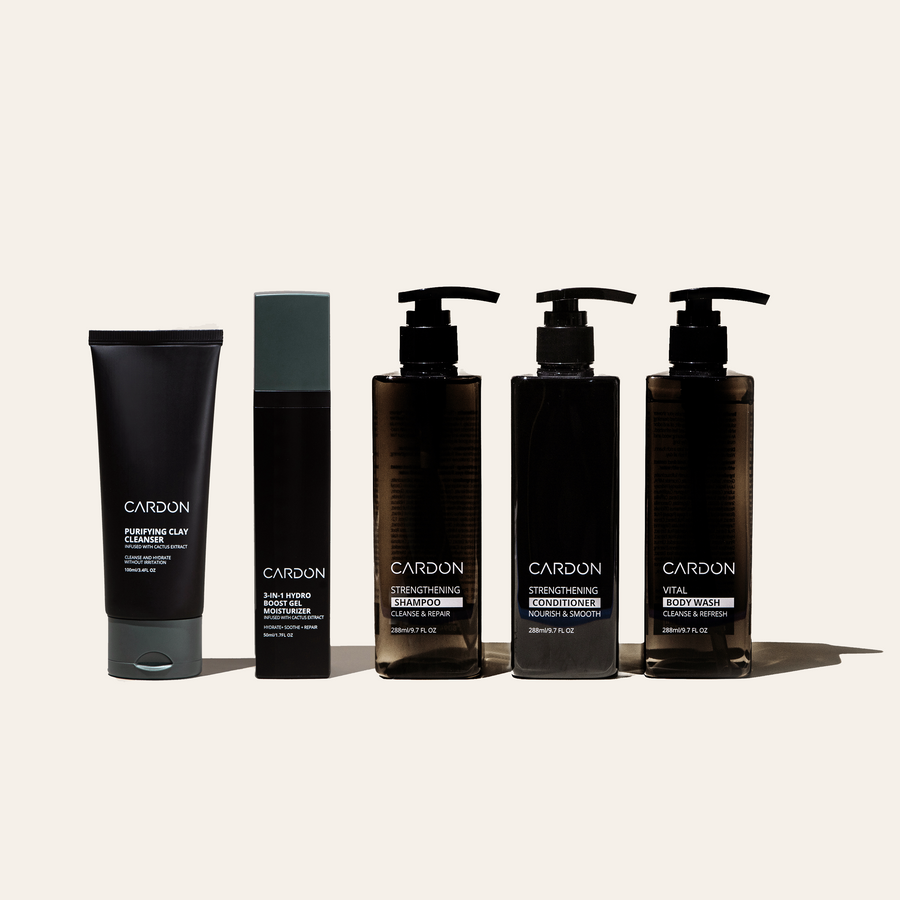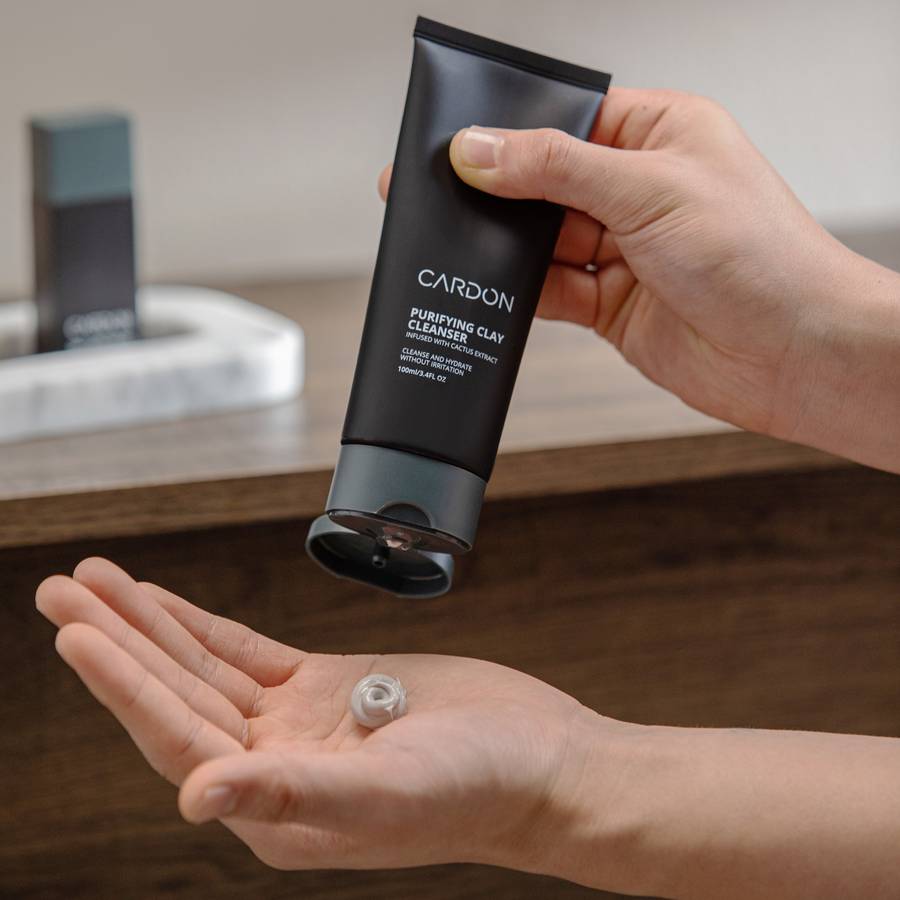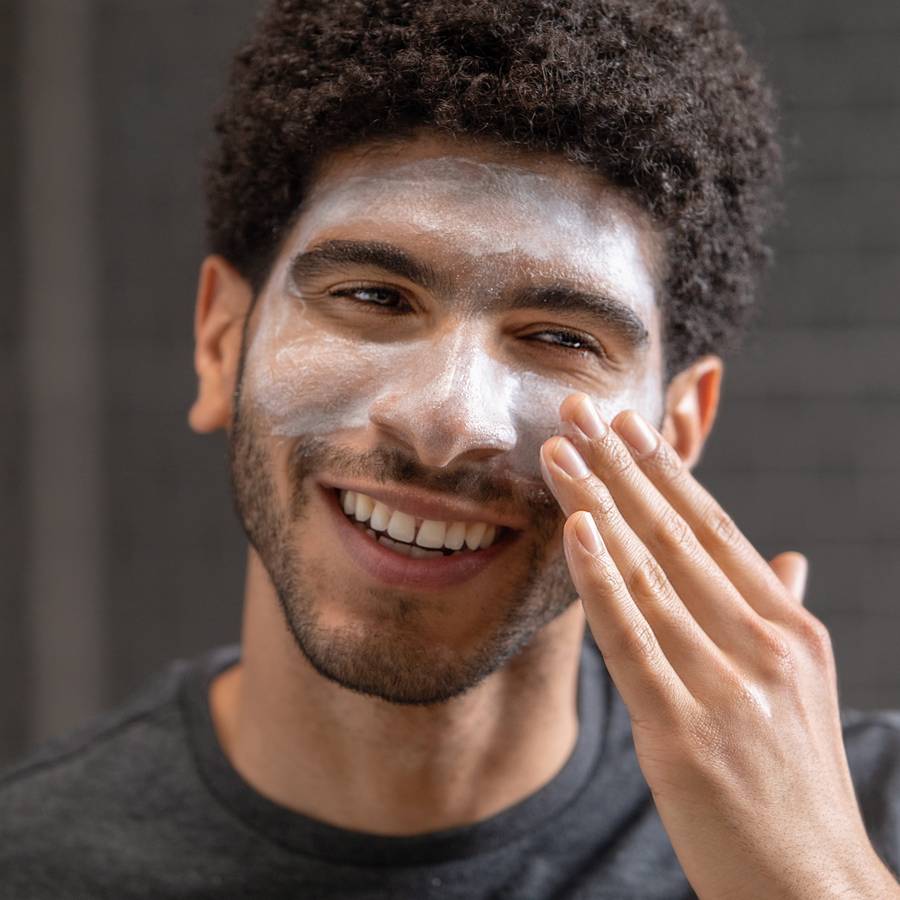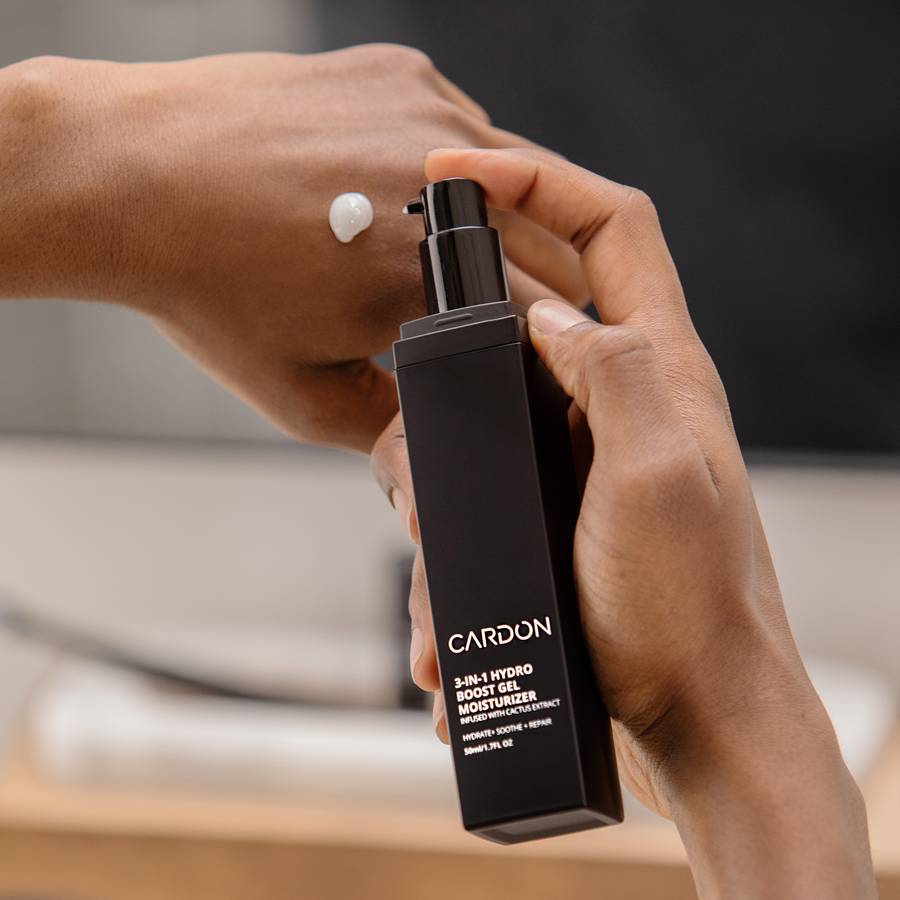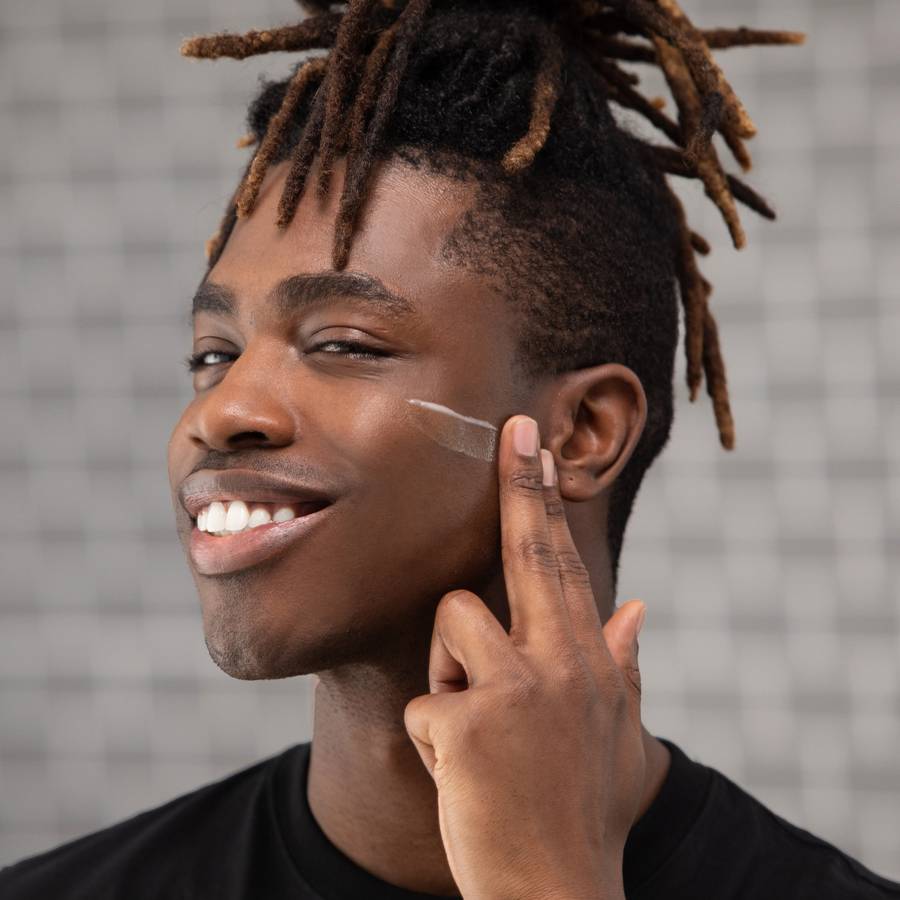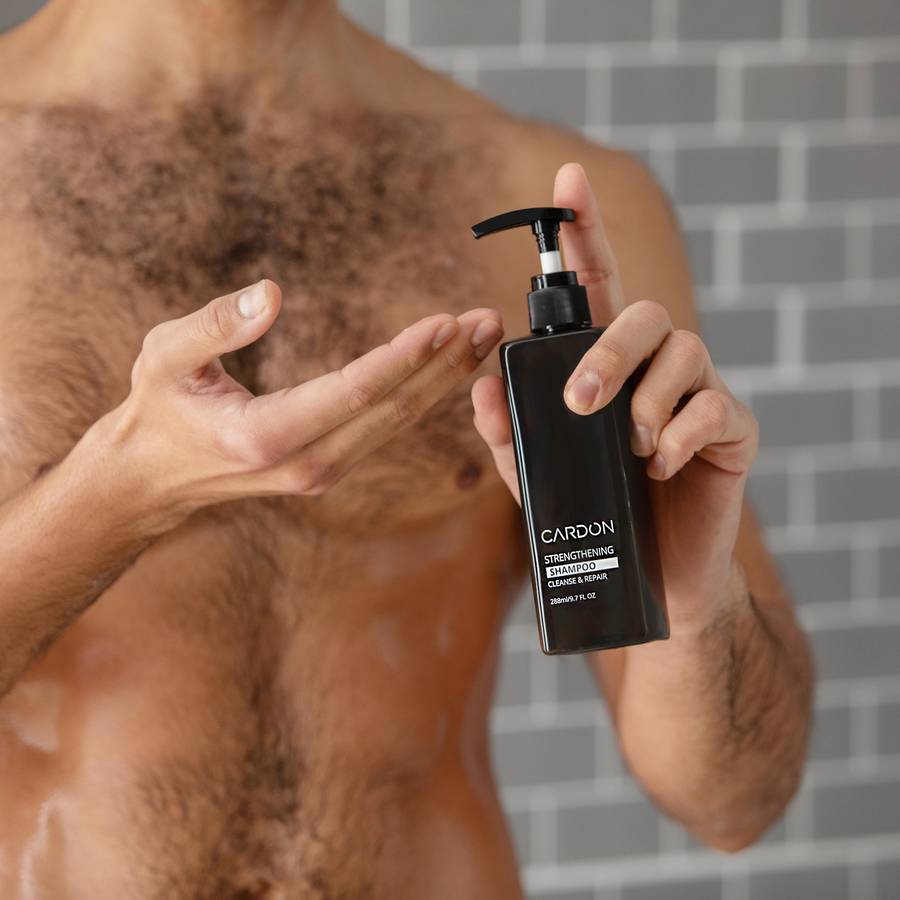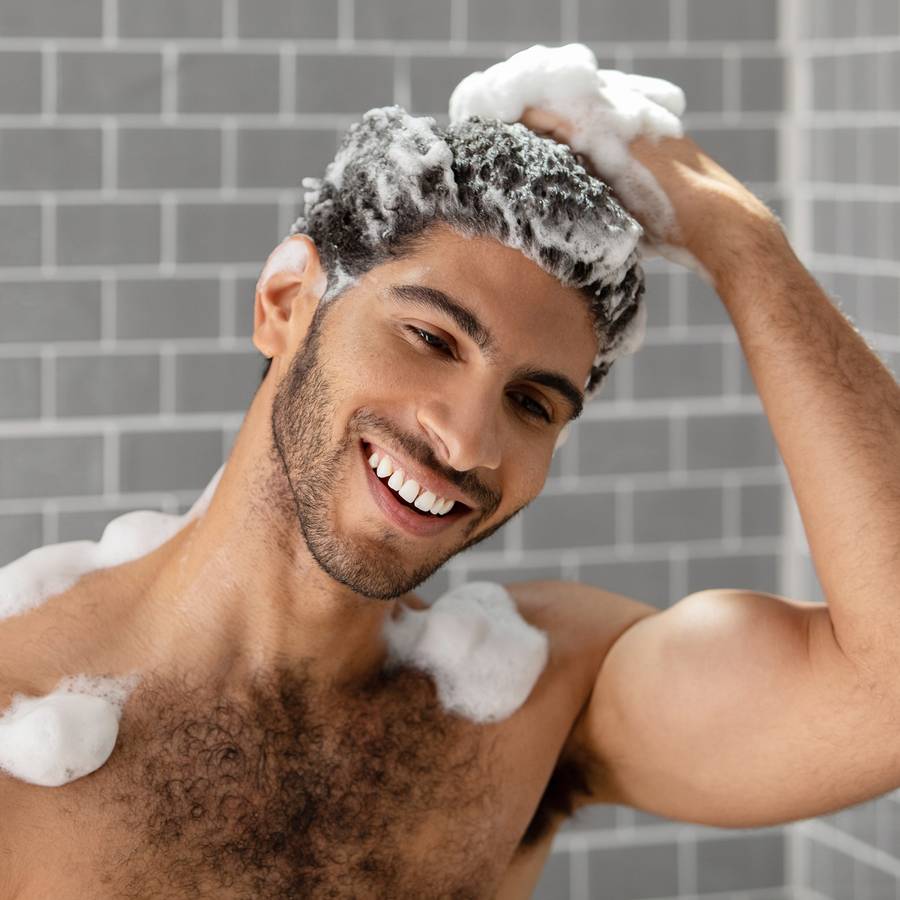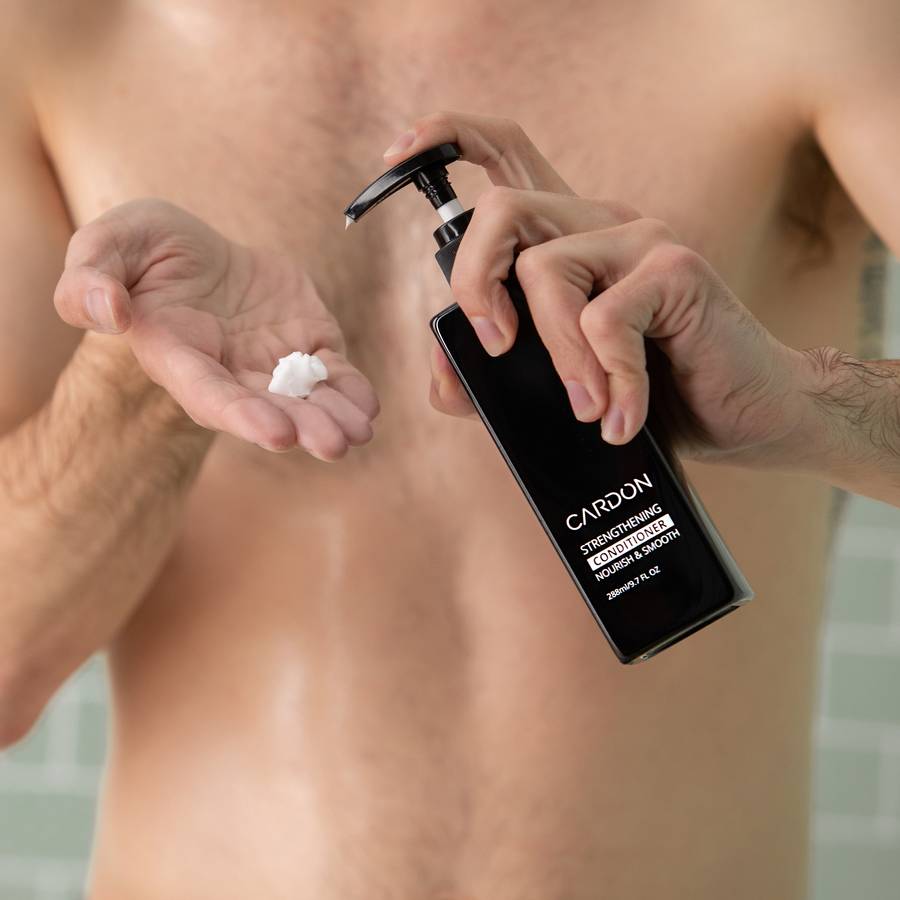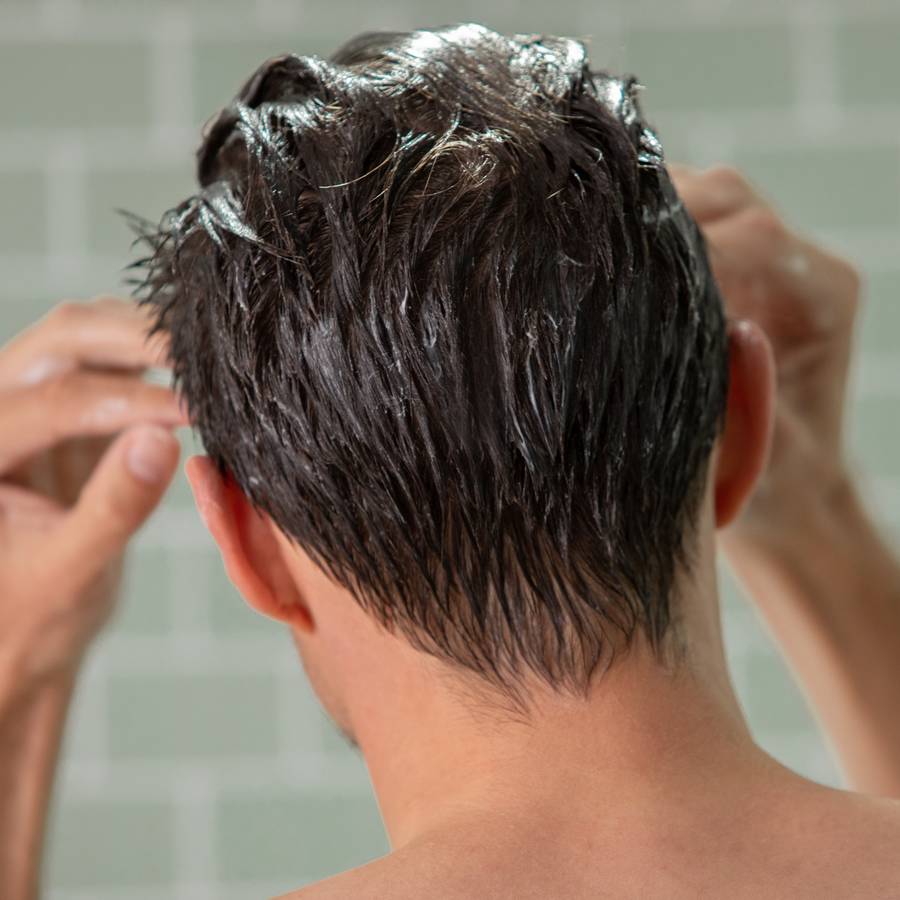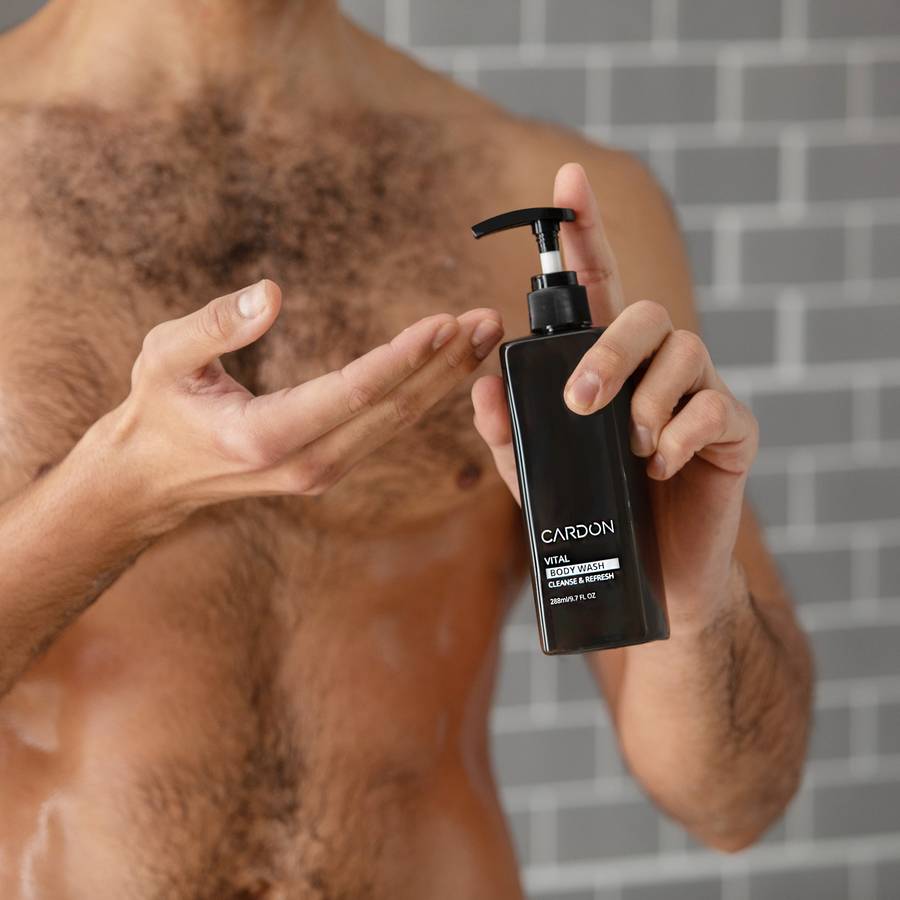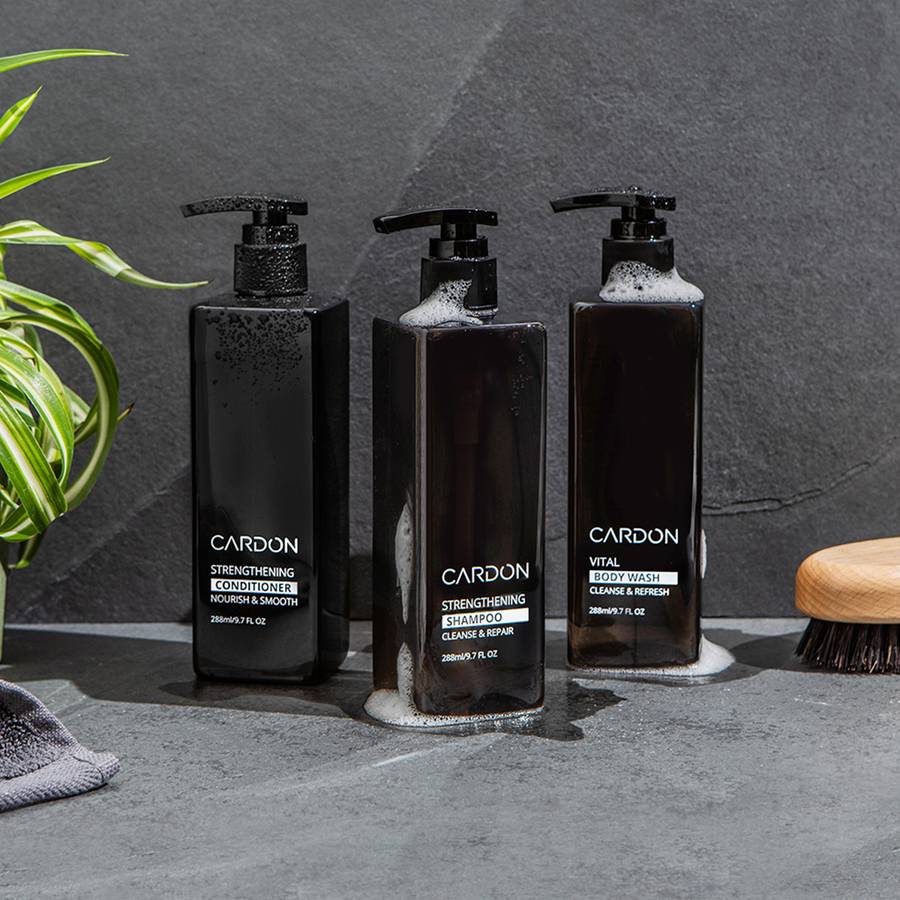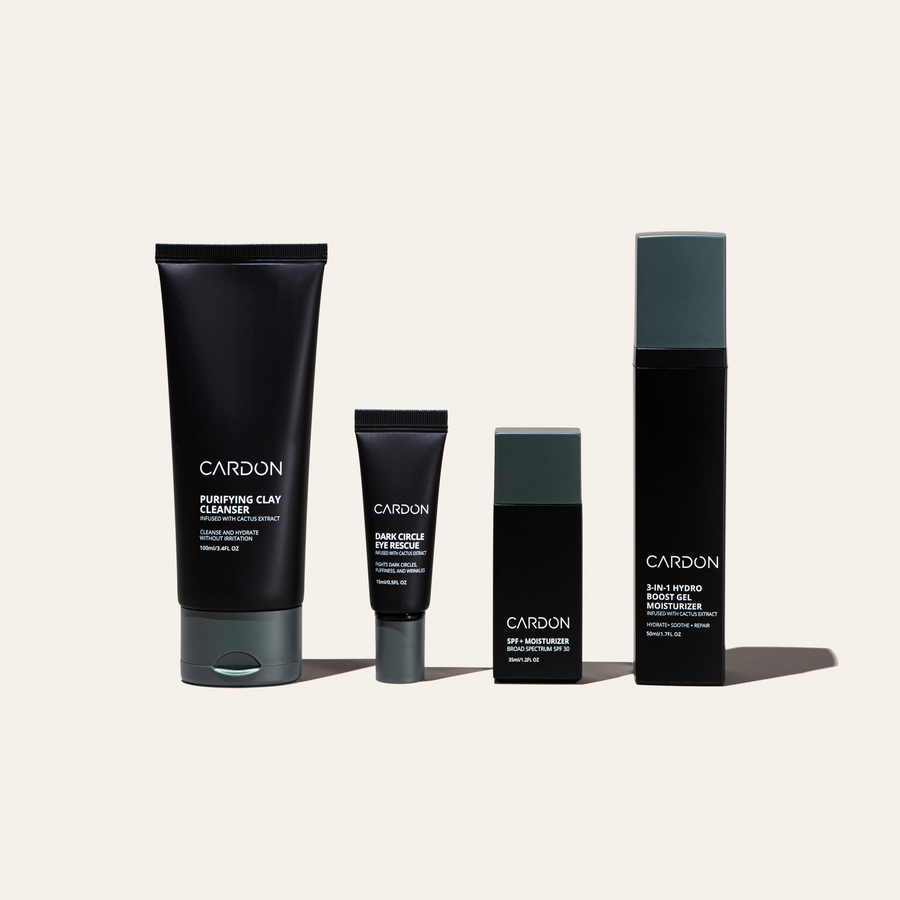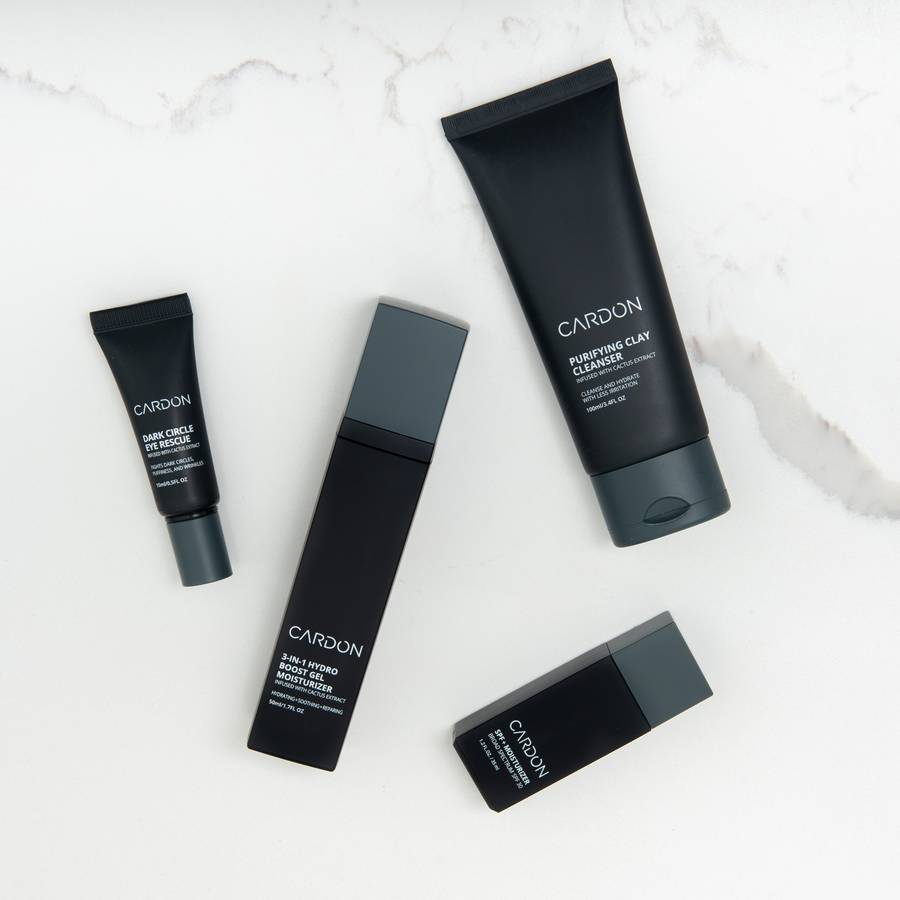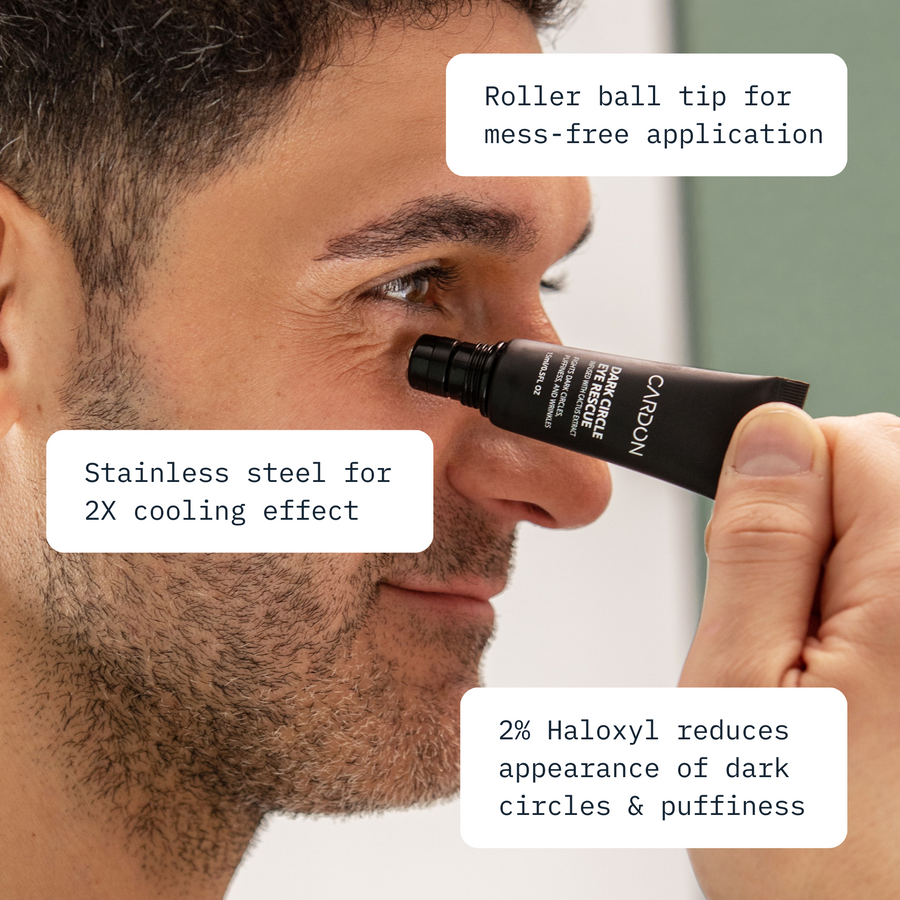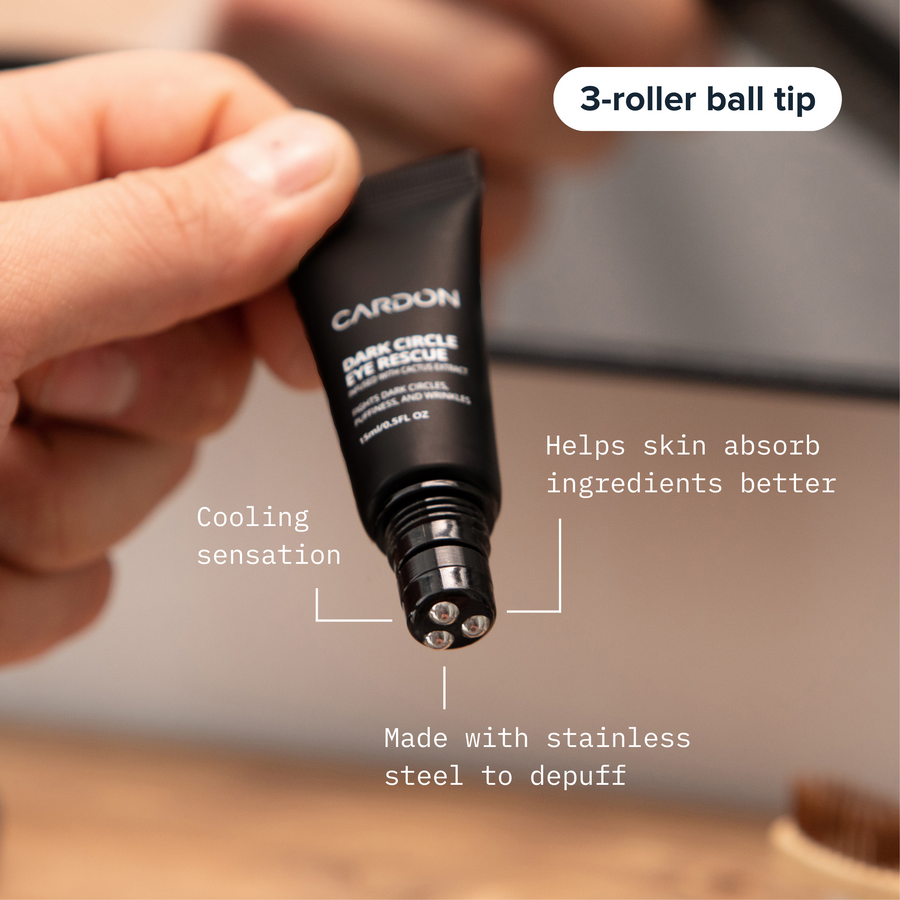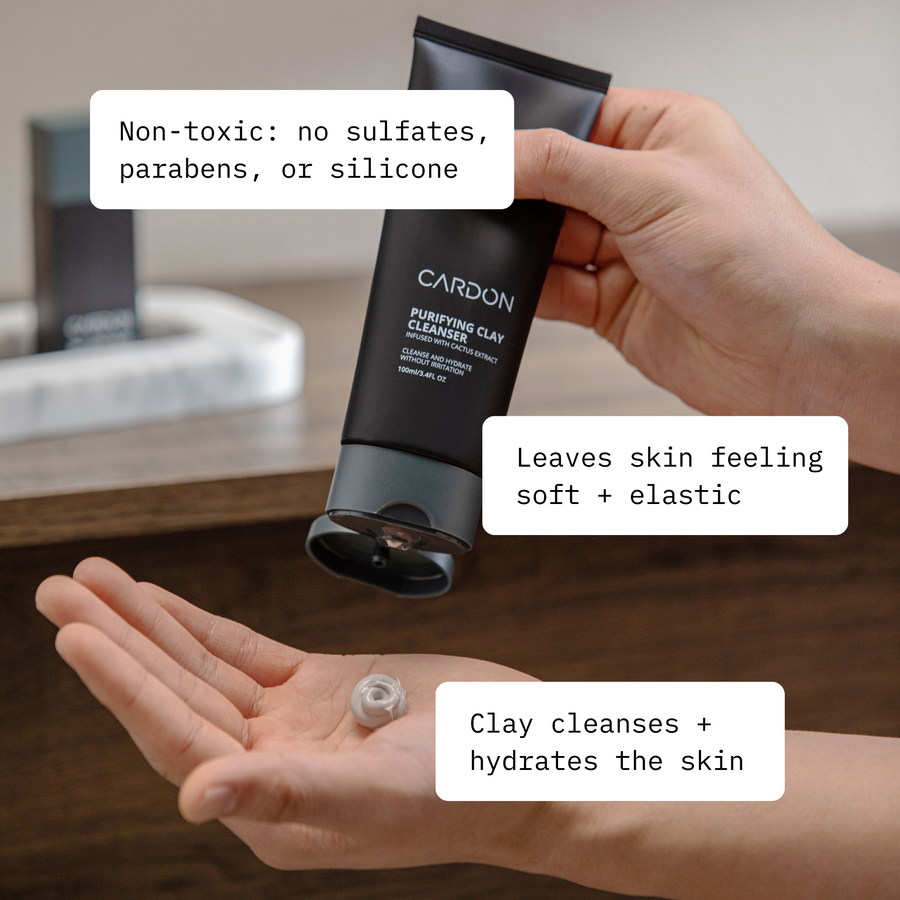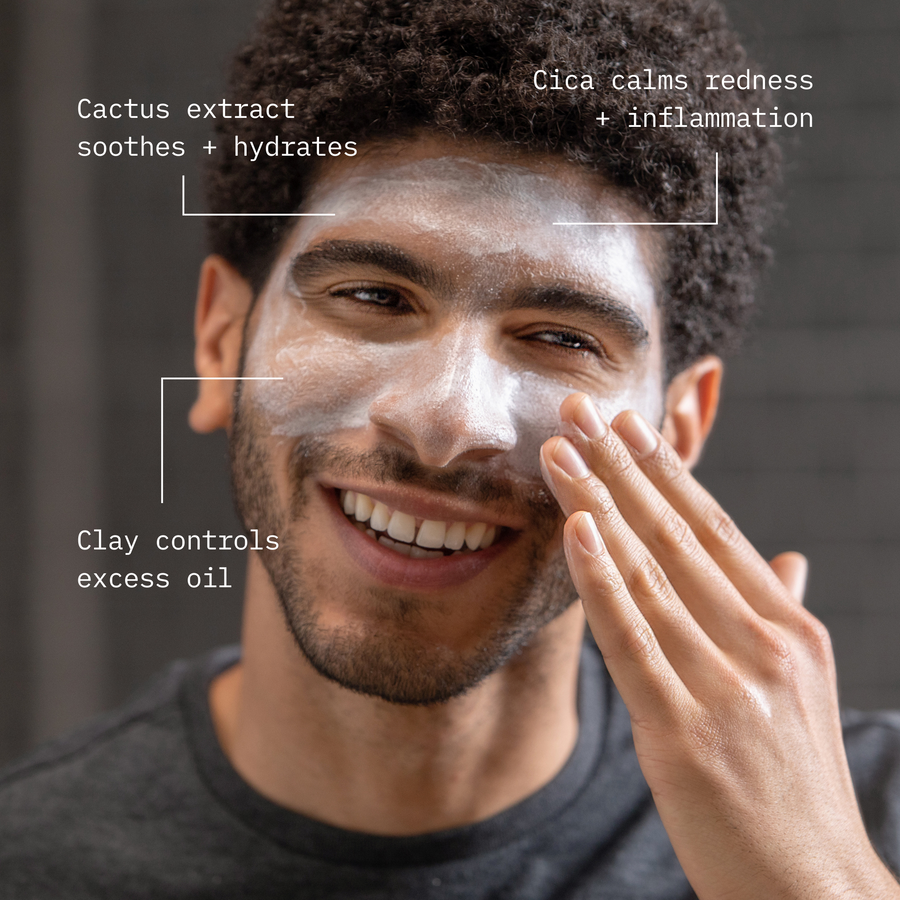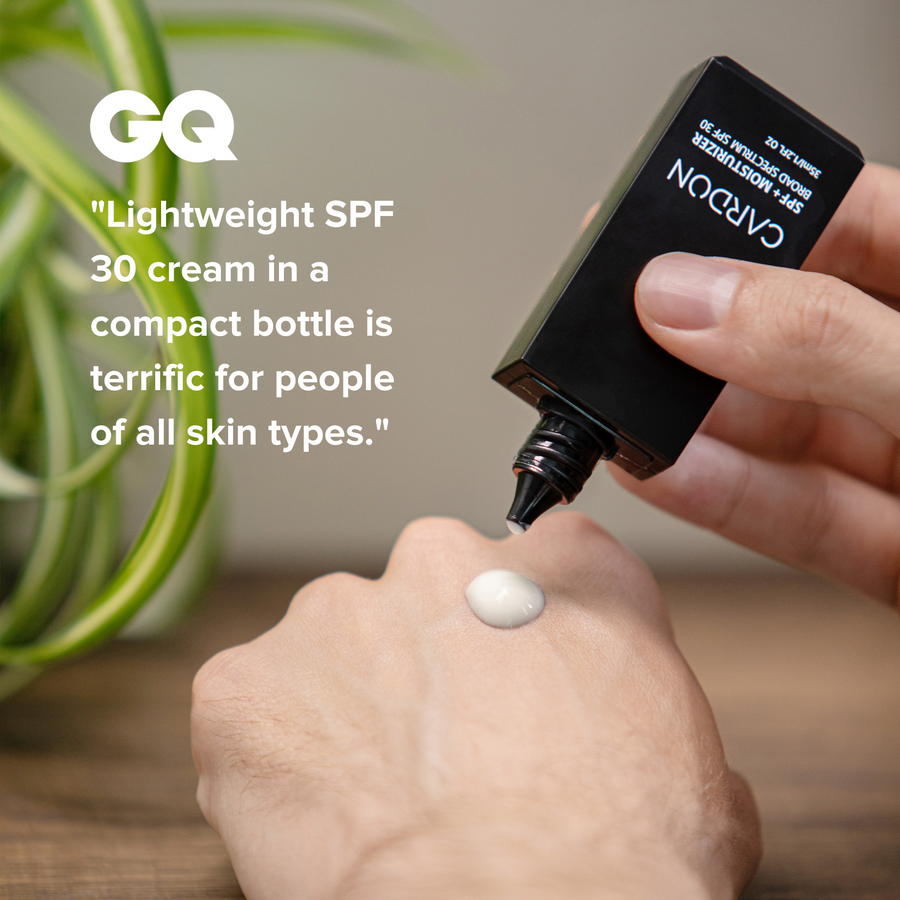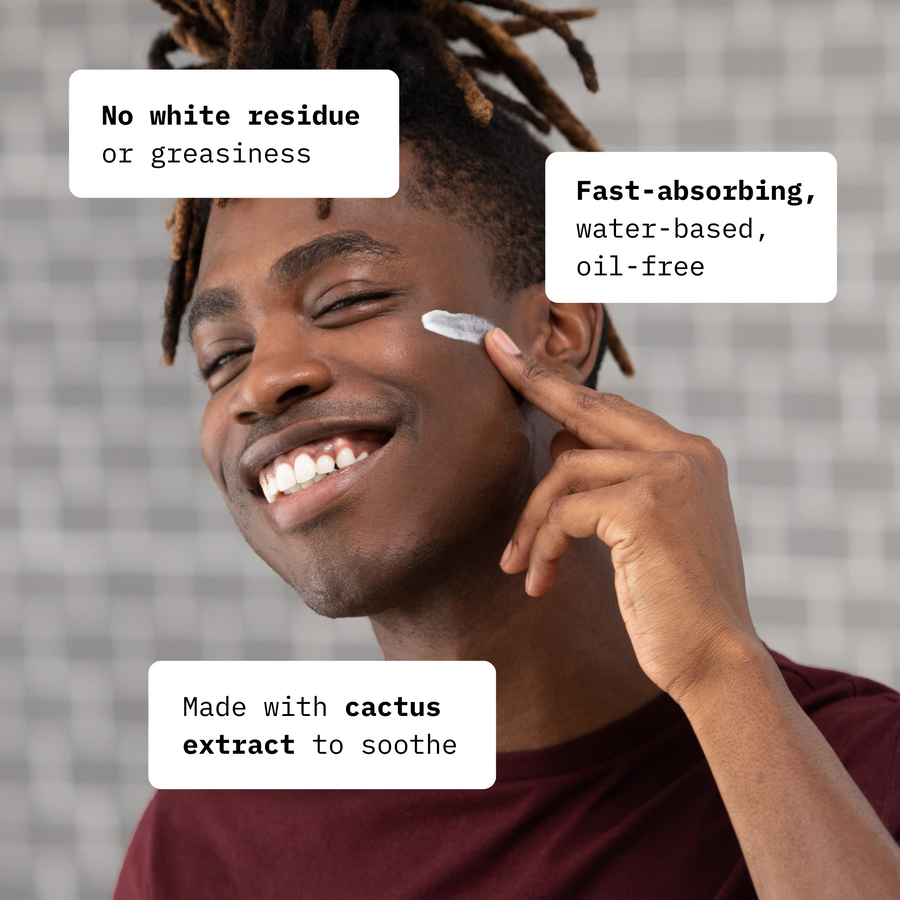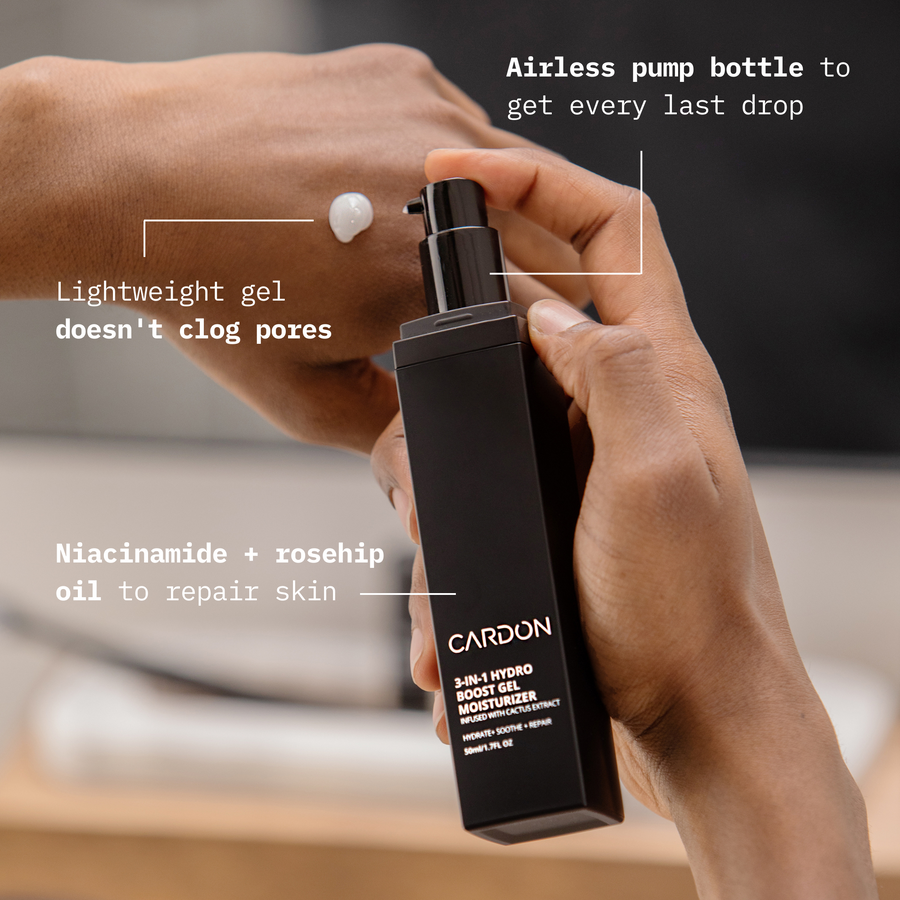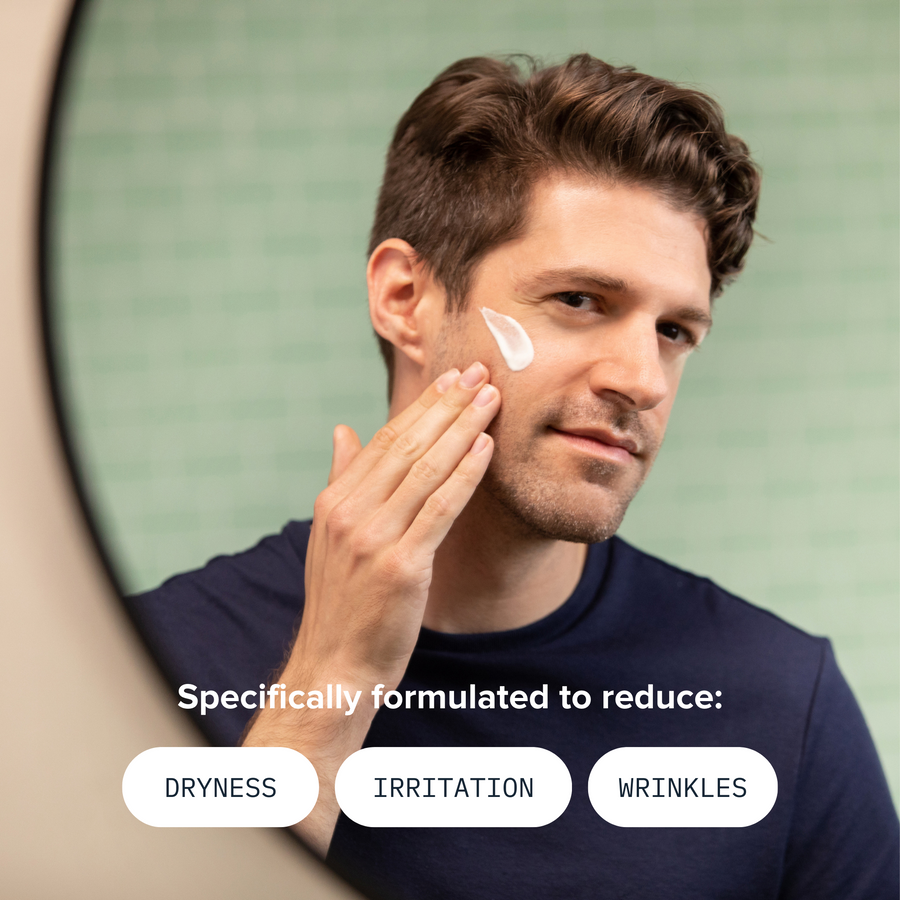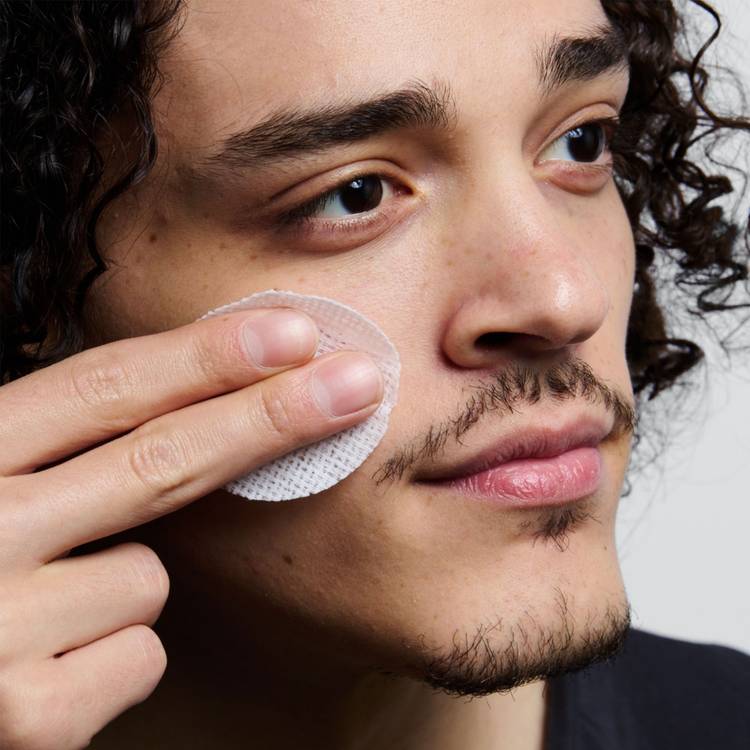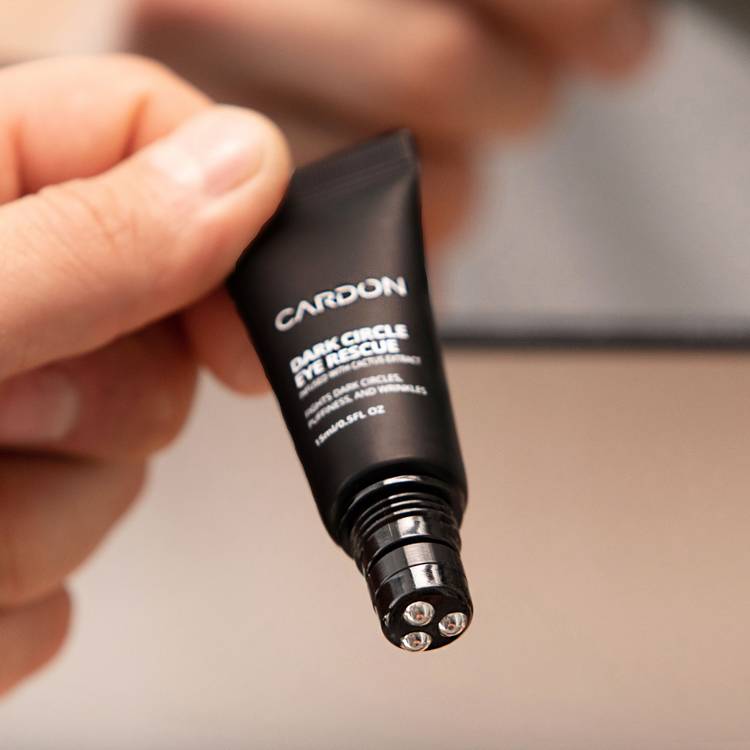The Best Skin Care Routine for Men is Simple and Effective
The best skincare routine for men isn’t overly complicated, because a little goes a long way with these products. Here is the best men’s skincare regimen, hands down.

Smart skincare doesn’t need to be complicated. In fact, the best skin care routine for men proves that. It’s a basic skin regimen, and only takes a few products to maintain clear, healthy skin.
Keep in mind that no two people should have the exact same skin care routine. That’s because we all have different skin types (like oily skin, acne-prone skin, dry or sensitive skin, etc), and it’s important to make sure your products and routine work with your skin, as opposed to aggravating any existing problems—or without causing new problems entirely.
With that in mind, there are many products that are specifically formulated for all skin types, usually by considering things like sensitivities and proneness to blemishes, with extremely hydrating and oil-free moisturizers (as well as a non-dehydrating cleanser). Oh, and one thing that is supremely universal: sun protection. Make sure your regimen has SPF in it, and that you lather that SPF on your face every single day. (More on that below.)
And again, some people’s skin care routines are long, ornate, and even intimidating. But don’t focus on those folks; an advanced regimen can certainly improve results, but only nominally compared to the basic routine. What matters is that you have a foundational skincare routine in the first place. And this basic skincare routine for men is just two or three steps. It promotes clear, healthy complexion and prevents everything from inflammation to dryness, as well as greasy skin and hyperpigmentation. Here is a look at that regimen, and how it alters (ever so slightly) from morning to midday to night.
Step 1: Cleanse
For morning and night, you’ll need a cleanser. And regardless of your skin type (dry, oily, or anything in between), it’s important to have a face wash that delivers nourishing properties to the skin as it simultaneously deep cleans the pores: A clay cleanser, for example, can be both gentle and hydrating on skin while also being adept at removing oil and grime from deep within pores. (This is why Cardon chose clay as a key ingredient in its cleanser.)
In the Morning
When you wake up, you’ve got to wash your face right away. You’ve been sleeping on your pillows night after night, which have soaked up your sweat and oils, and thus they’re likely harboring lots of bacteria. (Bonus hygiene tip: Wash your pillowcases weekly, and your bed sheets every other week.) It’s important to “reset” the canvas for the products you’re about to apply before the day unfolds.
Before Bed
You’ve also got to wash away the entire day’s accumulation of oil, grime, sweat, and dirt before falling asleep. If not, you’ll layer all of these things onto your pillowcase and then press your also-dirty face into it for eight hours while you sleep. (Yes, we’re giving you the benefit of the doubt on the necessary 8 hours’ rest. It will also make a huge difference in your complexion as opposed to getting, say, 6 hours or less every night.) And when you cleanse before bed, you’ll again “reset the canvas” for the other products applied right after. Plus, with this p.m. reset, you’re likelier to wake with breakouts, enlarged pores, or that not-so-fresh feeling.Before Bed


Step 2: Moisturize (Possibly with a Separate Cream for Day and Night)
Next you need to moisturize the skin, both morning and night. There is more purpose to using moisturizer than simply adding hydration. Moisturizer boosts the “barrier function” of the skin, in that it works as a “double epidermis”. (Try saying "double epidermis" ten times fast.) It does so in one way by protecting skin from environmental toxins, like pollution, that otherwise age our appearance and damage cells. In addition to that defense, the barrier boost also prevents excess water loss from beneath the skin. Simply put, moisturizer prevents bad stuff from getting in, and good stuff from getting out.
Look for moisturizers that feature nourishing ingredients, from plant extracts to vitamins. Each moisturizer’s formula will deliver something different to the skin based on which of these ingredients is used, and each brand should be able to articulate why they chose the ones they did. Take Cardon as an example, which uses cactus extract as a key ingredient in each of its products. This ingredient is known for its soothing, healing properties, and gives a moisturizer that much more muscle.
Your moisturizer should differ from morning to night. So, in theory, you should have two moisturizers on your sinkledge. (Though there is one possible exception.) Here is how they should differ.
Morning Moisturizer
If you keep two separate moisturizers, then the morning moisturizer really should include broad-spectrum SPF of at least 30 or greater. SPF gives you an invisibility cloak of sorts, at least from the omnipresent and oppressive UV rays that cause skin to age faster than otherwise normal. Pick a lightweight, water-based, fast-absorbing SPF moisturizer for daily use—like Cardon’s Daily SPF + Moisturizer—so that it doesn’t leave any greasy residue on the skin or cause excess sweating. This type of SPF moisturizer is good for all skin types, too. In particular, anyone dealing with oily skin will appreciate how it doesn’t aggravate the situation. More on SPF below.


This morning moisturizer should be reapplied midday, too. For one, the barrier-boosting powers of the product will have started to wane, but also, SPF typically only wears for a couple hours. Assuming you ditch the office for a lunch break, that’s the perfect time for a second application, or a couple hours later to precede your commute home. Just wash your hands and splash some water on your face, then let it dry before reapplying.
Shop the product

Daily SPF + Moisturizer
$24.00
Night Cream
You obviously don’t need SPF at bedtime, unless you live in Norway and it’s summer and you sleep with the blinds drawn like a crazy person. Also, at bedtime, you want something a little thicker and denser that will wear longer than a typical daytime option, and that promises to help repair the skin. This is important, the repairing bit. Because as you sleep, your body is healing and your cells are regenerating.


A night cream should also double down on preventing water loss by shielding skin from cold or dry air. We also suggest sleeping with a humidifier in cool, dry climates or seasons in order to prevent the air around you from drying your skin while you sleep. As a bonus, you’ll also wake up with less repugnant breath.
Shop the product

Hydro Boost Gel Moisturizer
$35.00
SPF
Here’s our dedicated ditty on sun protection. Obviously, it’s only necessary for daytime, but it’s also necessary all year round. That’s because the sun’s harmful ultraviolet rays are active every day, and they mutate our skin cells and can lead to premature skin aging (that’s UVA rays) as well as skin cancer (that’s UVB rays). On top of that, UVA rays can also go through glass, meaning the sun can still age your skin prematurely and aggressively even if you’re sitting indoors or inside the car. Yes, it’s kind of like they’re stalking you.
The American Academy of Dermatology and the FDA both agree that SPF 30 is the best baseline coverage everyone should use. This is because SPF 30 provides 97% protection from the sun, whereas SPF 15 only offers 93% coverage. SPF 50 only moves things to 98%, which could make a huge difference for fair-skinned individuals, but will be nominal for most others. So, that biggest, surest coverage is SPF 30—again, every single day.
And if you don’t use an SPF moisturizer by day, make sure to get a dedicated facial sunscreen to apply over the top of your morning moisturizer. (We still think it’s easier and more cost effective to just use an SPF 30 moisturizer every day…)
What Products Do Men Need for Skin Care?
Here is a recap of the above basic skincare routine for men, but built into a schedule.
Morning: Cleanser, Moisturizer, SPF (You can combine the last two with an SPF 30 moisturizer.)
Midday: Moisturizer and SPF again
Before Bed: Cleanser, Moisturizer (This time with a reparative nighttime hydrator.)
Some results will be near immediate (like hydration and softness) while others will show after months of continued use (like anti-aging benefits). You’ll need to maintain the skincare regimen in order to maintain results (and to keep building on them). So remember: This is a lifetime habit you’re building, not a sprint. And many of the best results are never noticeable, which is exactly the point: You’re preventing damage and reducing the signs of aging, but hopefully when you’re 60, you’ll look 20 years younger than all your peers.
Adding Nuance or Addressing Unique Skincare Concerns
Once you’ve mastered this basic skin care for men, you can then target the specifics of your own grooming needs. A more advanced skincare routine can include eye creams or gels for dark circles, fine lines, and puffy eyes; targeted treatments for acne or dark spots; face masks for deep cleansing or deep moisture; an anti-aging regimen that includes serums and retinol to help skin look firm, bright, and youthful; and much more. But don’t stress about that stuff now—focus on mastering the basics, and you can add complexities as you see fit and necessary.
Shop the collection
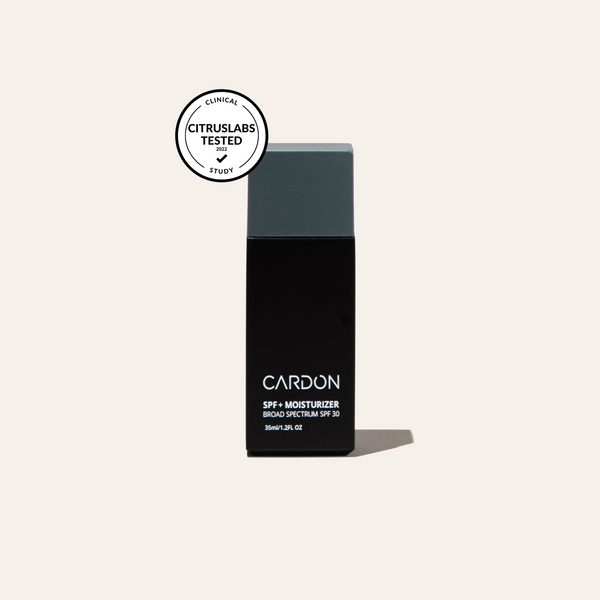
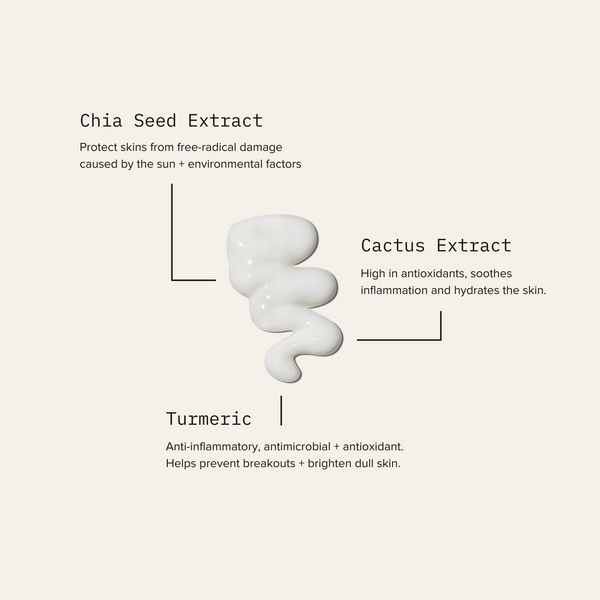
Daily SPF + Moisturizer
good for:
We’re playing favorites—this is the #1 most important step in your skincare routine. Stave off sun damage for healthy, youthful skin for years to come with our Daily SPF + Moisturizer, acclaimed best lightweight moisturizer with SPF by GQ!
Its fast-absorbing, lightweight formula uses Cactus and Chia Seed Extract to provide all-day hydration, plus Broad Spectrum SPF 30 to protect against UVA and UVB rays with ZERO residue or white cast.
“After trying several different brands, I finally found a product I like. It's lightweight, not sticky, and has a very subtle, fresh scent. Will definitely order again. I highly recommend this product.” - Sara T.
Daily SPF + Moisturizer
good for:
We’re playing favorites—this is the #1 most important step in your skincare routine. Stave off sun damage for healthy, youthful skin for years to come with our Daily SPF + Moisturizer, acclaimed best lightweight moisturizer with SPF by GQ!
Its fast-absorbing, lightweight formula uses Cactus and Chia Seed Extract to provide all-day hydration, plus Broad Spectrum SPF 30 to protect against UVA and UVB rays with ZERO residue or white cast.
“After trying several different brands, I finally found a product I like. It's lightweight, not sticky, and has a very subtle, fresh scent. Will definitely order again. I highly recommend this product.” - Sara T.
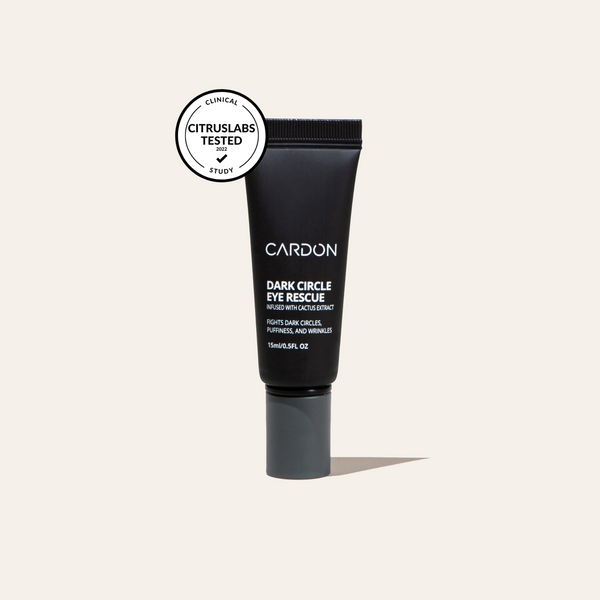
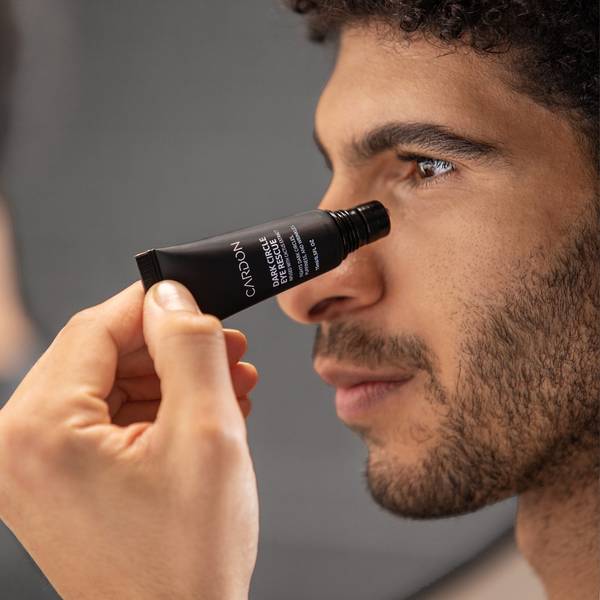
seller
Dark Circle Eye Rescue
good for:
The Dark Circle Eye Rescue cream hydrates and brightens the skin around the eyes to reduce the appearance of dark circles and wrinkles.
The stainless steel rollerball makes it easy to apply, while also working to de-puff eyes. Acclaimed best eye cream for dark circles by Gear Patrol!
Dark Circle Eye Rescue
good for:
The Dark Circle Eye Rescue cream hydrates and brightens the skin around the eyes to reduce the appearance of dark circles and wrinkles.
The stainless steel rollerball makes it easy to apply, while also working to de-puff eyes. Acclaimed best eye cream for dark circles by Gear Patrol!
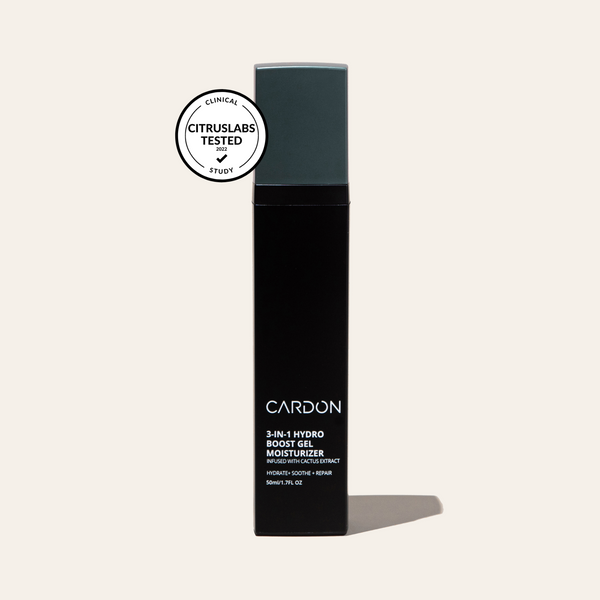
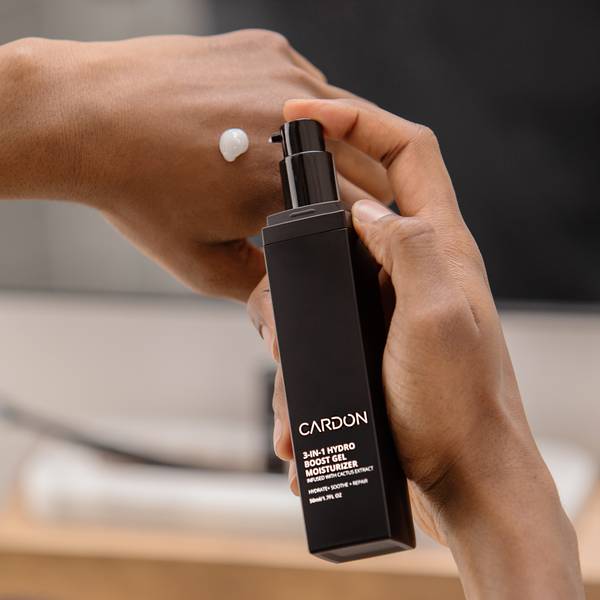
Hydro Boost Gel Moisturizer
good for:
Like a night cap for your skin, our Hydro Boost Gel Moisturizer is the ideal way to finish your evening.
This 3-in-1 gel moisturizer uses Cactus Extract and Rosehip Oil to put in the work while you snooze—hydrating, soothing, and repairing your skin all night long.
“This easily became part of my nightly routine. I've started to notice my face looking healthier and smoother. As a 32 y/o, you start to notice wrinkles creeping in, this helps me keep them at bay.” - Andrew S.
Hydro Boost Gel Moisturizer
good for:
Like a night cap for your skin, our Hydro Boost Gel Moisturizer is the ideal way to finish your evening.
This 3-in-1 gel moisturizer uses Cactus Extract and Rosehip Oil to put in the work while you snooze—hydrating, soothing, and repairing your skin all night long.
“This easily became part of my nightly routine. I've started to notice my face looking healthier and smoother. As a 32 y/o, you start to notice wrinkles creeping in, this helps me keep them at bay.” - Andrew S.
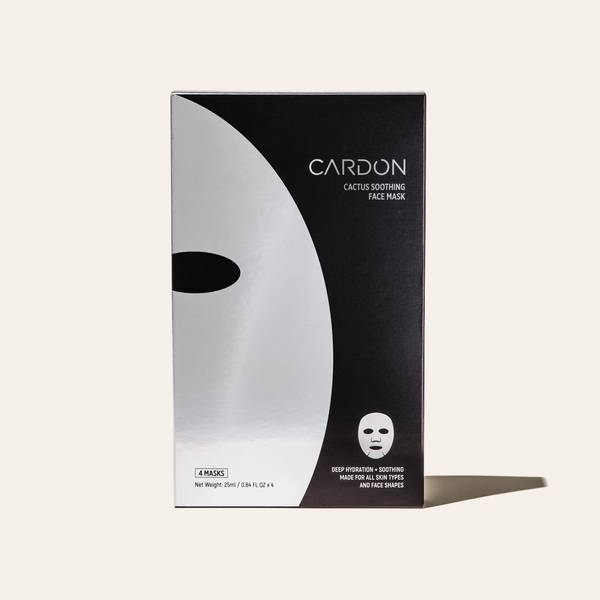
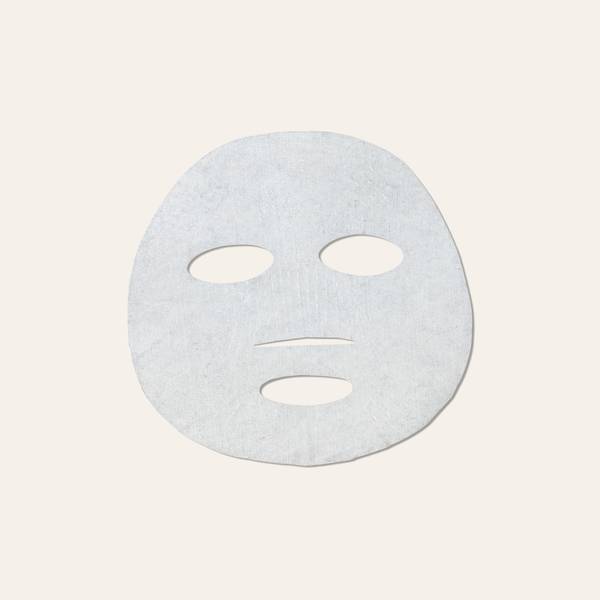
Cactus Soothing Face Mask
good for:
Everyone deserves some self-care time—may we recommend Cactus Soothing Face Mask and chill?
This immediate hydration boost is supercharged with healing ingredients like Cactus Extract and Cica to soothe redness and irritation while reducing fine lines. Perfect for a post-shave treatment or whenever you need a moment for you.
“Stress and late nights working have left my skin looking a bit rough, but this mask was perfect for some at-home spa relaxation. My skin definitely looks a lot more moisturized and refreshed.” - Melody C.
Cactus Soothing Face Mask
good for:
Everyone deserves some self-care time—may we recommend Cactus Soothing Face Mask and chill?
This immediate hydration boost is supercharged with healing ingredients like Cactus Extract and Cica to soothe redness and irritation while reducing fine lines. Perfect for a post-shave treatment or whenever you need a moment for you.
“Stress and late nights working have left my skin looking a bit rough, but this mask was perfect for some at-home spa relaxation. My skin definitely looks a lot more moisturized and refreshed.” - Melody C.
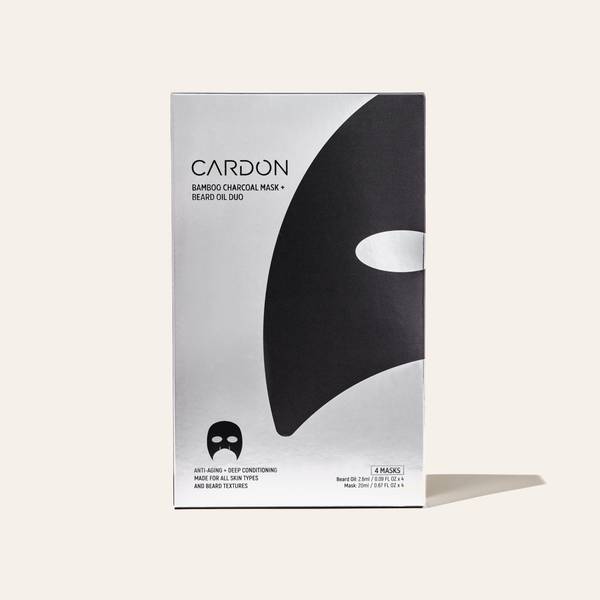
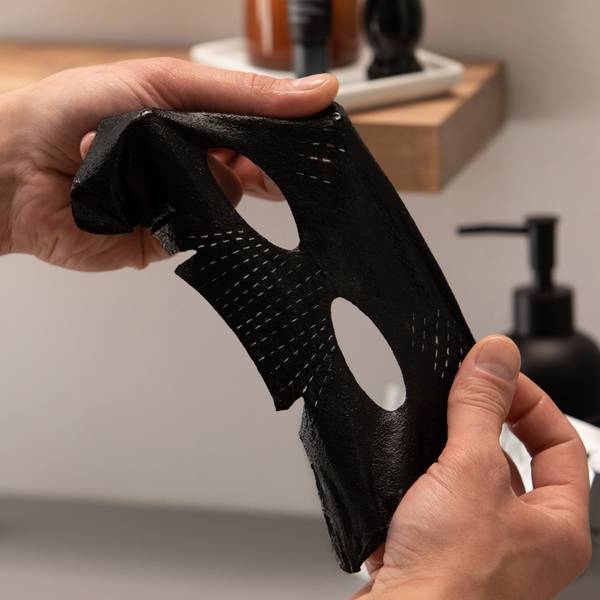
GIFT
Bamboo Charcoal Sheet Mask + Beard Oil
good for:
Often imitated, never duplicated, this innovative sheet mask is the first of its kind and an Ask Men Grooming award winner in the Best Sheet Mask category!
Half mask, half beard treatment, the Bamboo Charcoal Sheet Mask + Beard Oil gives each section of skin (and beard) just what it needs: A detoxifying, hydrating charcoal-infused mask for your skin and a nourishing beard oil blend for the ultimate beard care. Plus, the mask is designed with expandable nose slits to fit any face size and shape.
“I really enjoyed this face mask from Cardon. The beard oil applies easily and the half mask for your cheeks, nose, and forehead fits well and stays in place. My skin looks and feels great after removing the mask. Well done, Cardon!” - Tyler S.
Bamboo Charcoal Sheet Mask + Beard Oil
good for:
Often imitated, never duplicated, this innovative sheet mask is the first of its kind and an Ask Men Grooming award winner in the Best Sheet Mask category!
Half mask, half beard treatment, the Bamboo Charcoal Sheet Mask + Beard Oil gives each section of skin (and beard) just what it needs: A detoxifying, hydrating charcoal-infused mask for your skin and a nourishing beard oil blend for the ultimate beard care. Plus, the mask is designed with expandable nose slits to fit any face size and shape.
“I really enjoyed this face mask from Cardon. The beard oil applies easily and the half mask for your cheeks, nose, and forehead fits well and stays in place. My skin looks and feels great after removing the mask. Well done, Cardon!” - Tyler S.
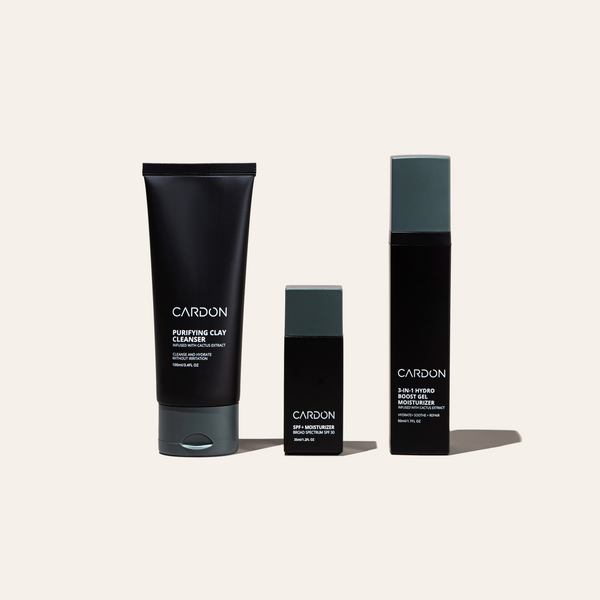
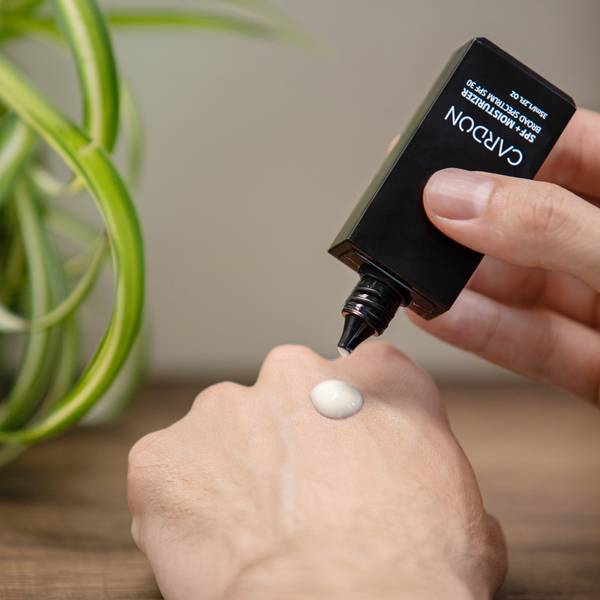
Beginners
Essentials Skincare Set
good for:
Everything you need, nothing you don’t—the Essentials Set is your skincare starter pack. Just cleanse, moisturize, and protect. We took the guesswork out of developing a skincare routine. This is all you need for everyday skin health.
Includes Steps:
- 01 Purifying Clay Cleanser
- 02 Daily SPF + Moisturizer
- 03 Hydro Boost Gel Moisturizer
Never go empty! Subscribe + Save 10%
Essentials Skincare Set
good for:
Everything you need, nothing you don’t—the Essentials Set is your skincare starter pack. Just cleanse, moisturize, and protect. We took the guesswork out of developing a skincare routine. This is all you need for everyday skin health.
Includes Steps:
- 01 Purifying Clay Cleanser
- 02 Daily SPF + Moisturizer
- 03 Hydro Boost Gel Moisturizer
Never go empty! Subscribe + Save 10%
.png?v=1701688836389&options=w_600)
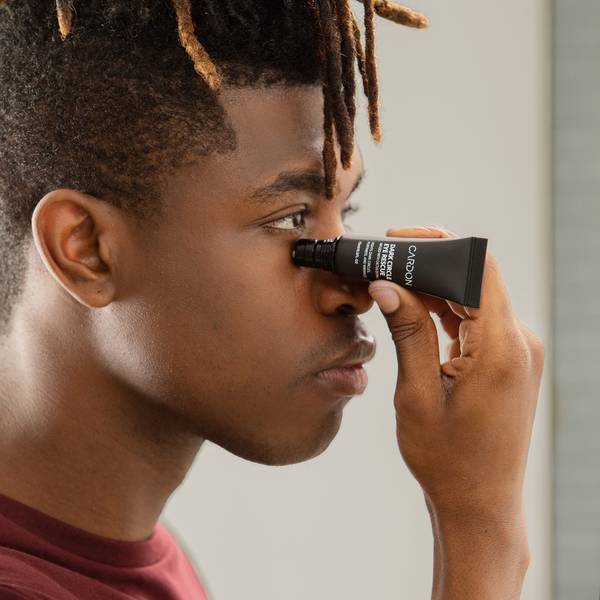
Dark Circles Skincare Set
good for:
All work and no play makes for dull skin.
The Dark Circles Skincare Set is perfect for those looking to brighten and revive dull and tired looking skin. Cleanses debris and grime from the day, depuffs and treats under eye bags, and rehydrates while soothing the skin in your sleep.
Includes Steps:
- 01 Purifying Clay Cleanser
- 02 Dark Circle Eye Rescue
- 03 Hydro Boost Gel Moisturizer
Never go empty! Subscribe + Save 10%
Dark Circles Skincare Set
good for:
All work and no play makes for dull skin.
The Dark Circles Skincare Set is perfect for those looking to brighten and revive dull and tired looking skin. Cleanses debris and grime from the day, depuffs and treats under eye bags, and rehydrates while soothing the skin in your sleep.
Includes Steps:
- 01 Purifying Clay Cleanser
- 02 Dark Circle Eye Rescue
- 03 Hydro Boost Gel Moisturizer
Never go empty! Subscribe + Save 10%
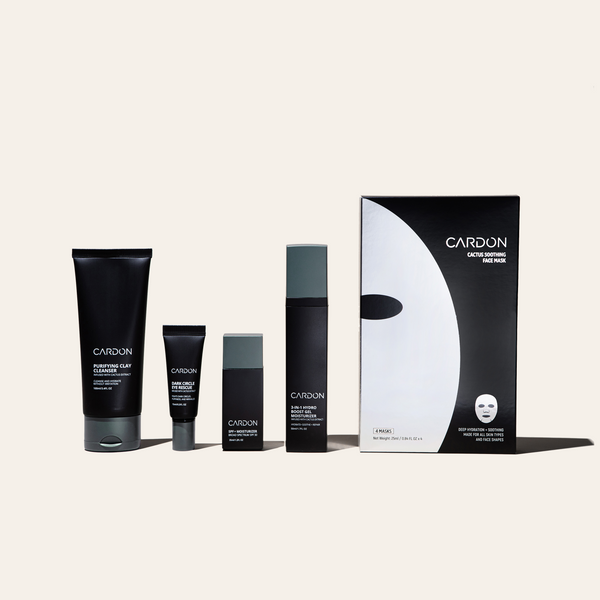
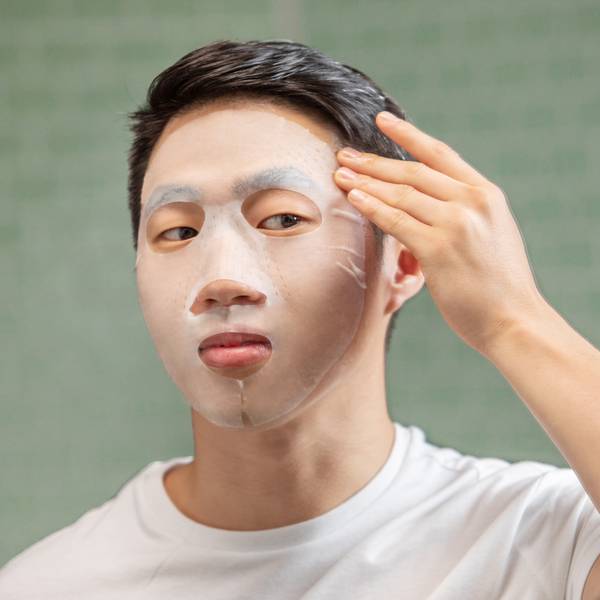
Dry Skin Set
good for:
Skin feeling a bit thirsty? The Dry Skin Set was crafted specifically for those with a dry skin type.
If you deal with flakiness, dull complexion, visible fine lines, red patches, or any combination of the above, this set was made for you. This is all you need to hydrate your skin—and keep it hydrated.
Includes Steps:
- 01
- 02 Dark Circle Eye Rescue
- 03 Daily SPF + Moisturizer
- 04 Hydro Boost Gel Moisturizer
- 05 Cactus Soothing Face Mask
Never go empty! Subscribe + Save 10%
Dry Skin Set
good for:
Skin feeling a bit thirsty? The Dry Skin Set was crafted specifically for those with a dry skin type.
If you deal with flakiness, dull complexion, visible fine lines, red patches, or any combination of the above, this set was made for you. This is all you need to hydrate your skin—and keep it hydrated.
Includes Steps:
- 01
- 02 Dark Circle Eye Rescue
- 03 Daily SPF + Moisturizer
- 04 Hydro Boost Gel Moisturizer
- 05 Cactus Soothing Face Mask
Never go empty! Subscribe + Save 10%
.png?v=1671636443230&options=w_600)
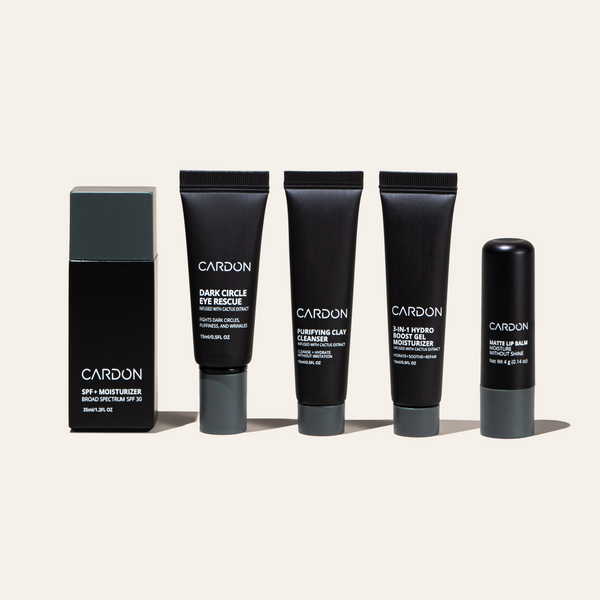
Limited Edition Jet Set Travel Kit
good for:
NEW! Limited Edition Jet Set Travel Kit with Dopp Kit.
With our new Jet Set Travel Kit, you can ditch the hotel samples for an on-the-go routine built with your skin in mind. These five simple steps cover all the bases– from cleansing your face to hydrating your lips– and they're all you need to pack before you hit the road. And, yes, it’s TSA-approved.
Includes Steps:
- 01 Daily SPF + Moisturizer
- 02 Dark Circle Eye Rescue
- 03 Clay Cleanser Sample, 15ml
- 04 Hydro Boost Gel Sample, 15ml
- 05 Matte Lip Balm
"I am a 55 years old and I have started to show my age on my face. After a long day in an aircraft cabin, this is exactly what my skin needs. It doesn’t take much time to complete and the results are worth it." – Jerri P.
Limited Edition Jet Set Travel Kit
good for:
NEW! Limited Edition Jet Set Travel Kit with Dopp Kit.
With our new Jet Set Travel Kit, you can ditch the hotel samples for an on-the-go routine built with your skin in mind. These five simple steps cover all the bases– from cleansing your face to hydrating your lips– and they're all you need to pack before you hit the road. And, yes, it’s TSA-approved.
Includes Steps:
- 01 Daily SPF + Moisturizer
- 02 Dark Circle Eye Rescue
- 03 Clay Cleanser Sample, 15ml
- 04 Hydro Boost Gel Sample, 15ml
- 05 Matte Lip Balm
"I am a 55 years old and I have started to show my age on my face. After a long day in an aircraft cabin, this is exactly what my skin needs. It doesn’t take much time to complete and the results are worth it." – Jerri P.
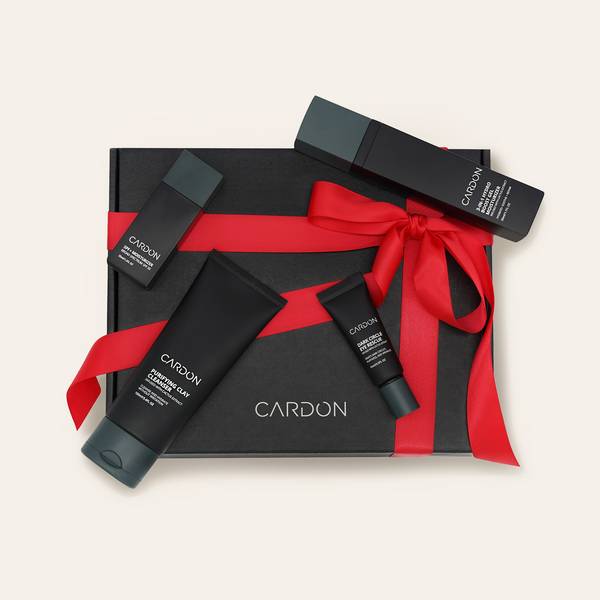
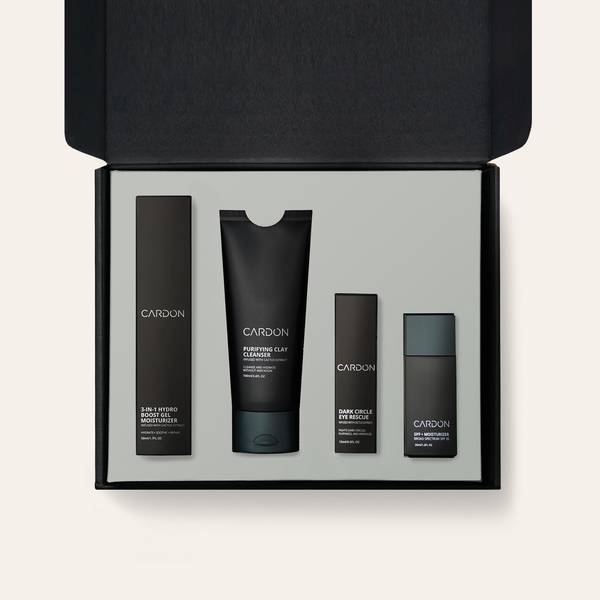
EDITION
GIFT BOX
Limited Edition Gift Set
good for:
This gift set is complete with our bestselling anti-aging products to protect skin all day long, while repairing skin overnight. Targets dark circles, fine lines, and other signs of premature aging.
*Comes ready to gift in our signature gift box.
Includes Steps:
- 01 Purifying Clay Cleanser
- 02 Dark Circle Eye Rescue
- 03 Daily SPF + Moisturizer
- 04 Hydro Boost Gel Moisturizer
"There is no better present to give an older brother than the gift of perfect skin care. I don't know who will like it more him or his wife. And, of course, I bought more for myself." - David N. | Age: 45-54
Limited Edition Gift Set
good for:
This gift set is complete with our bestselling anti-aging products to protect skin all day long, while repairing skin overnight. Targets dark circles, fine lines, and other signs of premature aging.
*Comes ready to gift in our signature gift box.
Includes Steps:
- 01 Purifying Clay Cleanser
- 02 Dark Circle Eye Rescue
- 03 Daily SPF + Moisturizer
- 04 Hydro Boost Gel Moisturizer
"There is no better present to give an older brother than the gift of perfect skin care. I don't know who will like it more him or his wife. And, of course, I bought more for myself." - David N. | Age: 45-54
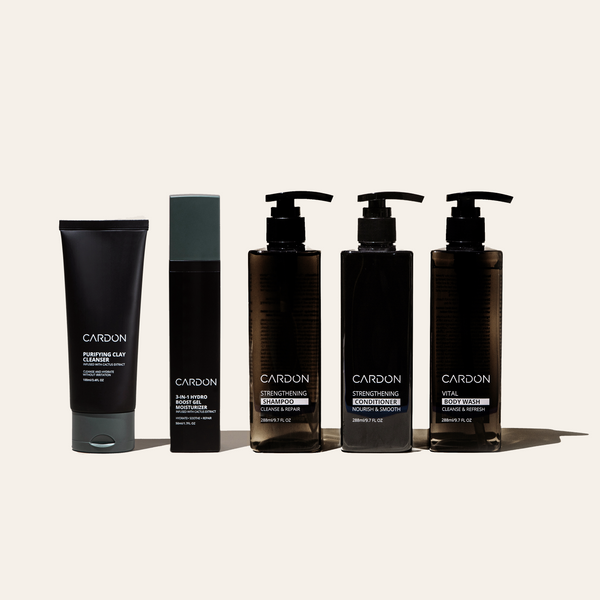
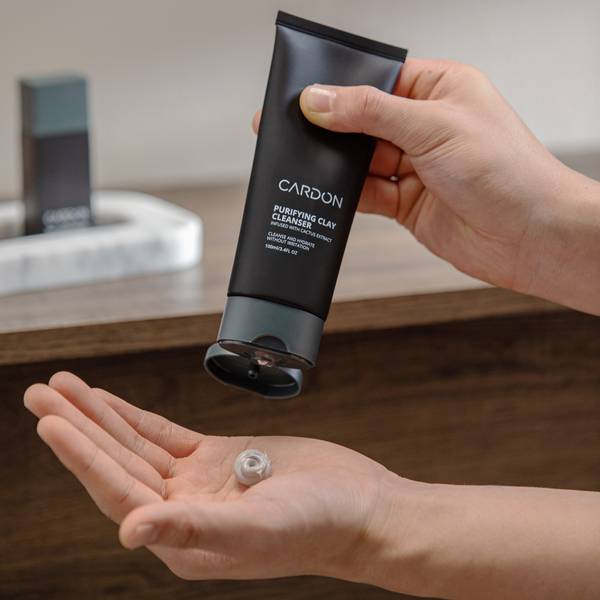
NEW
NEW
+ Hair
+ Body
Head-to-Toe Set
good for:
We've got you covered head to toe, literally. This set comes with a complete skin and hair care routine.
Includes our invigorating shampoo and conditioner to prevent hair loss, refreshing body wash to treat body acne, clay-infused face wash to deeply cleanse the face from debris, and lightweight gel moisturizer to soothe, rehydrate and repair skin while you sleep.
It's about time you treated the rest of your body as good as you treat your face.
Includes Steps:
- 01 Purifying Clay Cleanser
- 02 Hydro Boost Gel Moisturizer
- 03 Hair Thickening + Strengthening Shampoo
- 04 Hair Thickening + Strengthening Conditioner
- 05 Vital Body Wash
Never go empty! Subscribe + Save 10%
Head-to-Toe Set
good for:
We've got you covered head to toe, literally. This set comes with a complete skin and hair care routine.
Includes our invigorating shampoo and conditioner to prevent hair loss, refreshing body wash to treat body acne, clay-infused face wash to deeply cleanse the face from debris, and lightweight gel moisturizer to soothe, rehydrate and repair skin while you sleep.
It's about time you treated the rest of your body as good as you treat your face.
Includes Steps:
- 01 Purifying Clay Cleanser
- 02 Hydro Boost Gel Moisturizer
- 03 Hair Thickening + Strengthening Shampoo
- 04 Hair Thickening + Strengthening Conditioner
- 05 Vital Body Wash
Never go empty! Subscribe + Save 10%
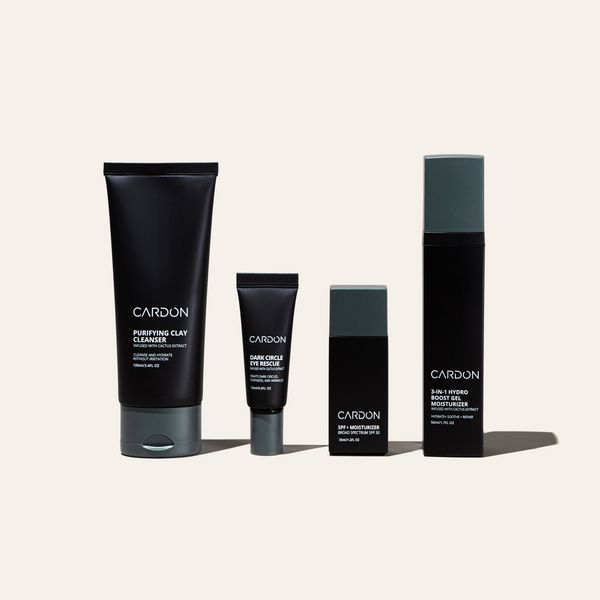
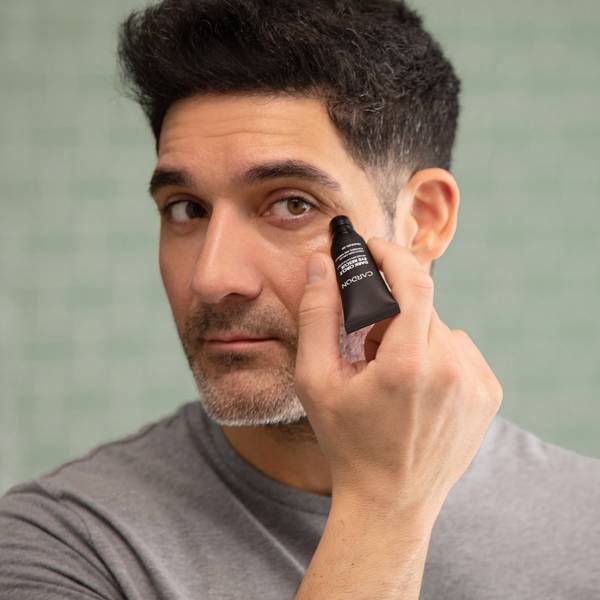
seller
Anti-Aging Skincare Set
good for:
Life comes at you fast. That’s why we developed our Anti-Aging Skincare Set full of just what you need to tackle fine lines, rough texture, and other signs of aging in the skin.
From protecting skin all day long to boosting its ability to repair and rebuild overnight, your past, present, and future selves will thank you.
Includes Steps:
- 01 Dark Circle Eye Rescue
- 02 Purifying Clay Cleanser
- 03 Daily SPF + Moisturizer
- 04 Hydro Boost Gel Moisturizer
Never go empty! Subscribe + Save 10%
Anti-Aging Skincare Set
good for:
Life comes at you fast. That’s why we developed our Anti-Aging Skincare Set full of just what you need to tackle fine lines, rough texture, and other signs of aging in the skin.
From protecting skin all day long to boosting its ability to repair and rebuild overnight, your past, present, and future selves will thank you.
Includes Steps:
- 01 Dark Circle Eye Rescue
- 02 Purifying Clay Cleanser
- 03 Daily SPF + Moisturizer
- 04 Hydro Boost Gel Moisturizer
Never go empty! Subscribe + Save 10%
Cardon Products Are
Easy to Use
We never create two products when we can achieve the same results with one. Cardon products are designed to be easy to use every day.
Backed By Korean Innovation
Korean R&D is two decades ahead of the rest of the world. Cardon products use the highest quality, most effective ingredients out there.
Non-Toxic
Finally, an ingredient label you can feel good about. Every ingredient in Cardon products is good for your skin, and easy on the mind.


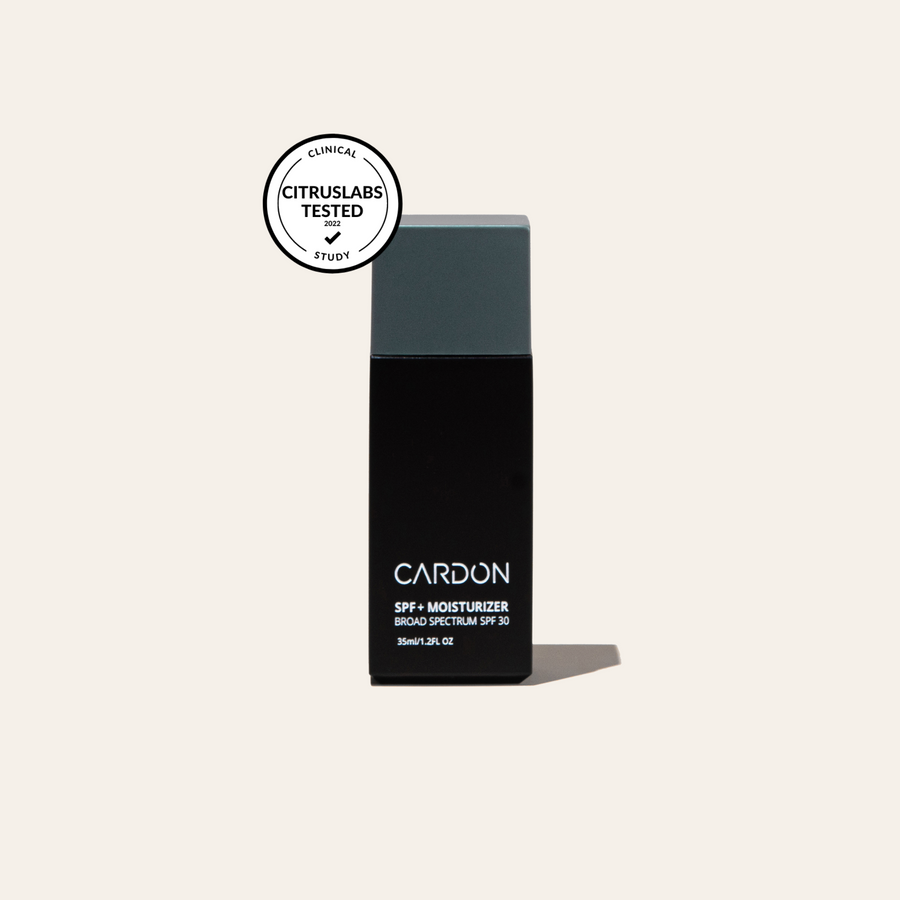
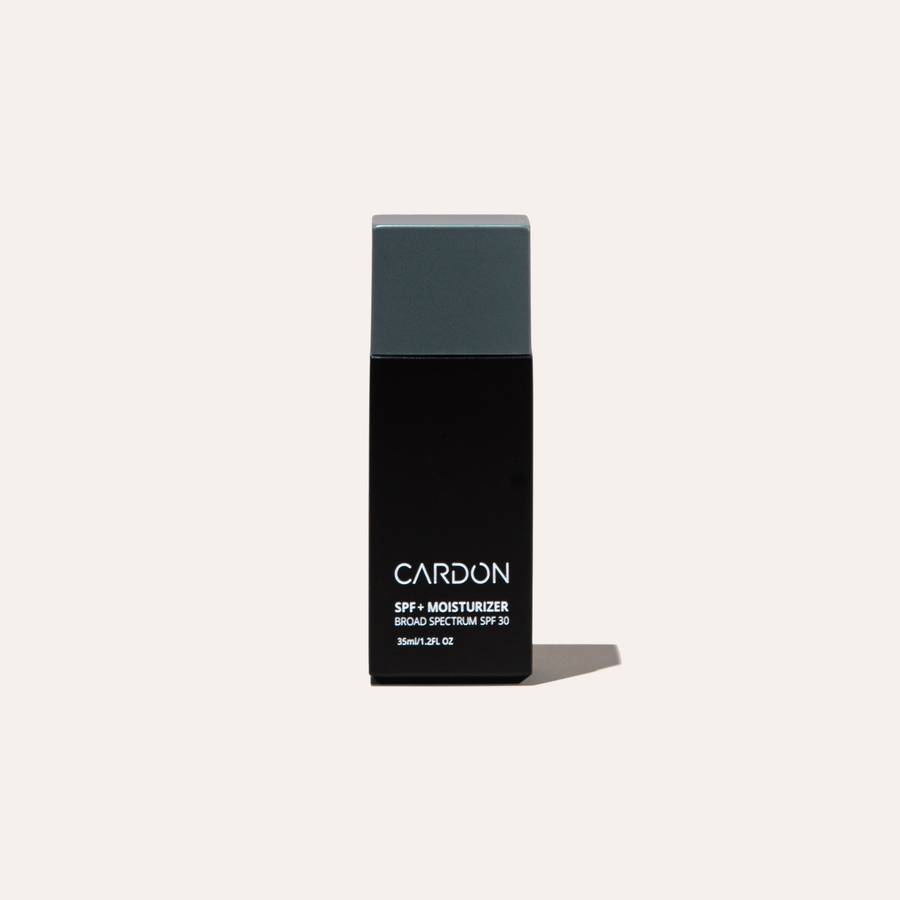
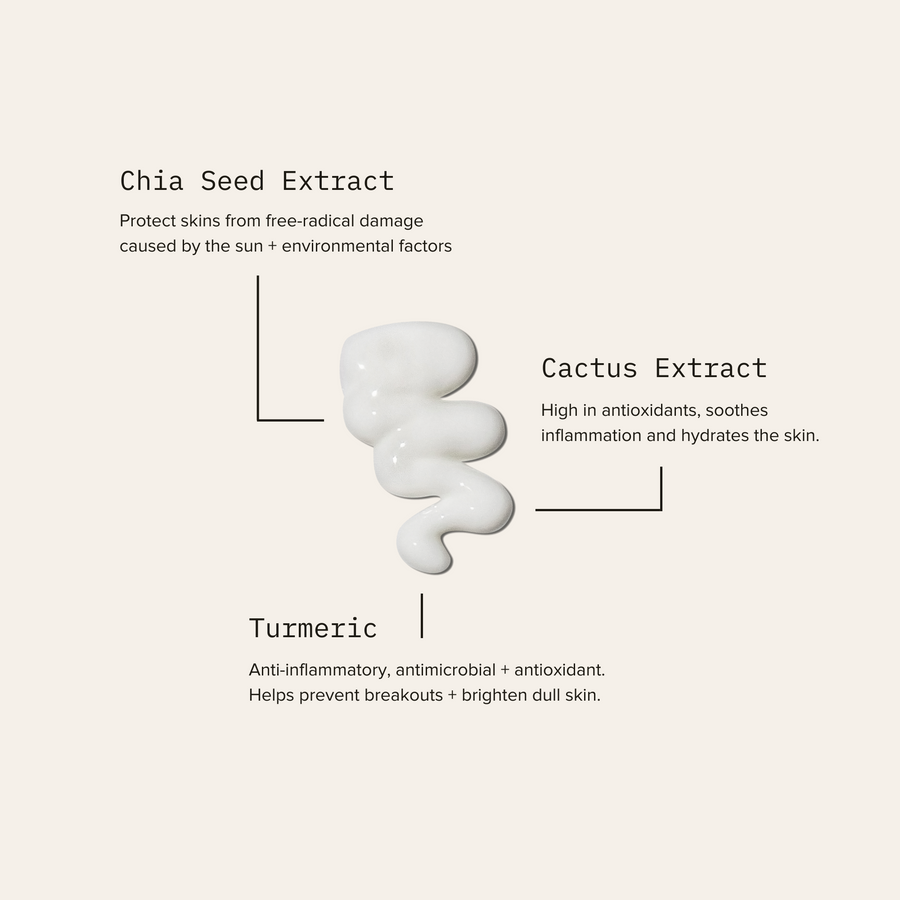
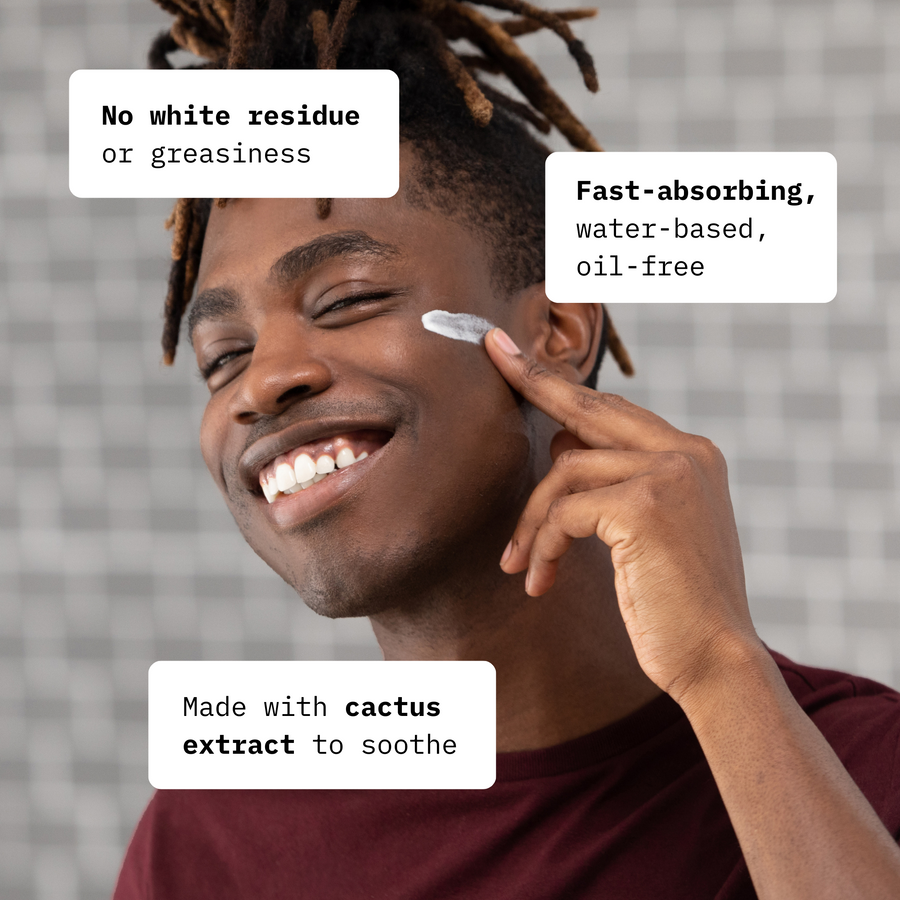
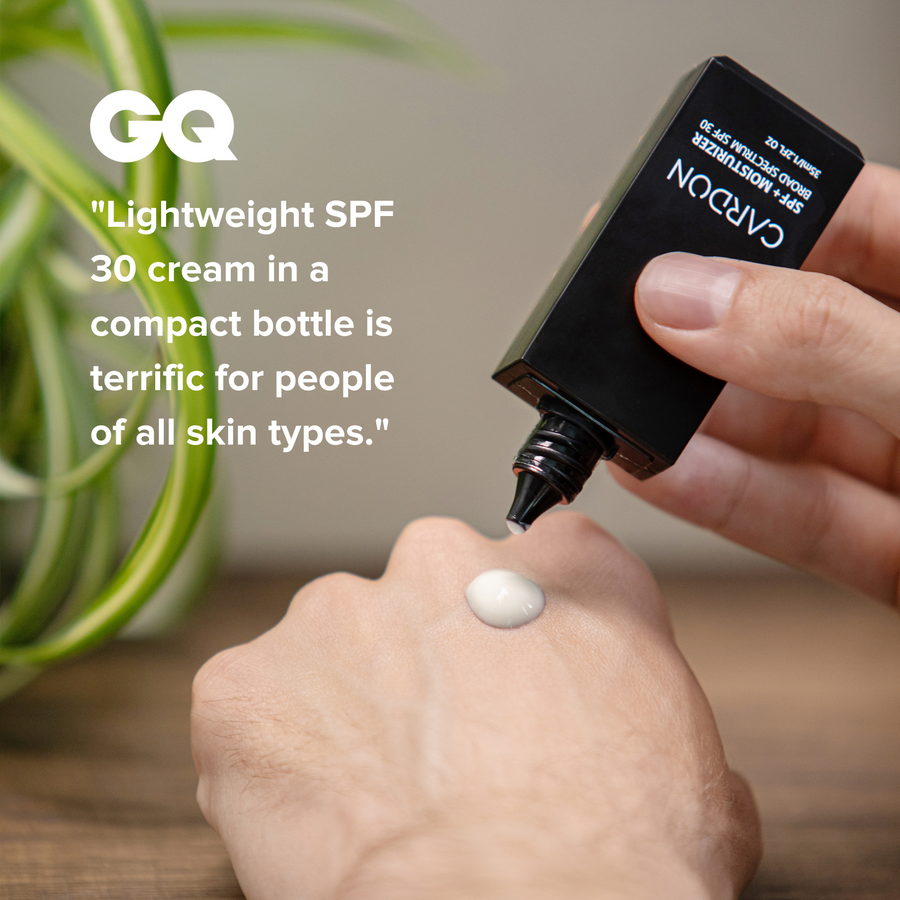
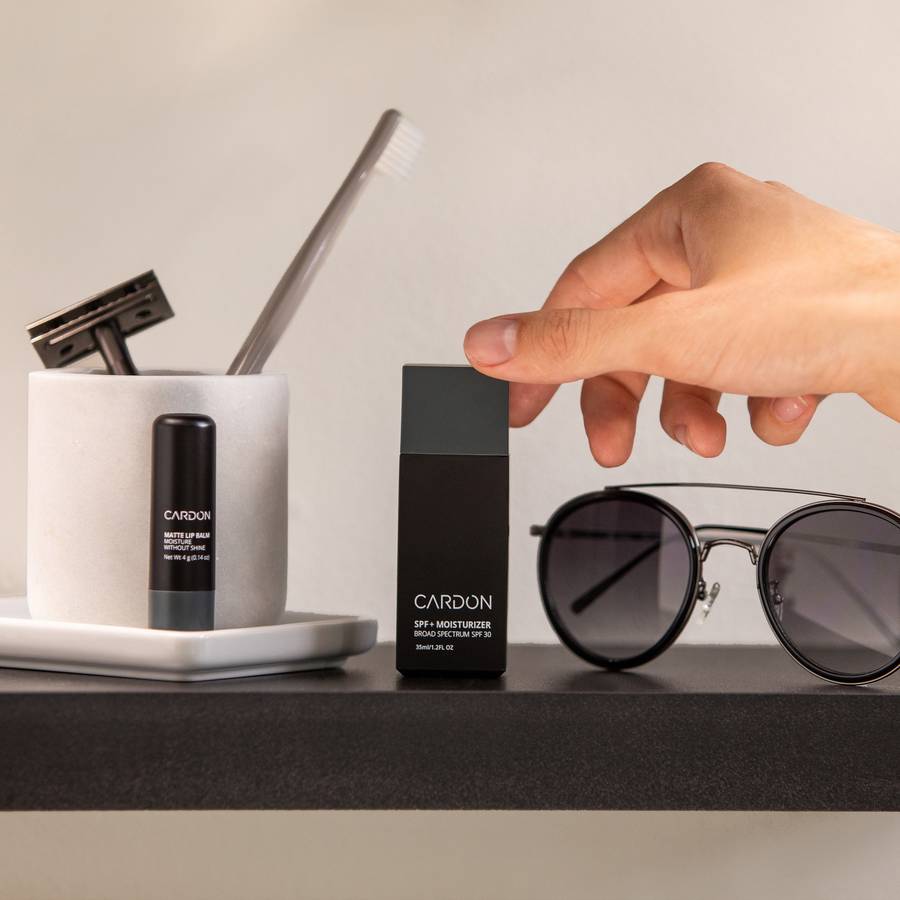

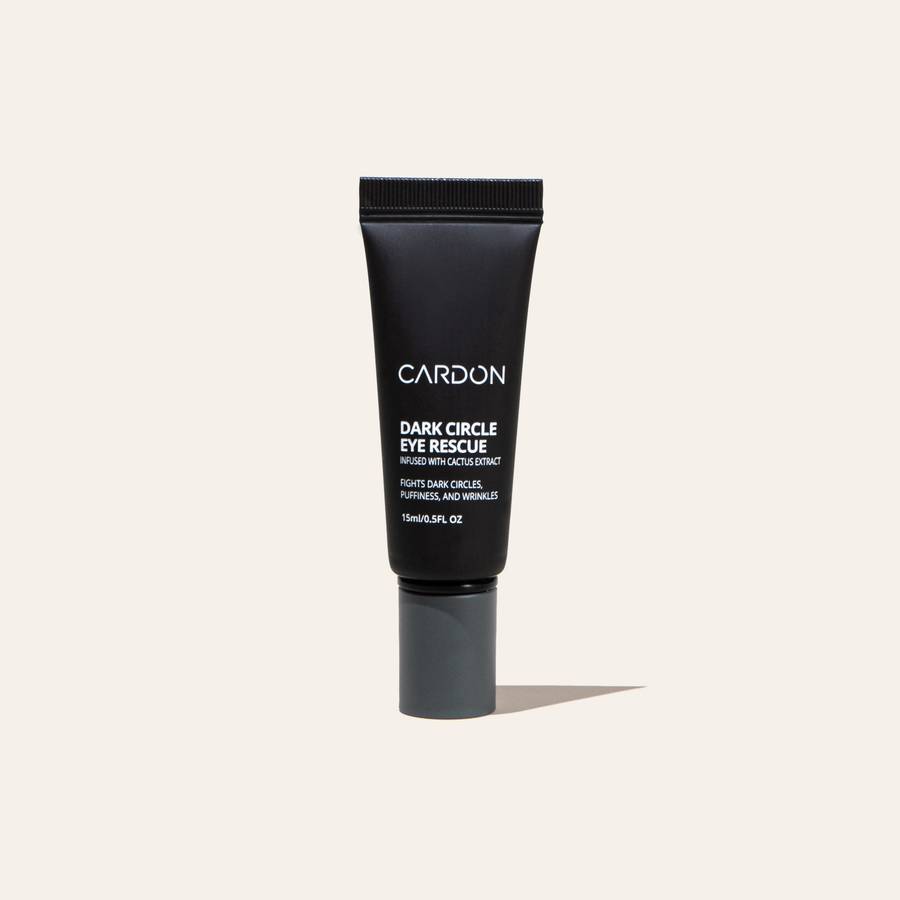
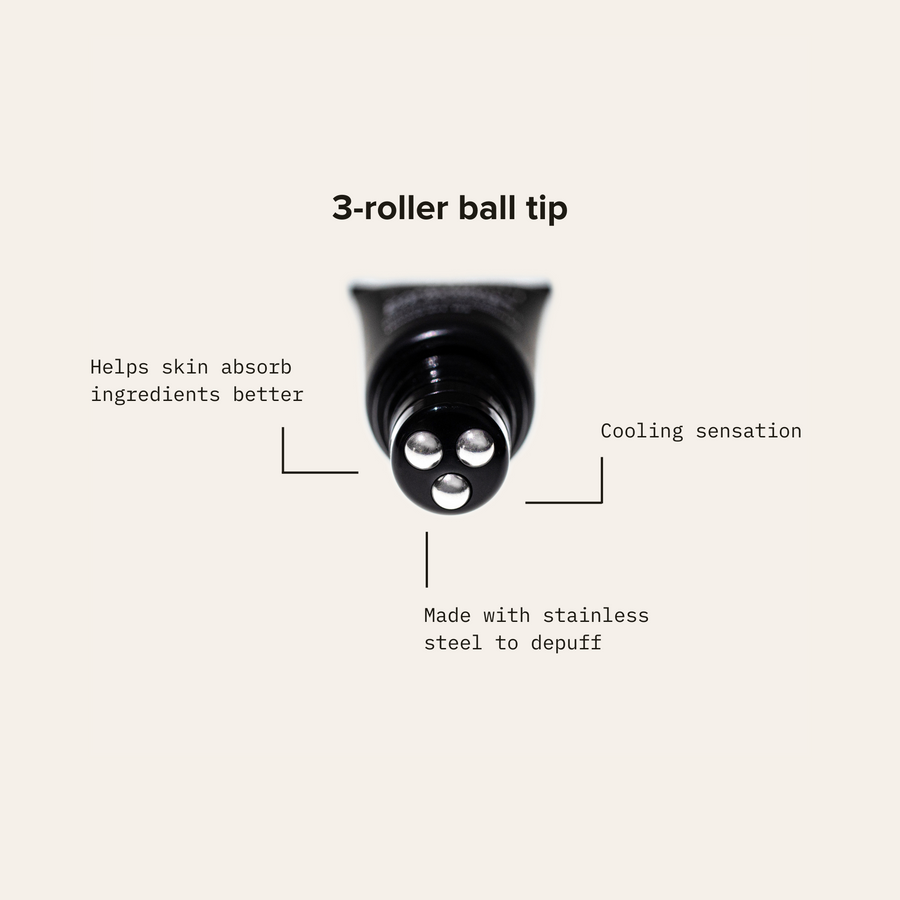
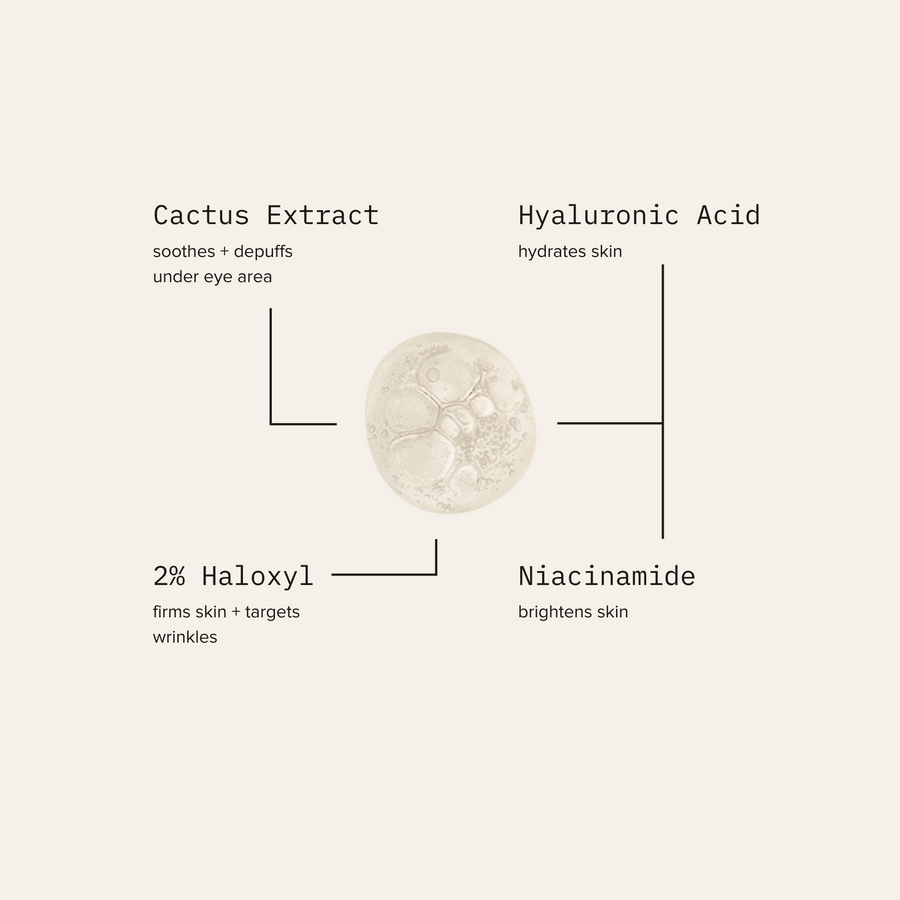
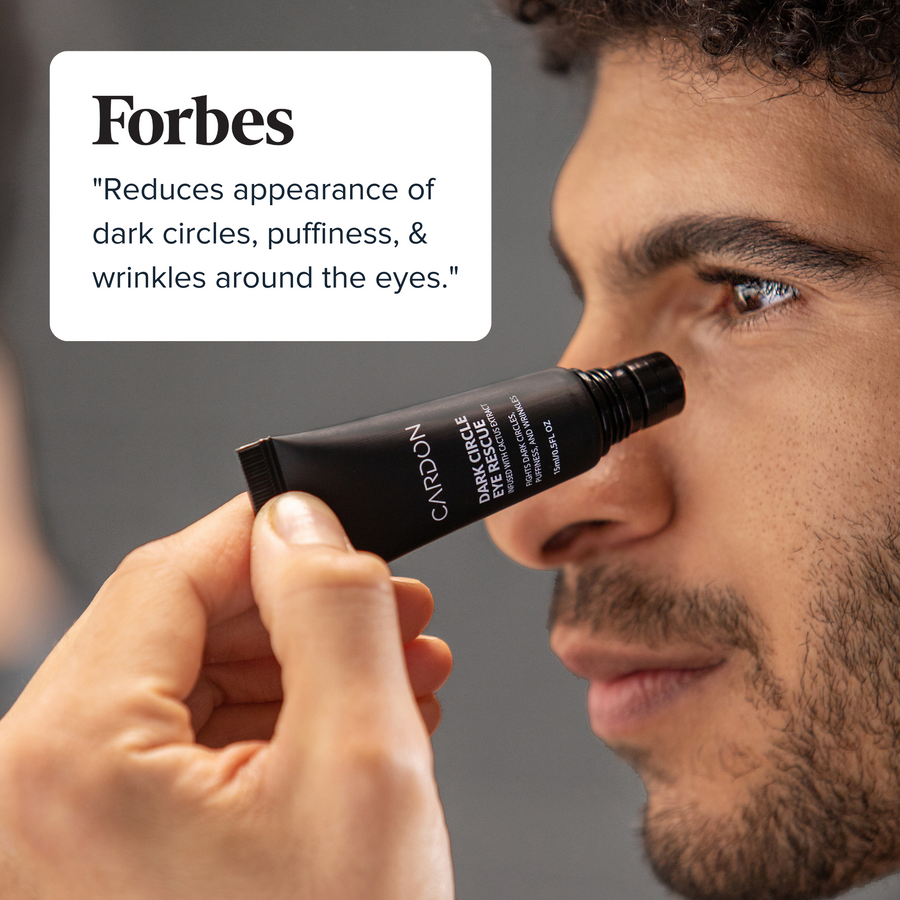
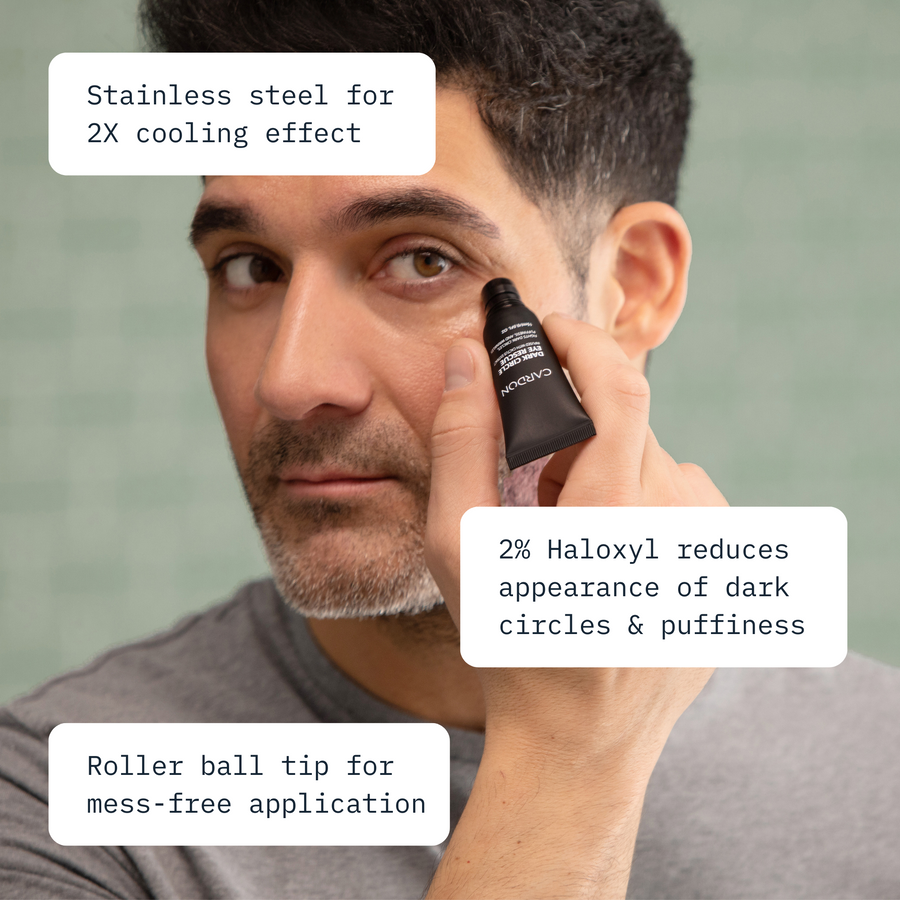
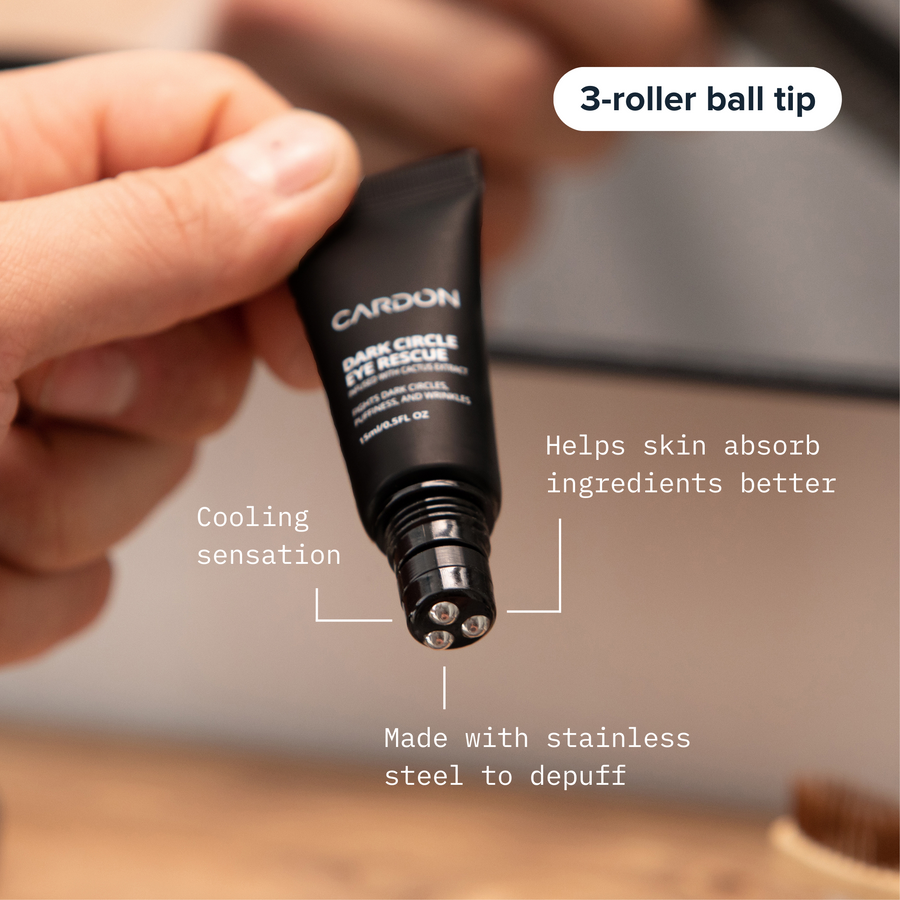
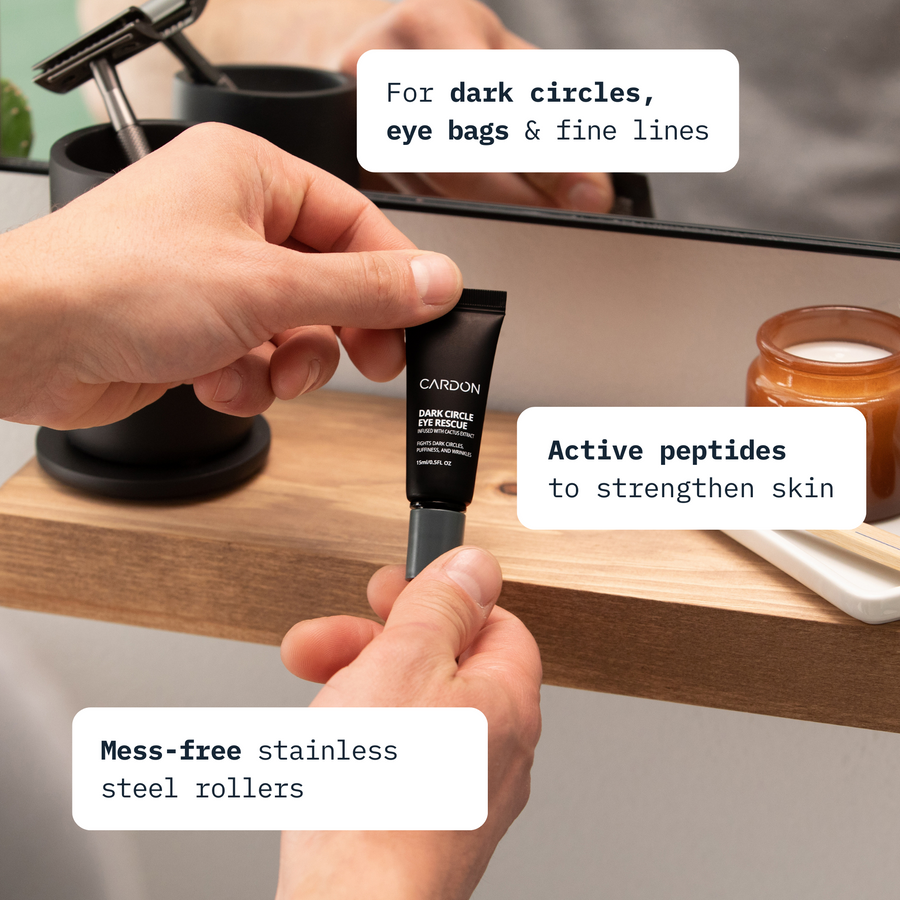
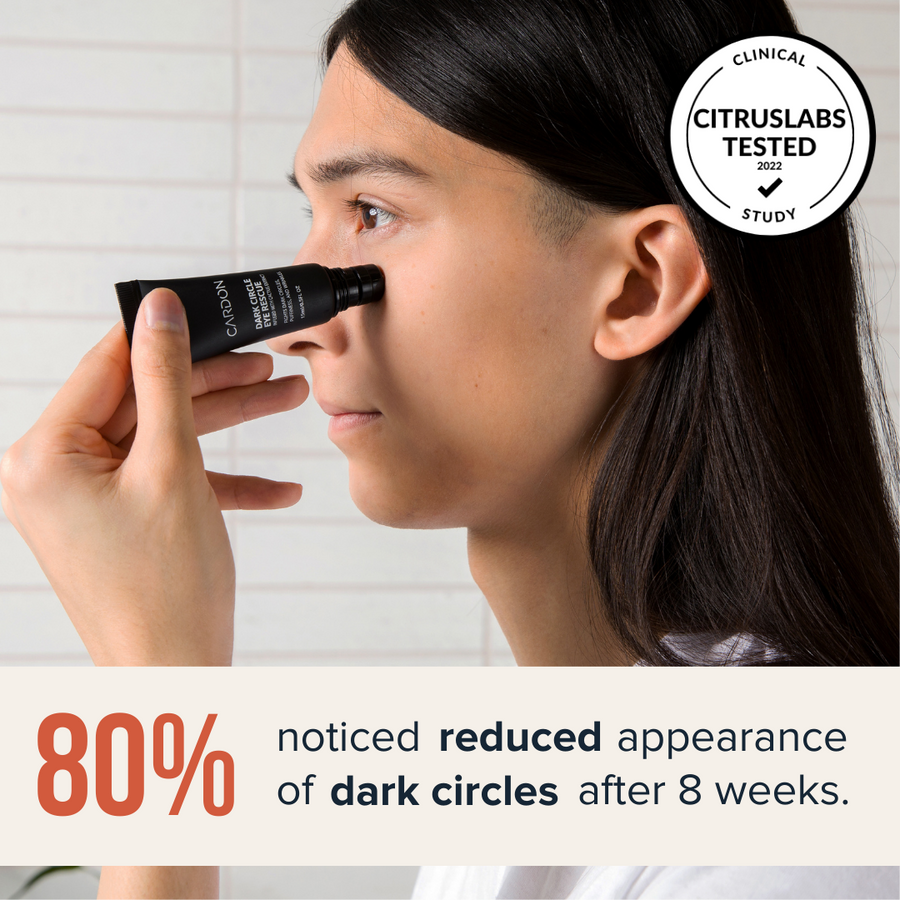
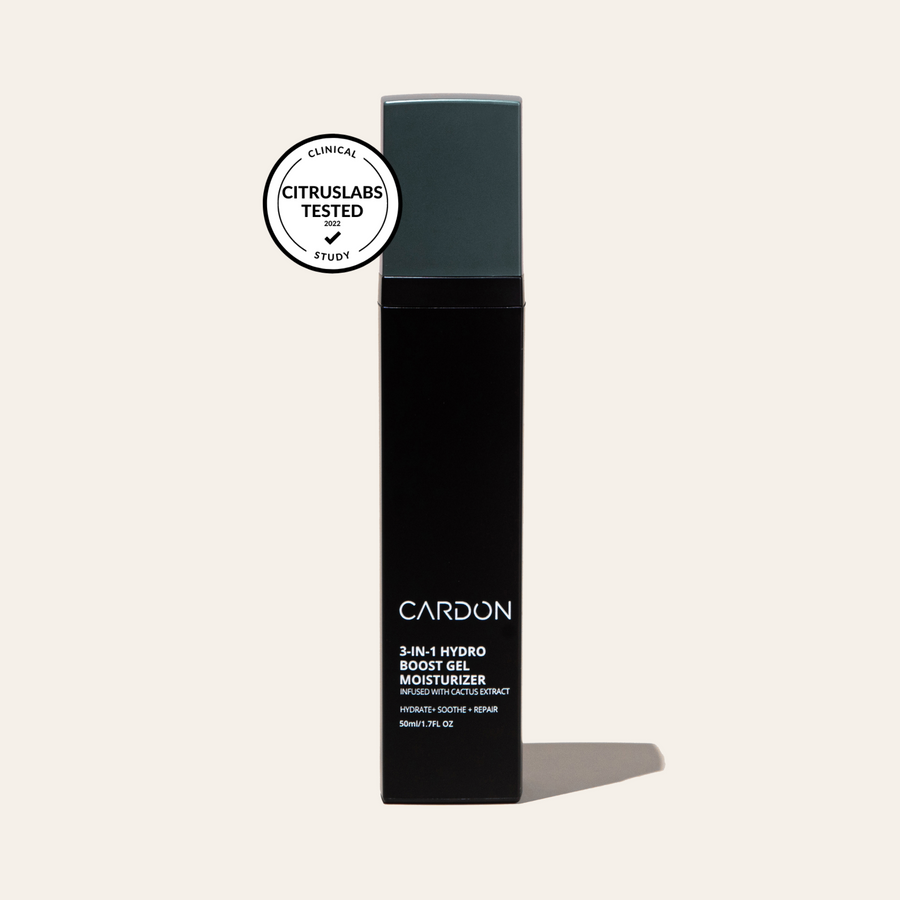
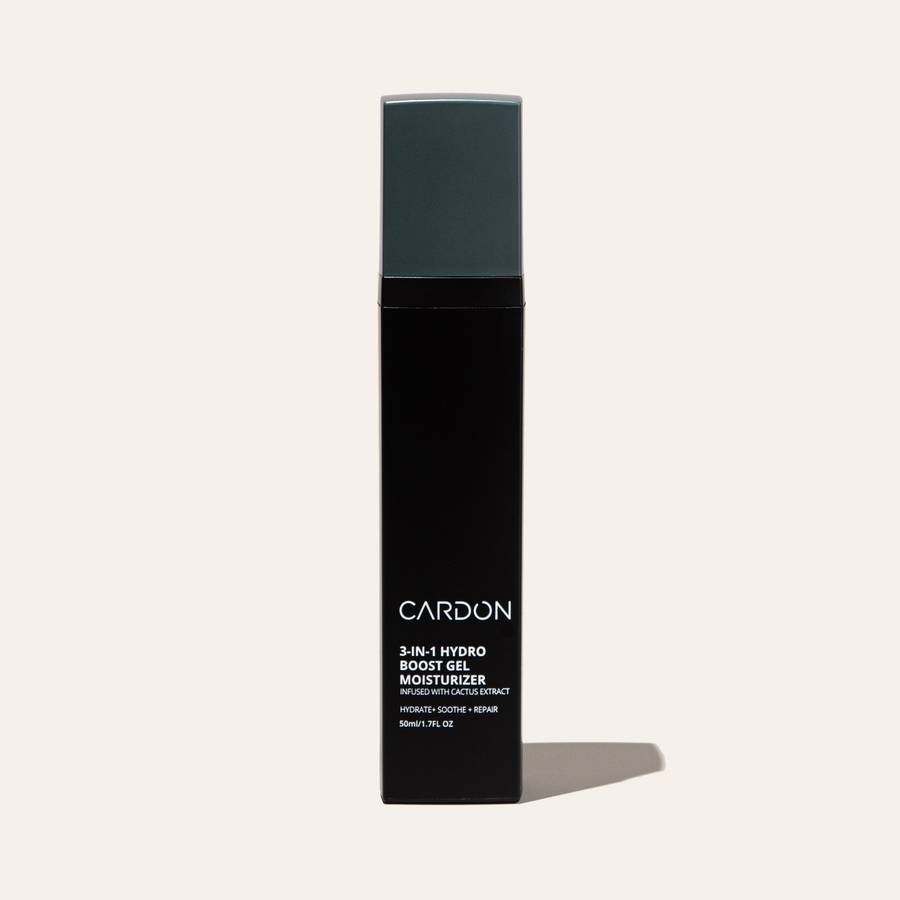
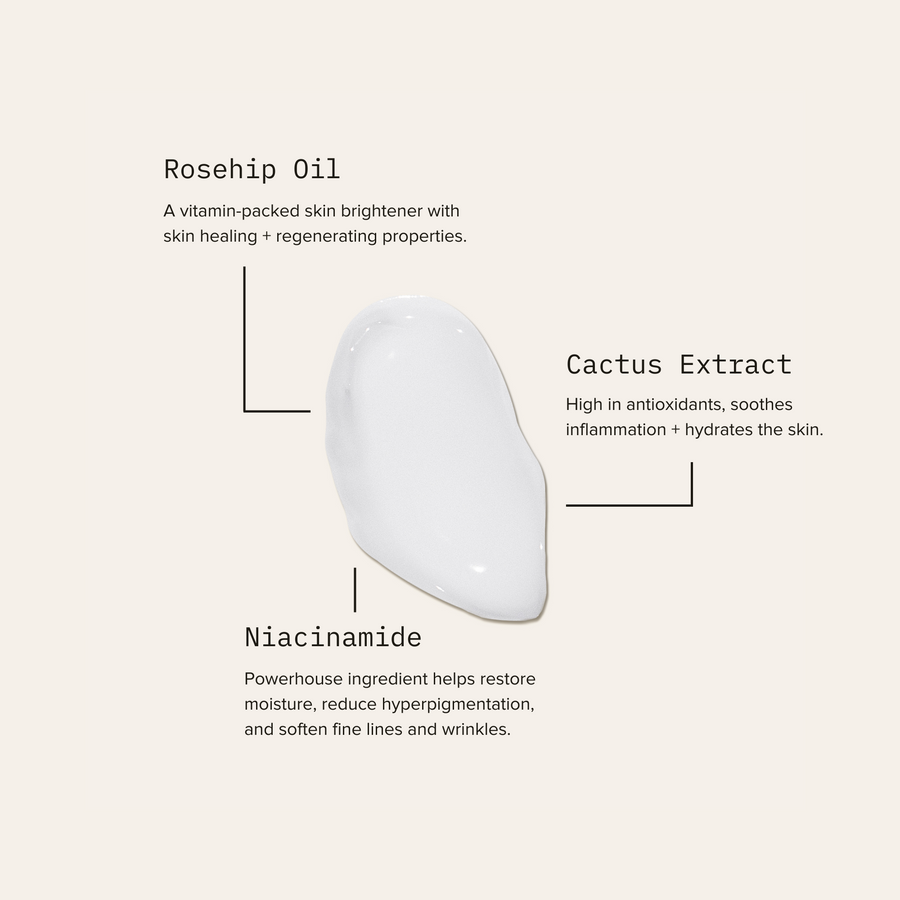

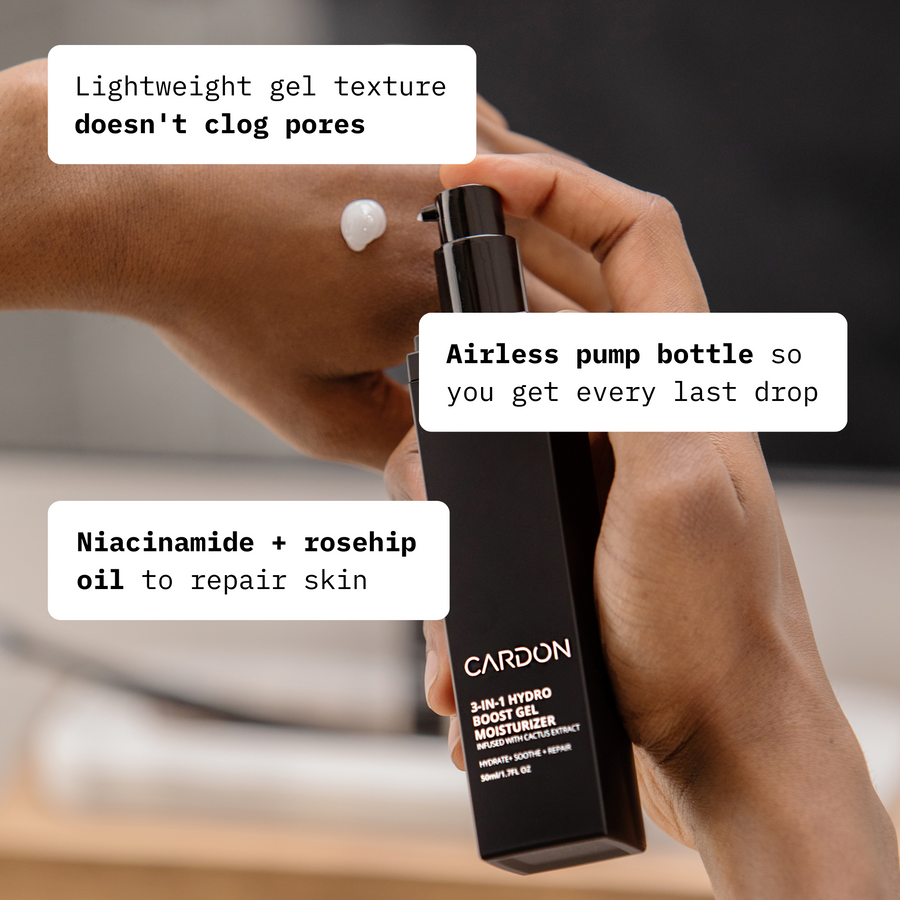
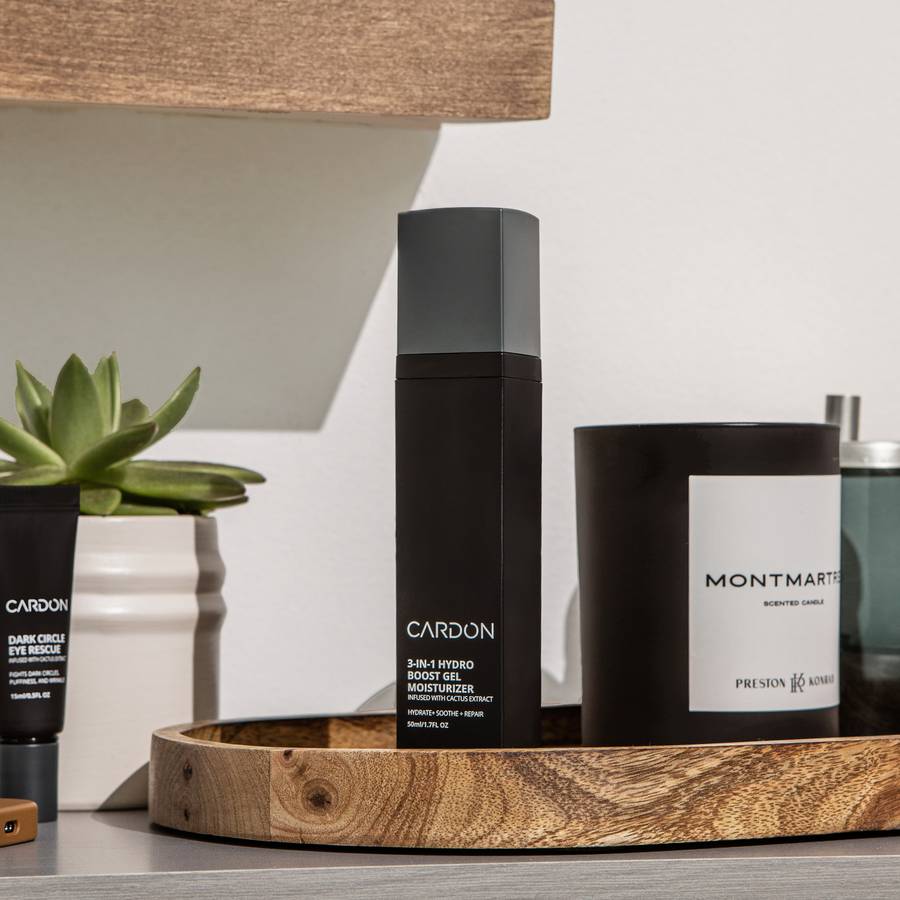
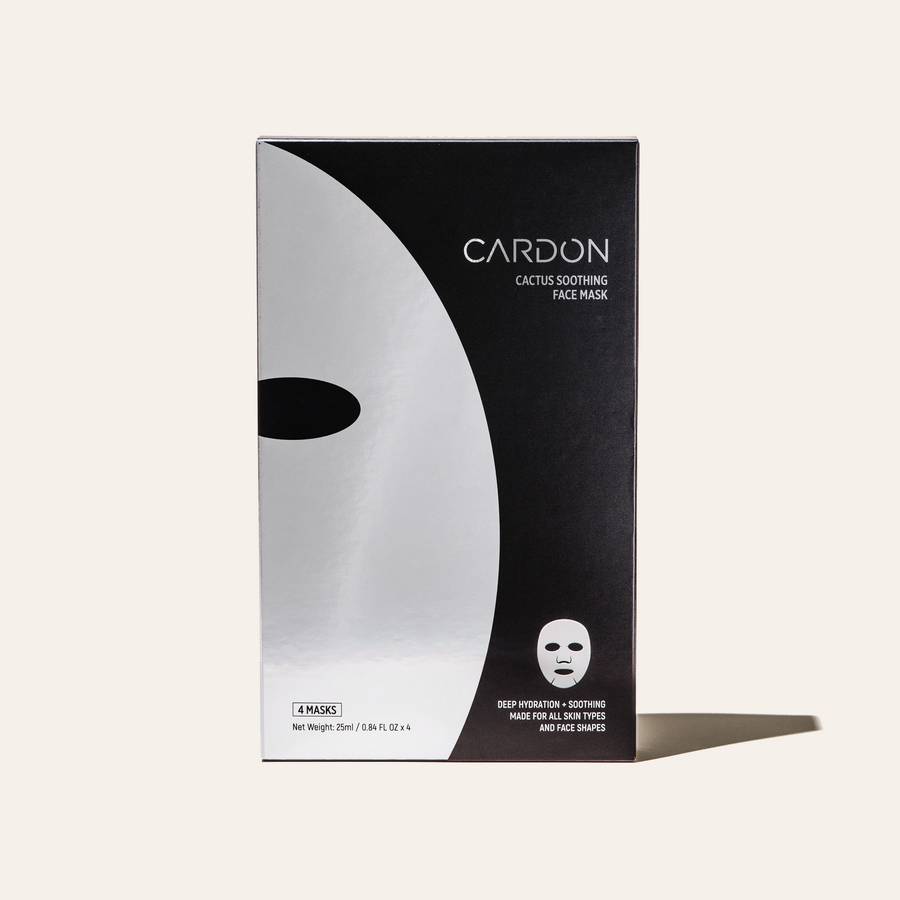
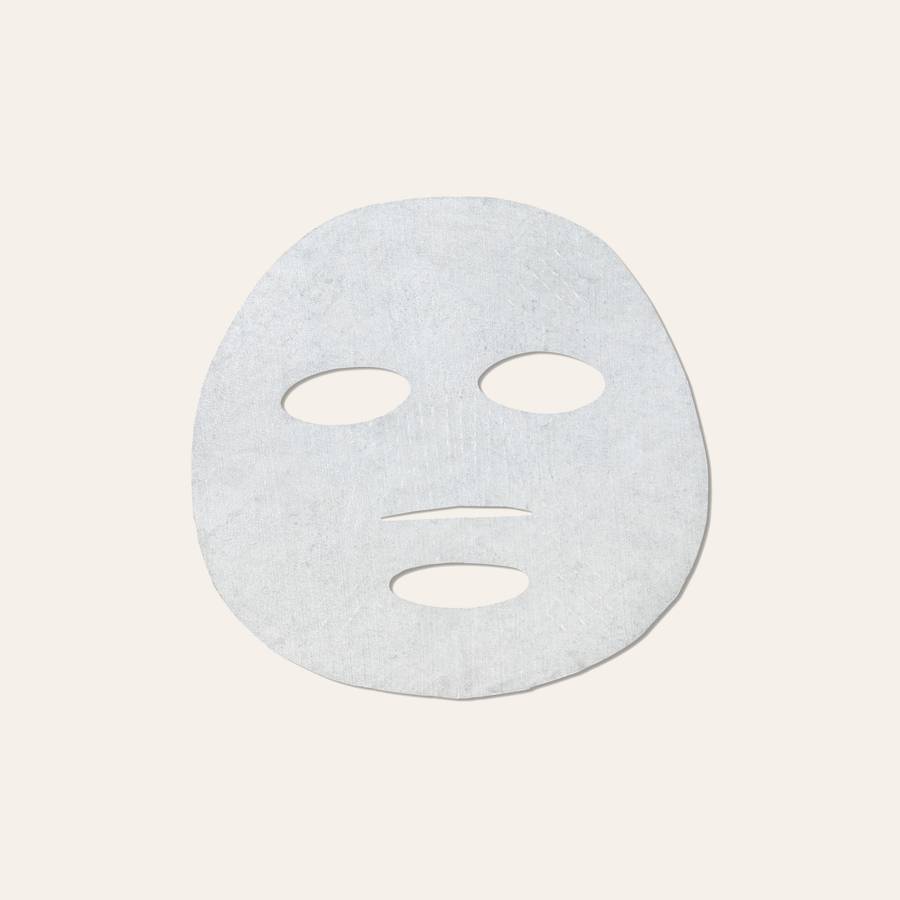
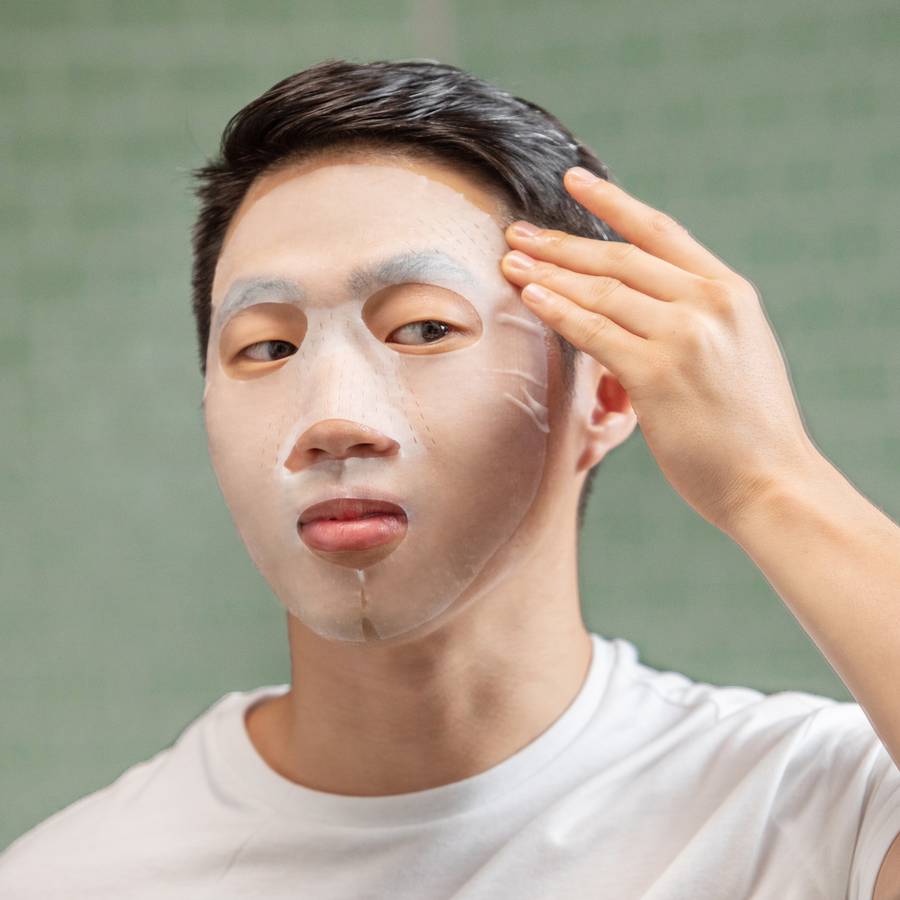
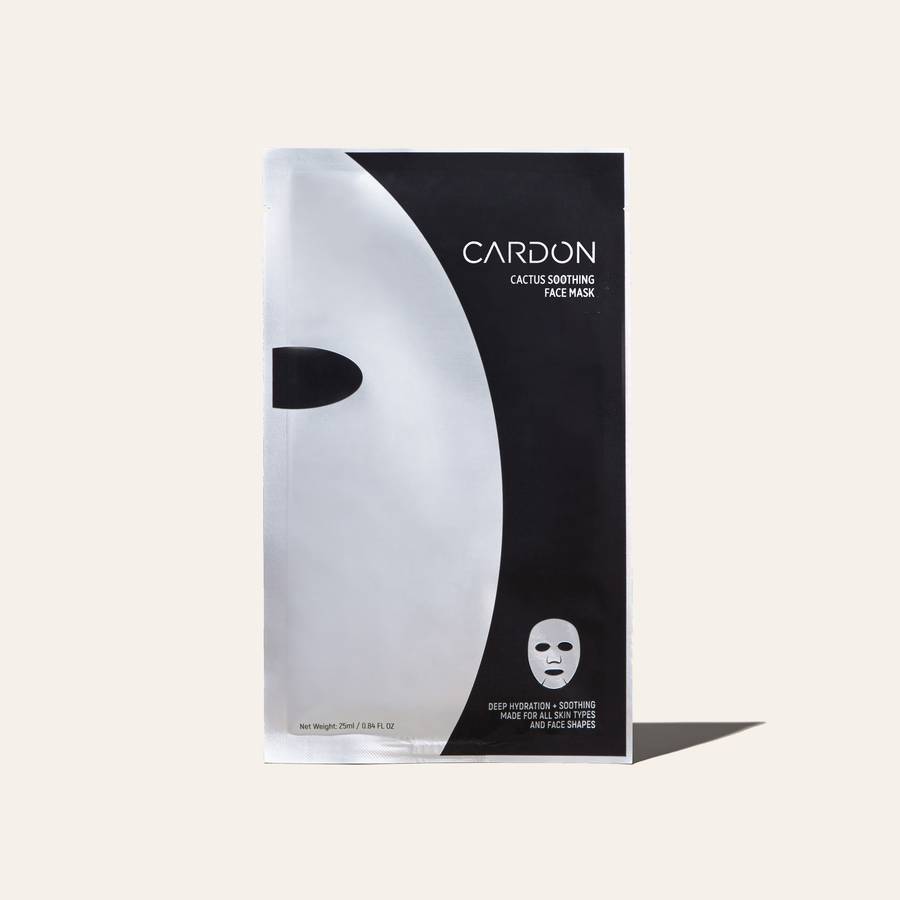
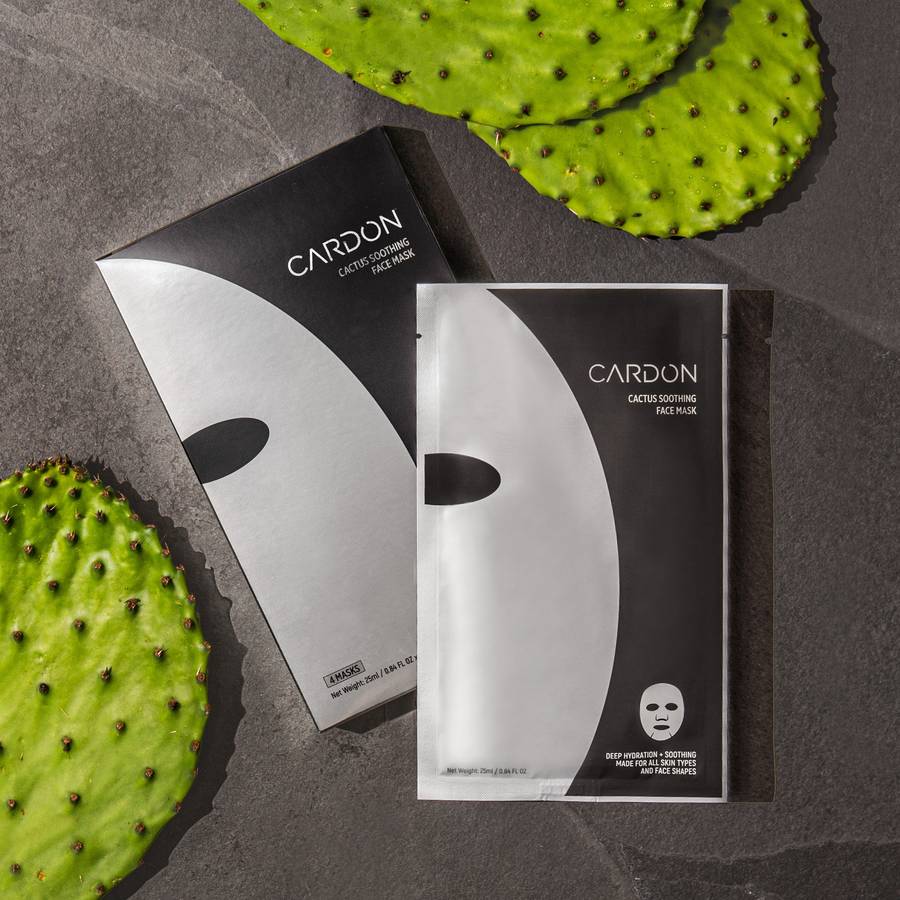
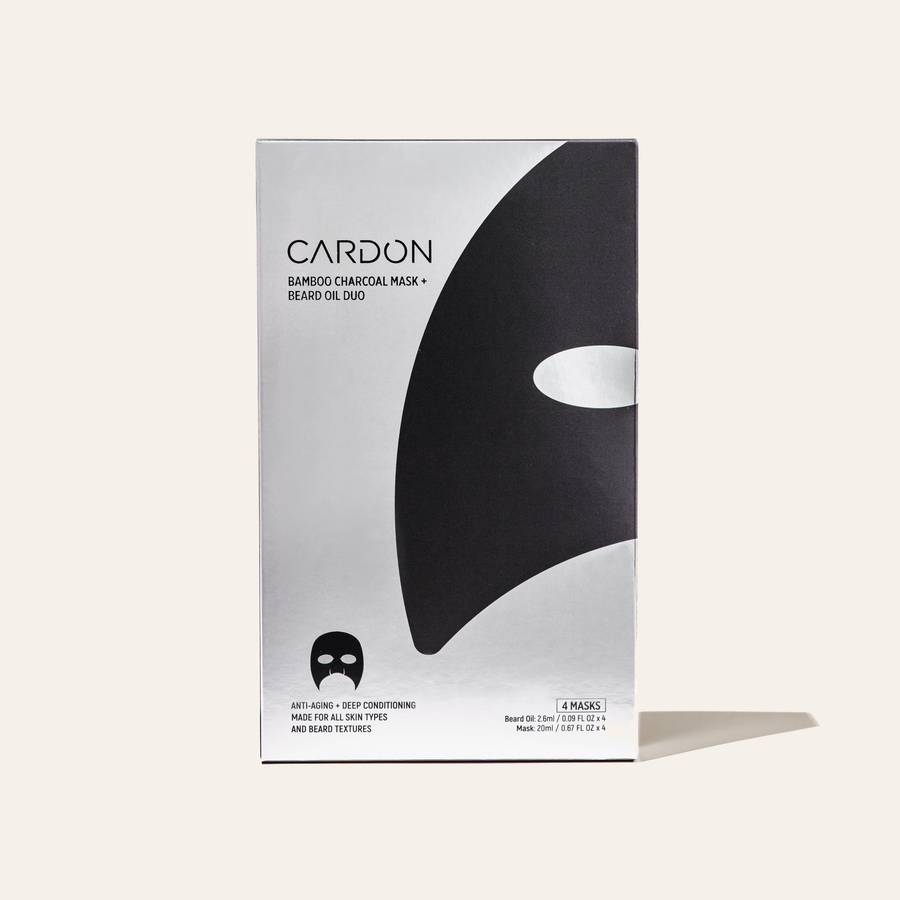
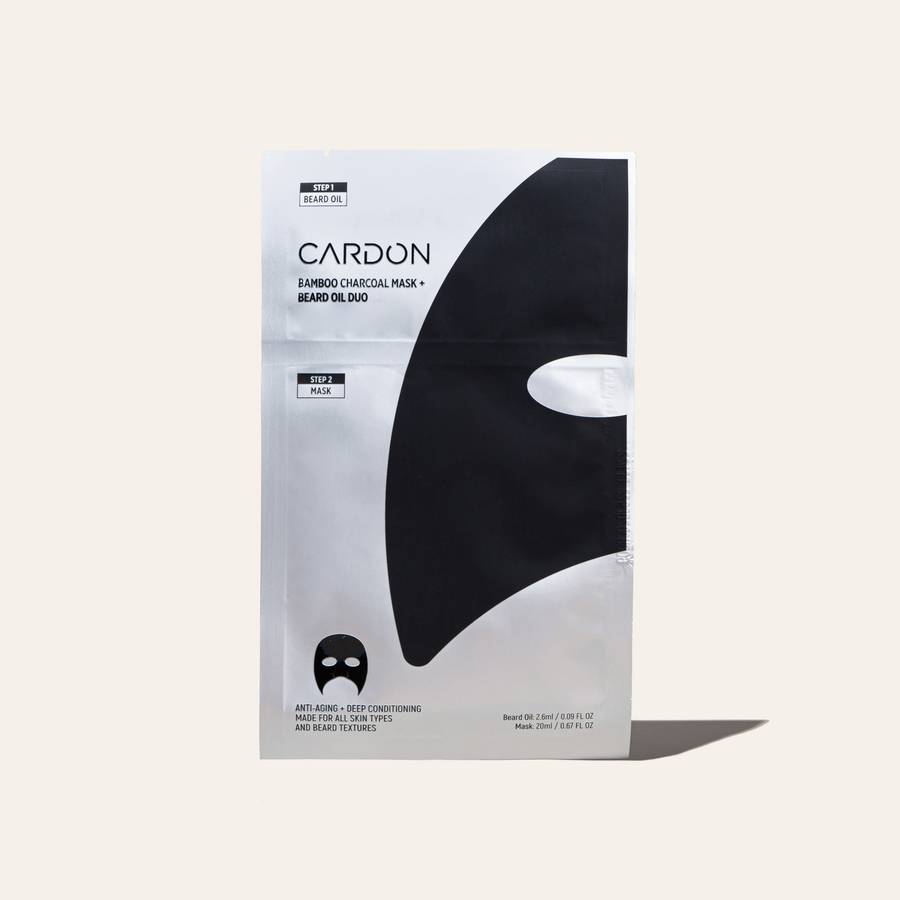

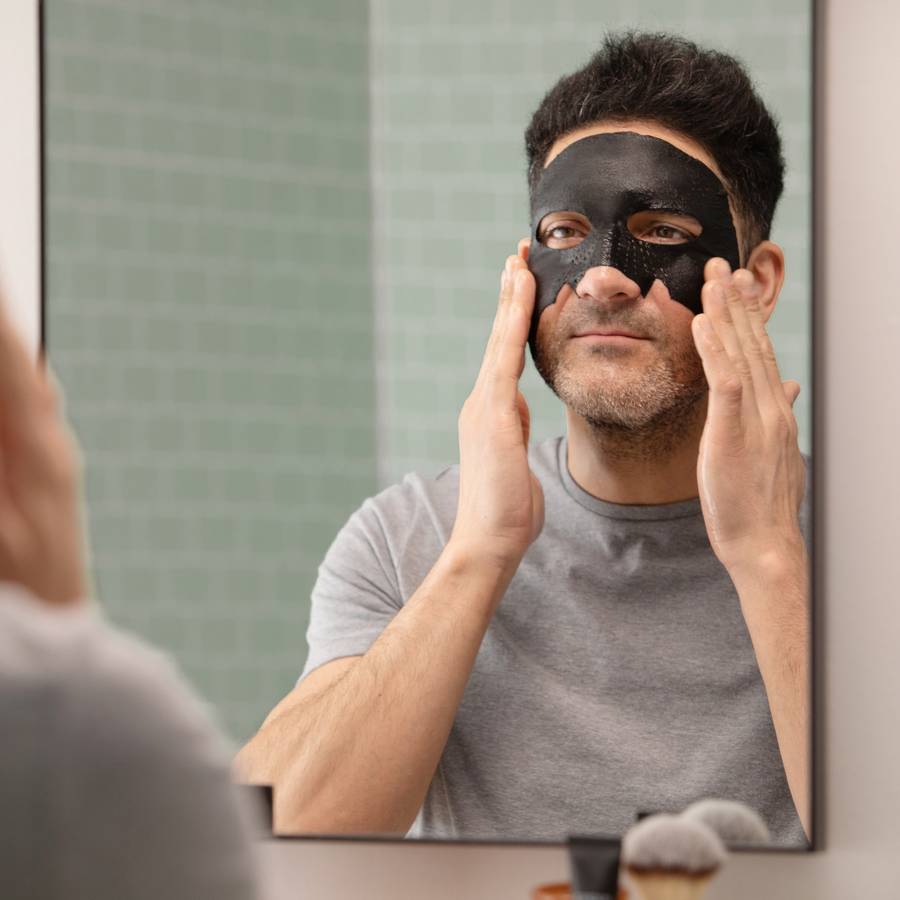

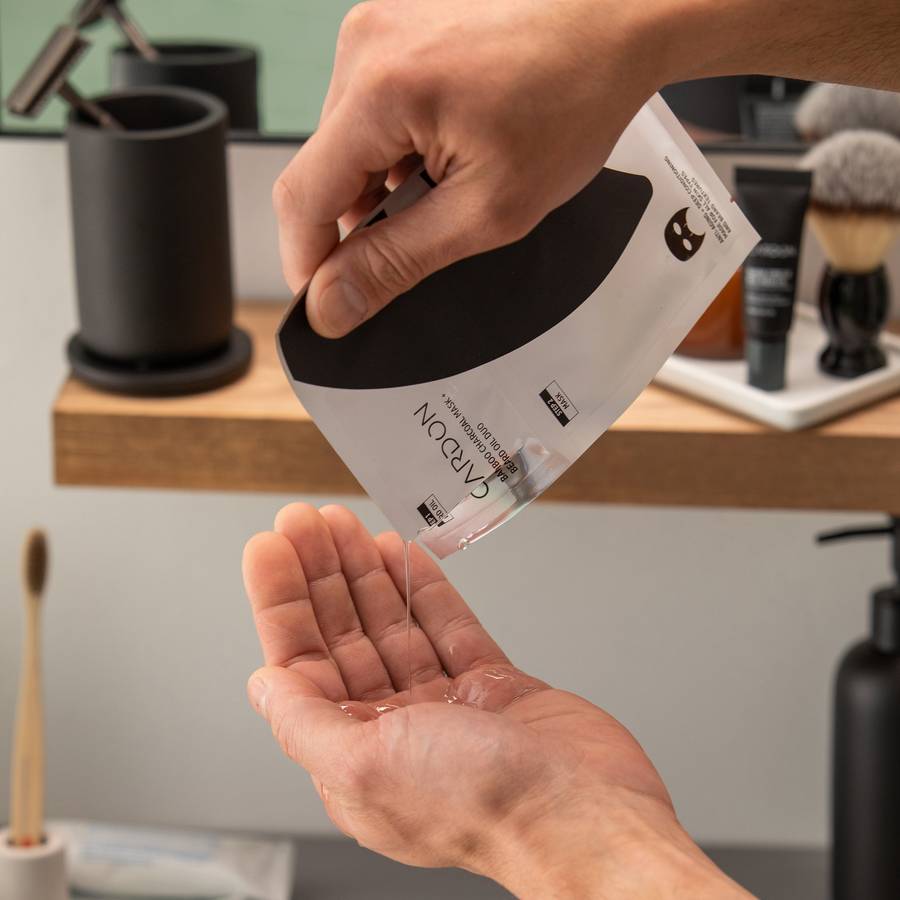
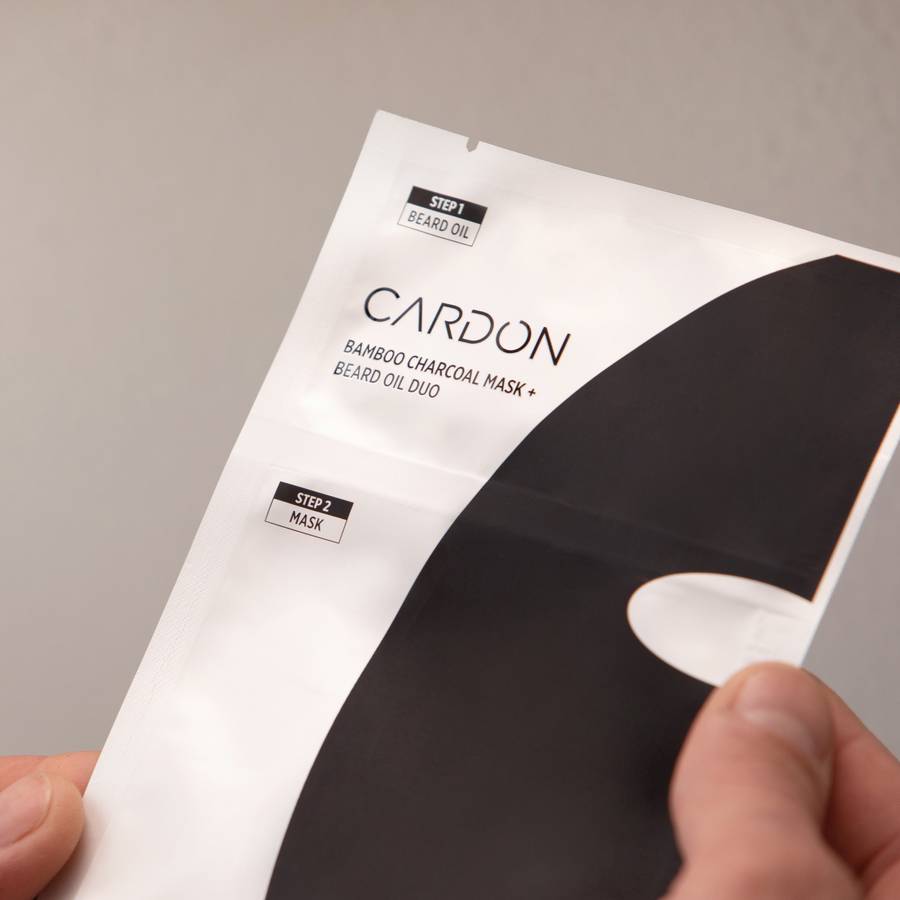
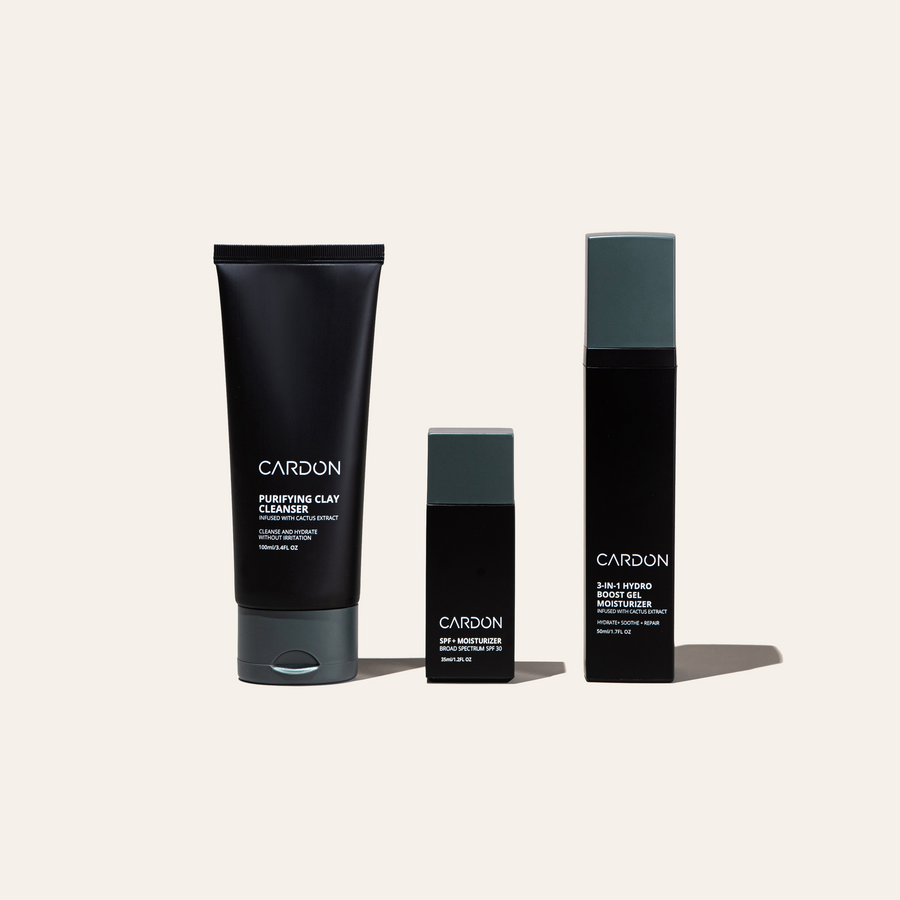
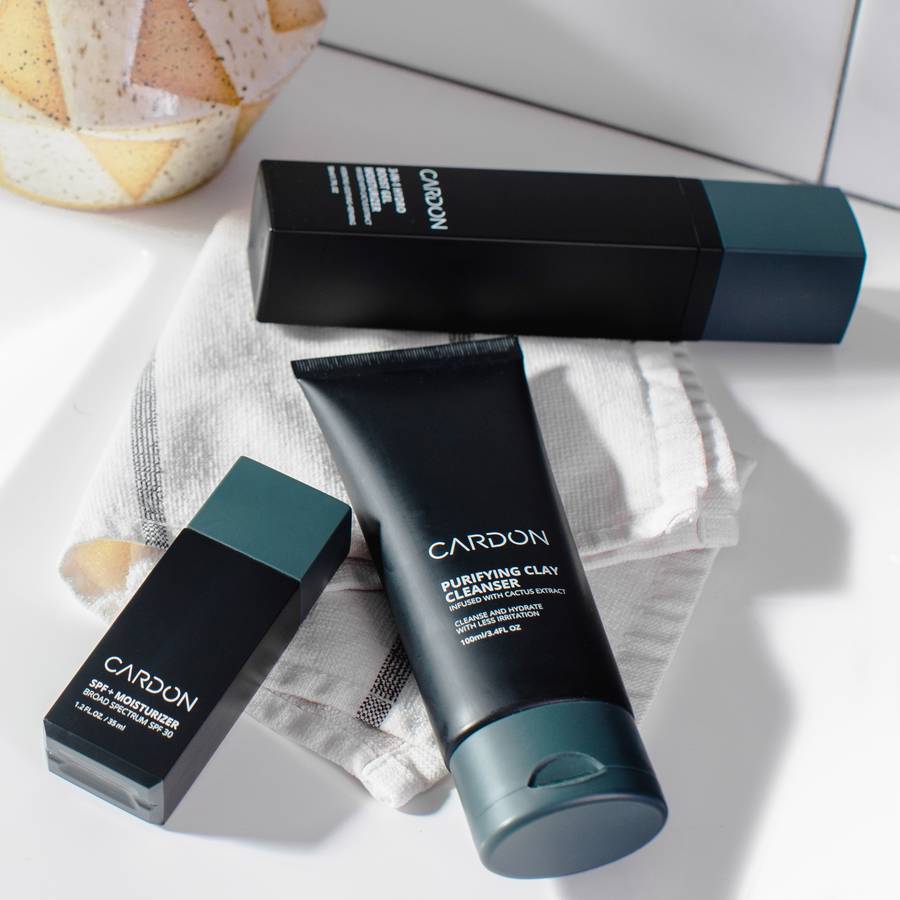
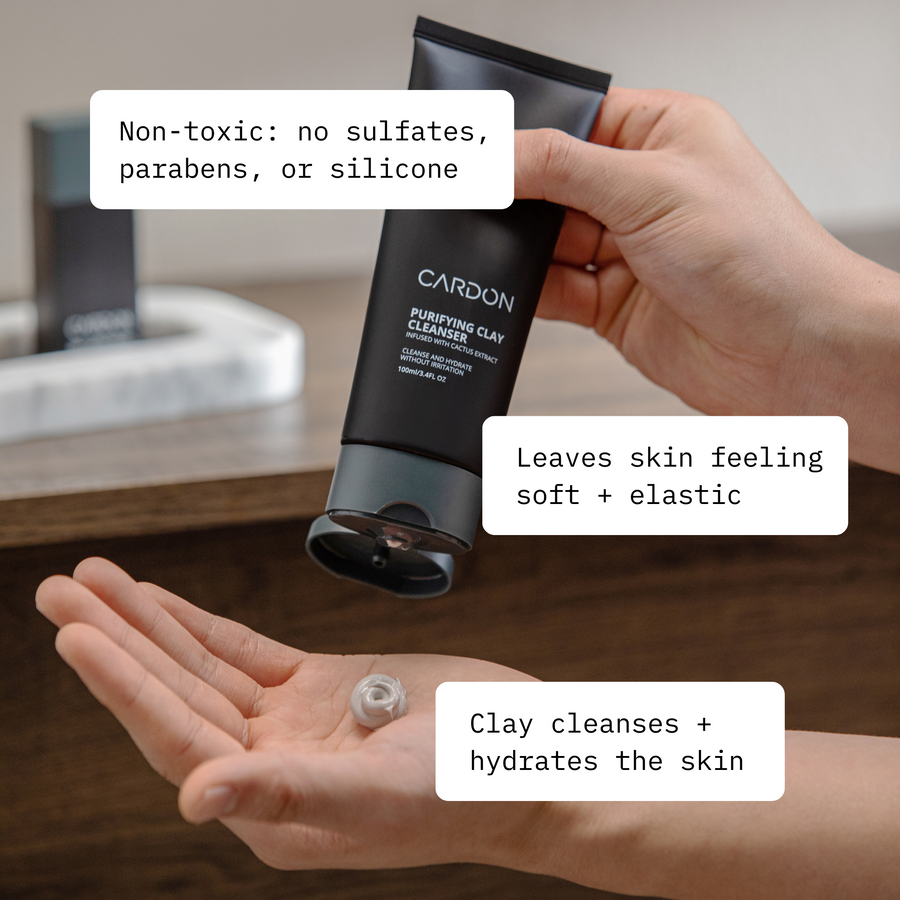
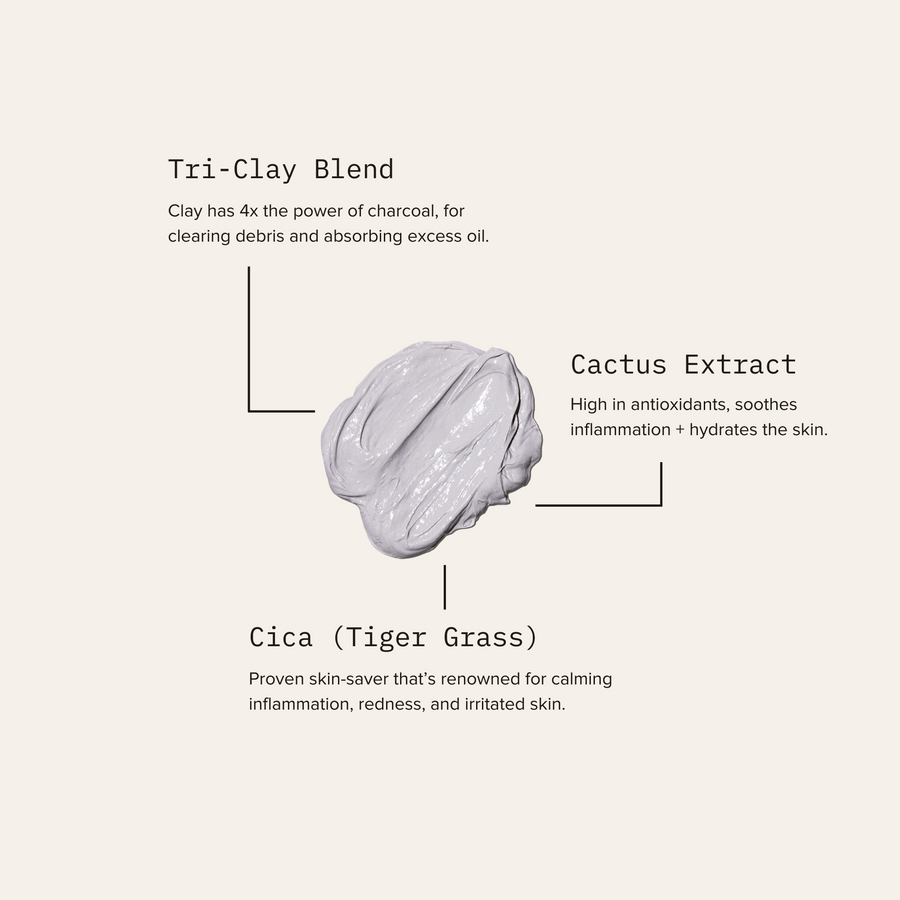
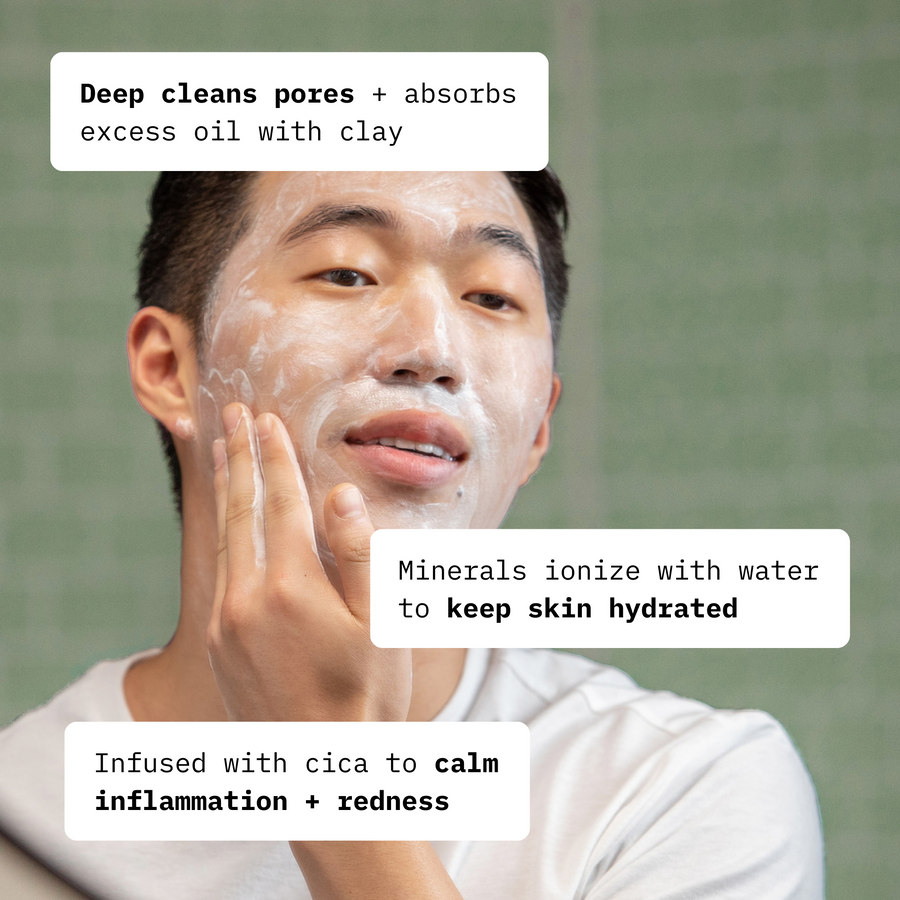

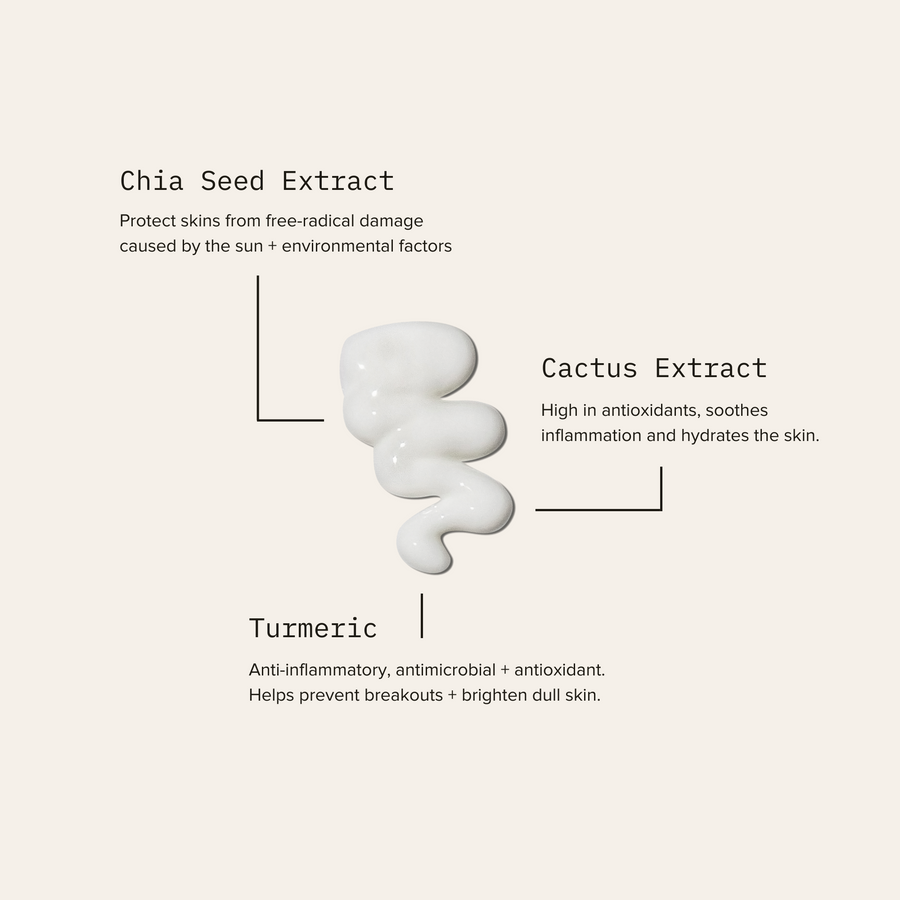
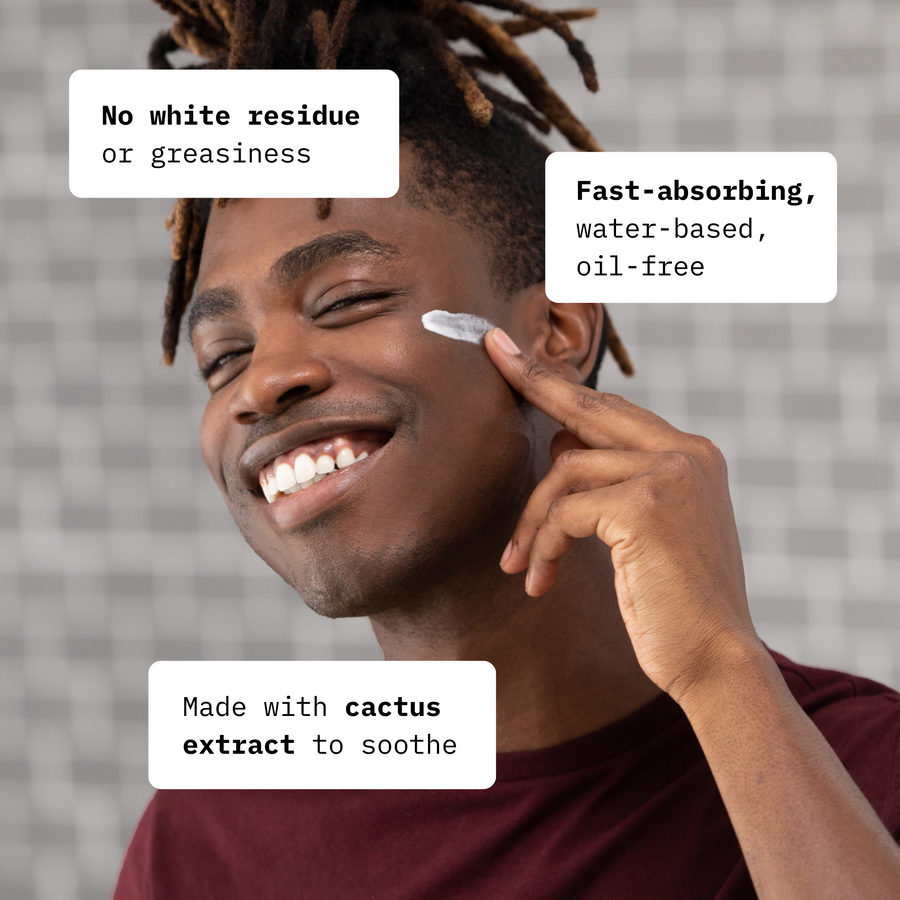
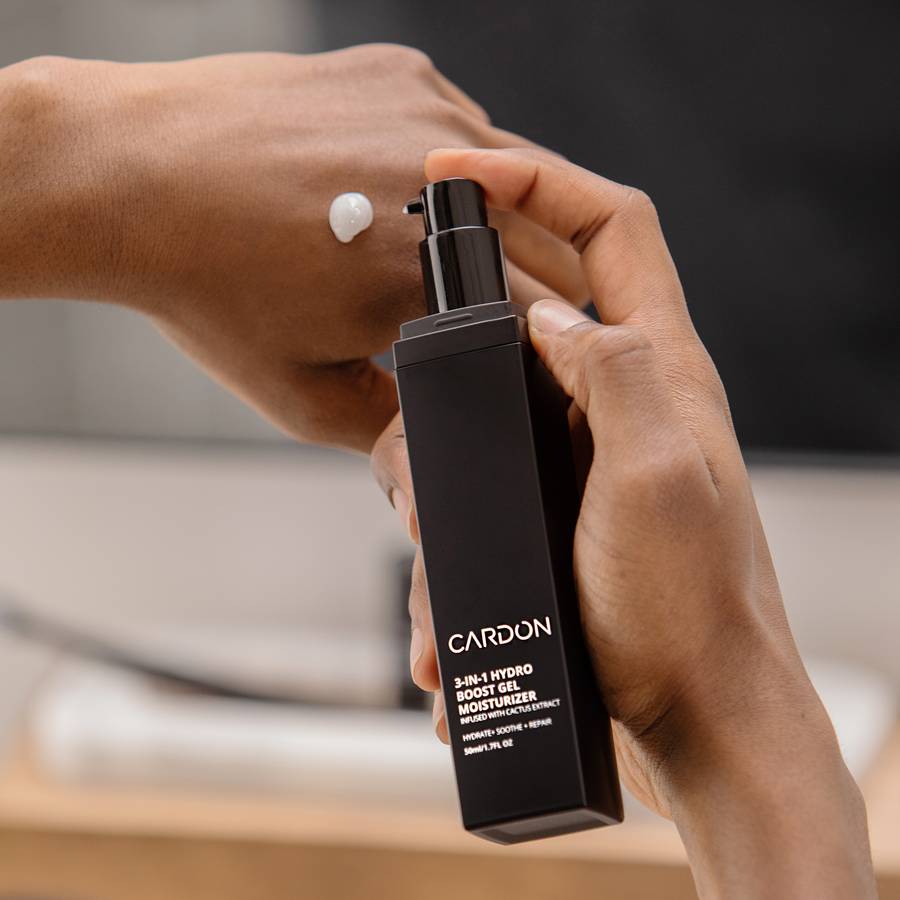
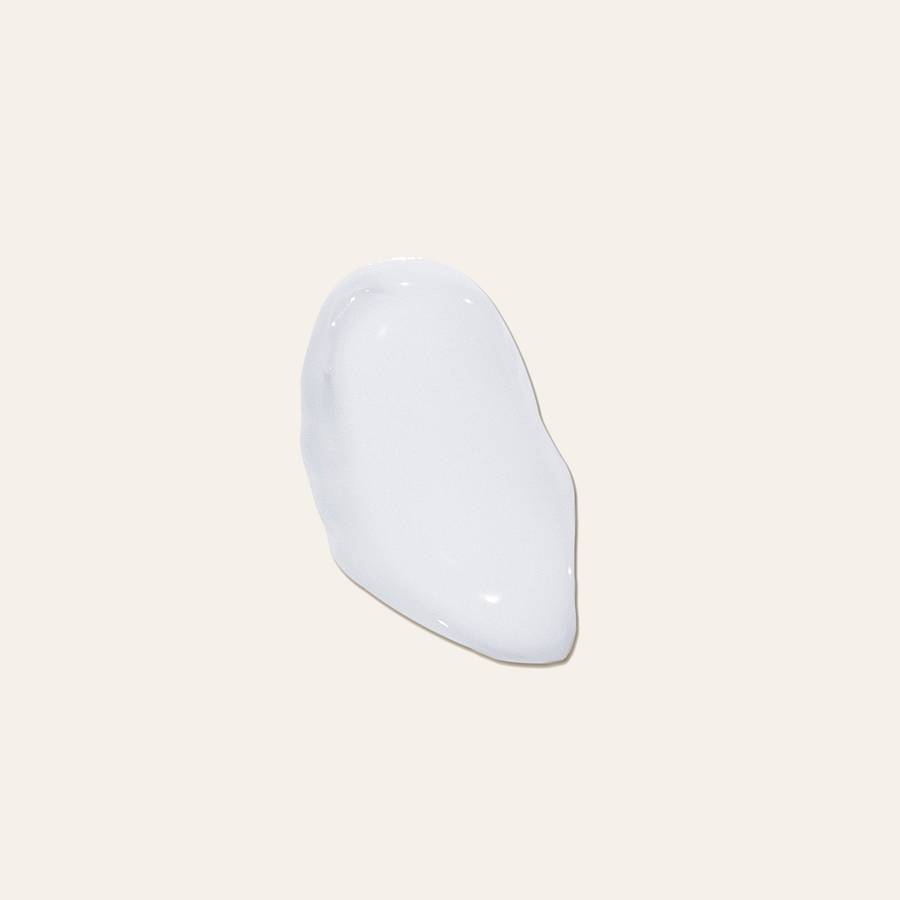
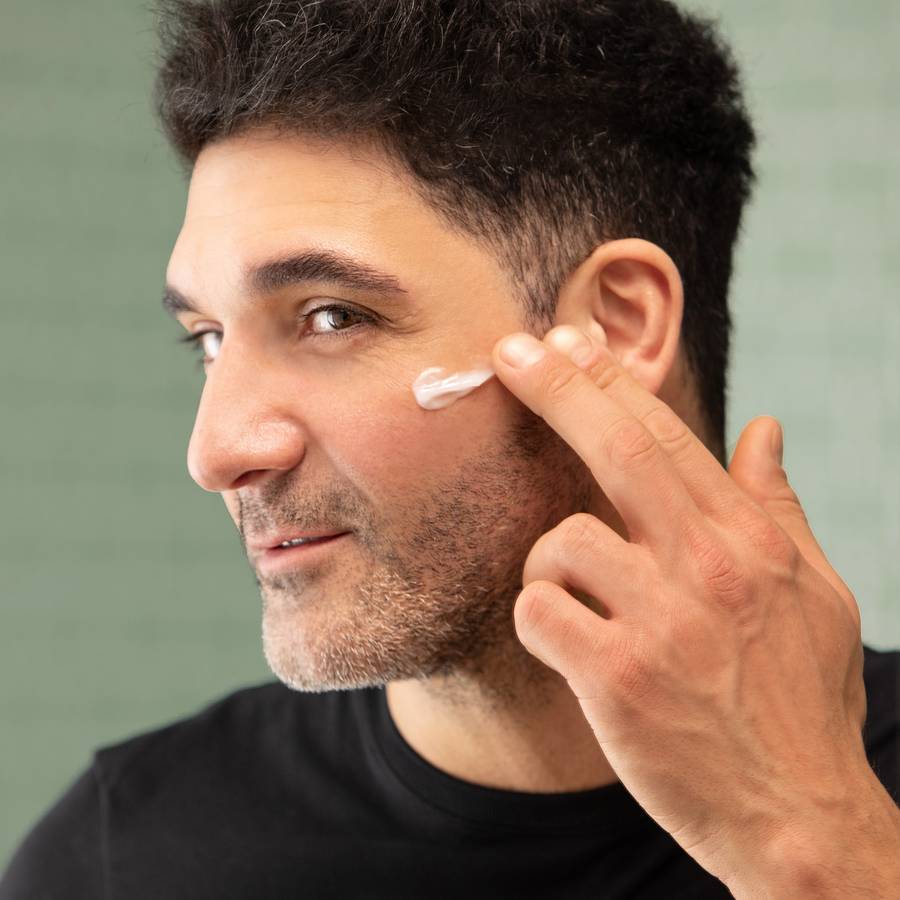
.png?v=1701688884267&options=w_900)
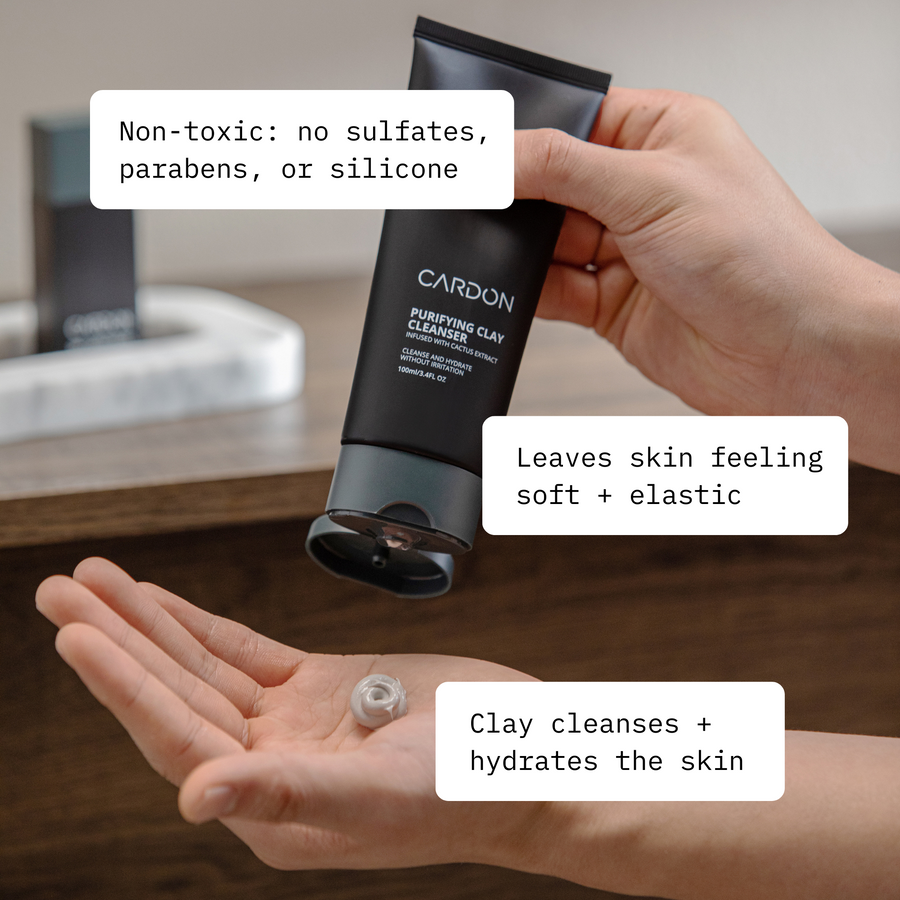
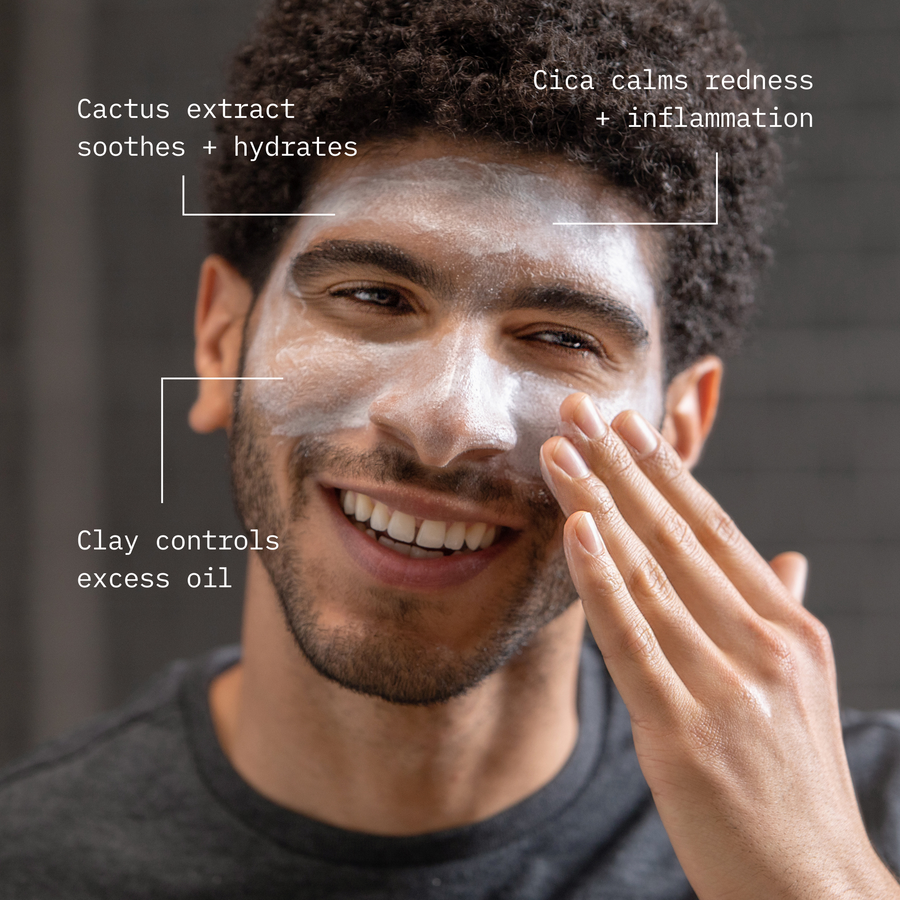

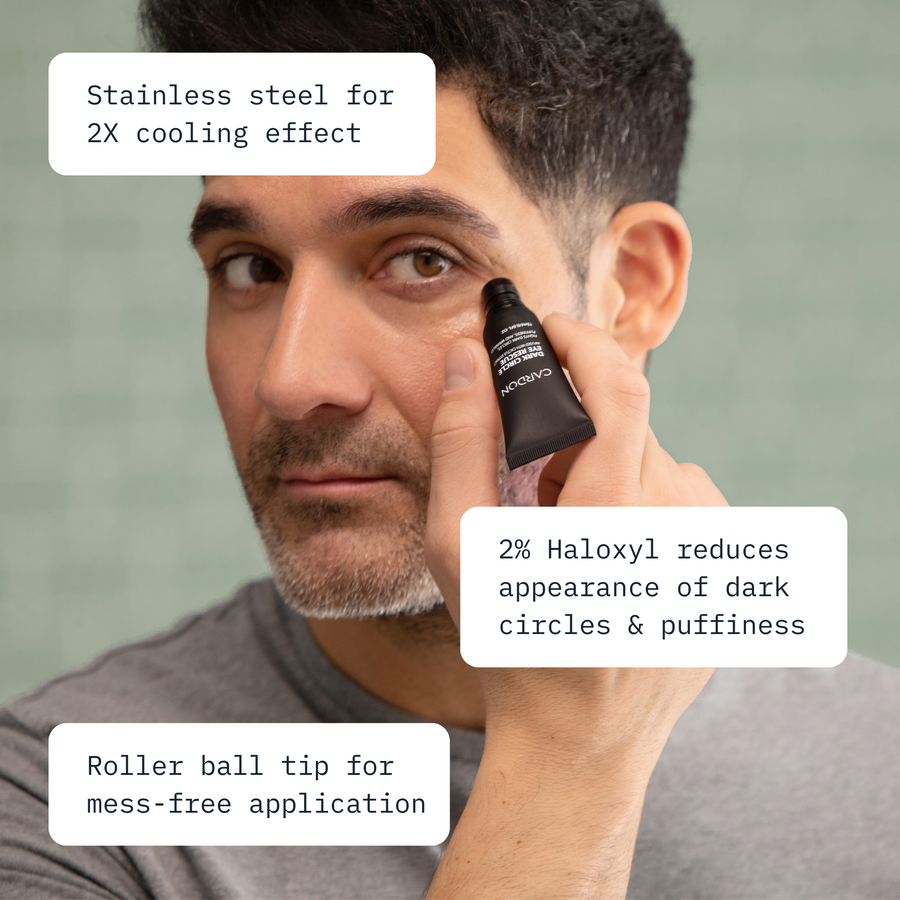
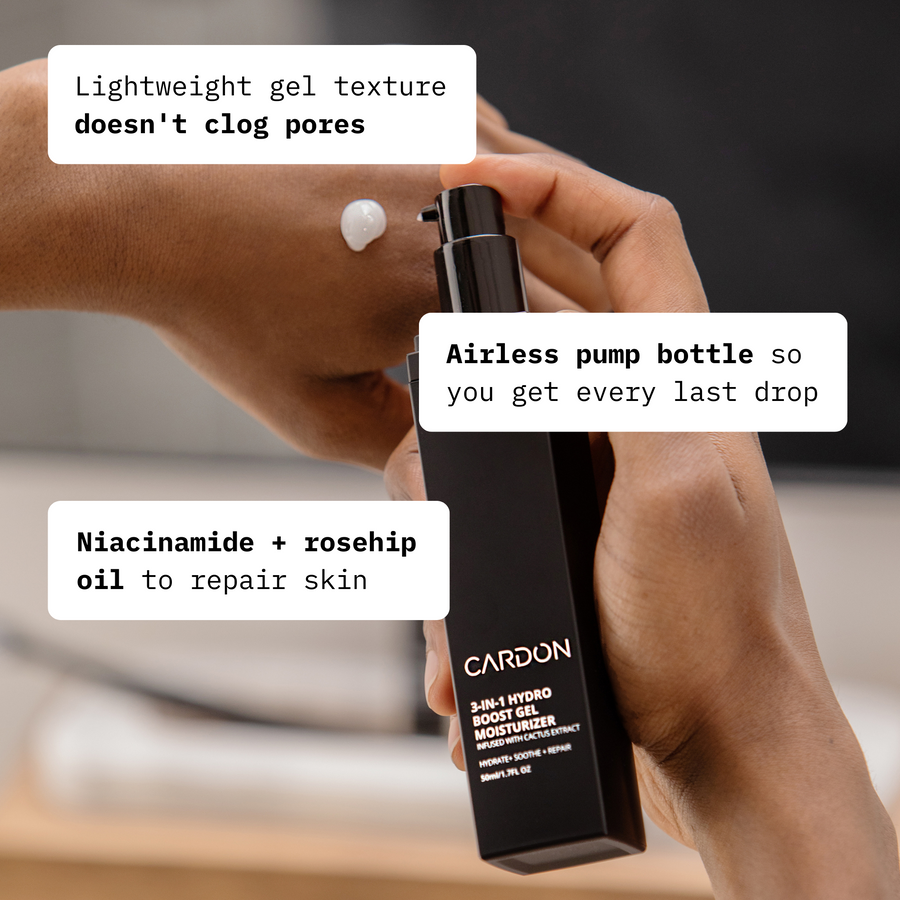
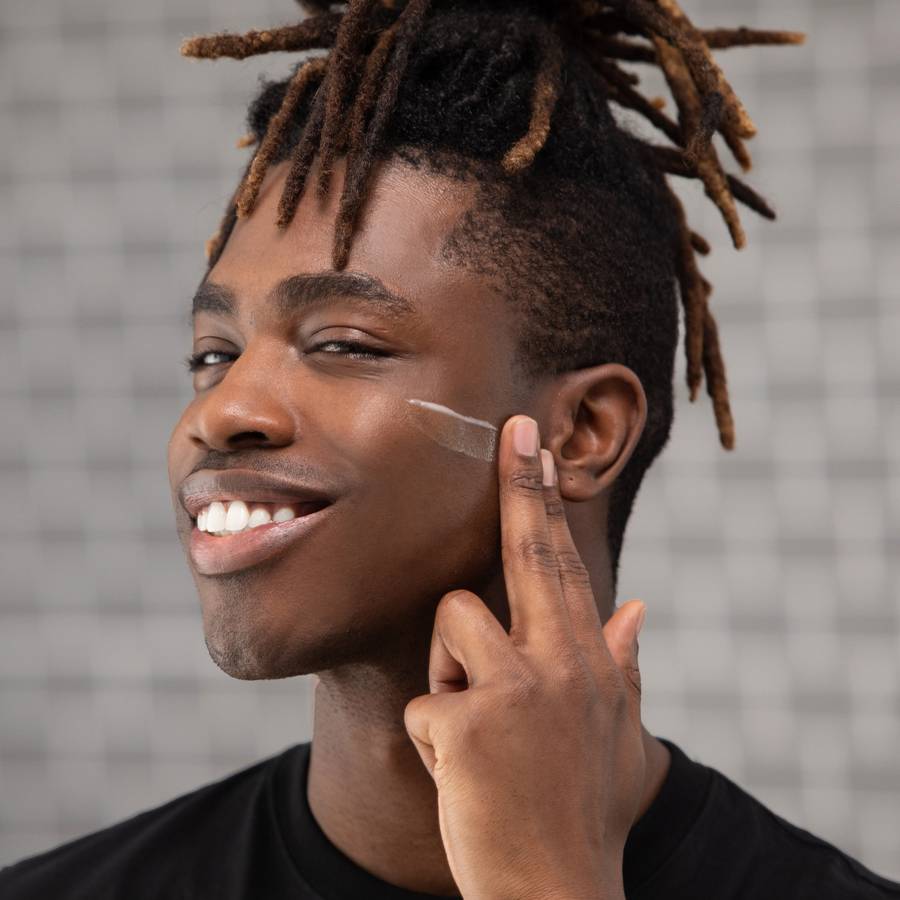
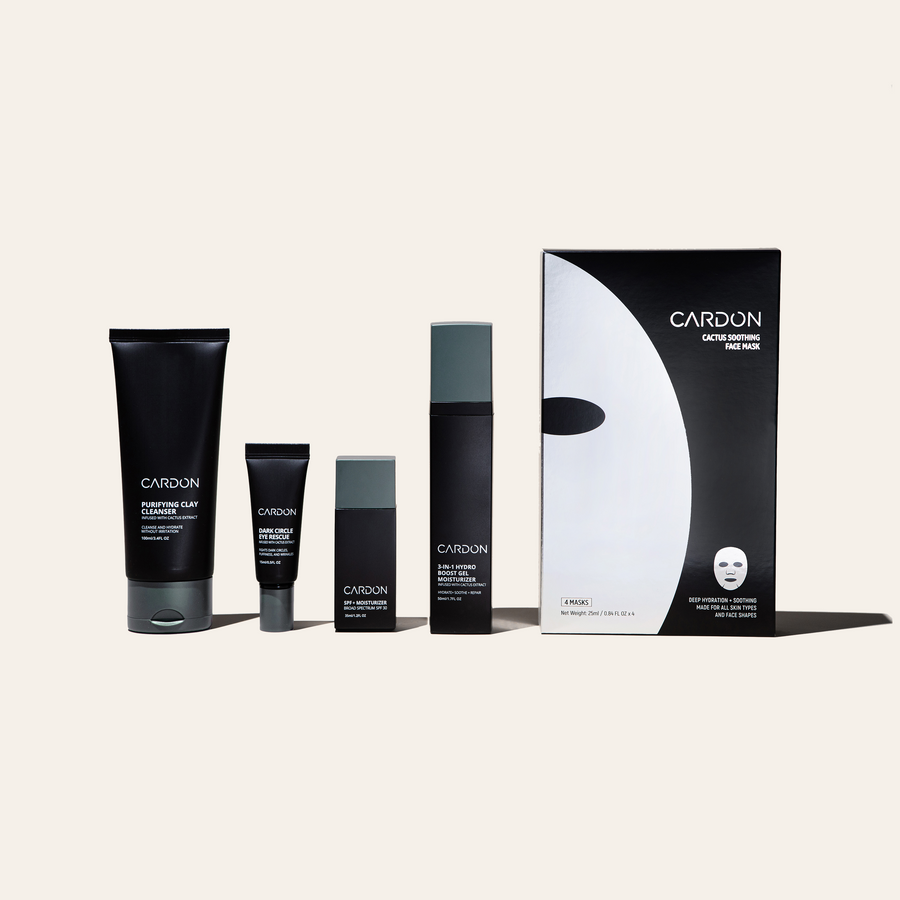
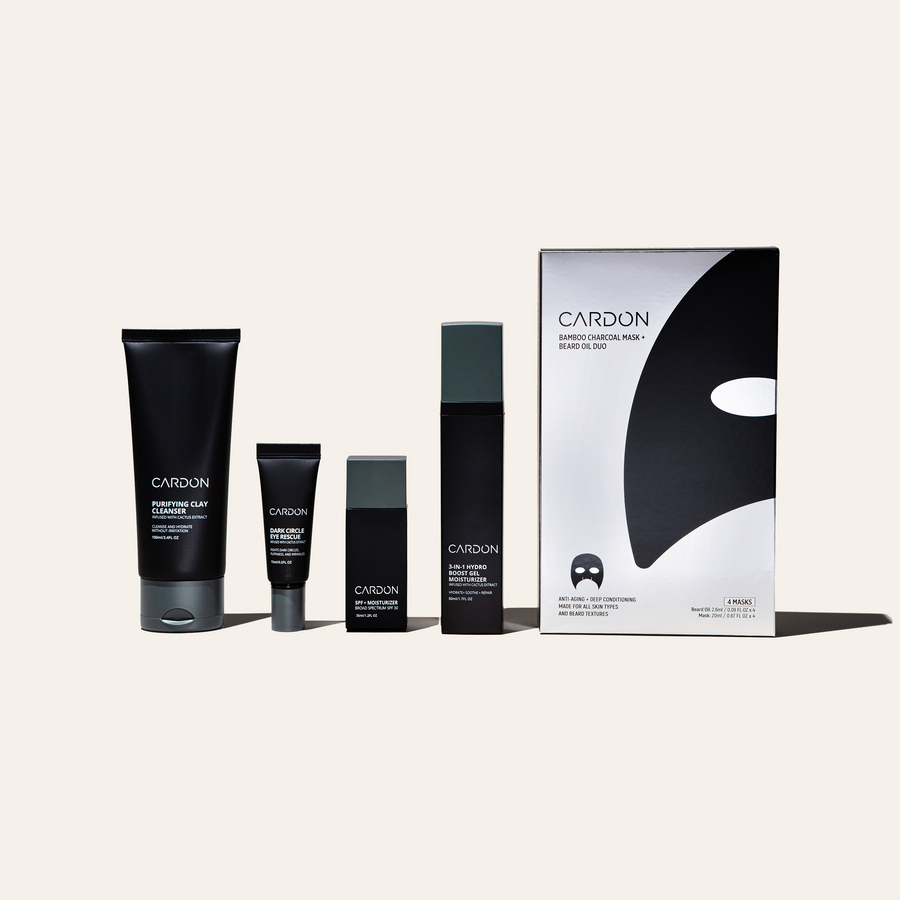
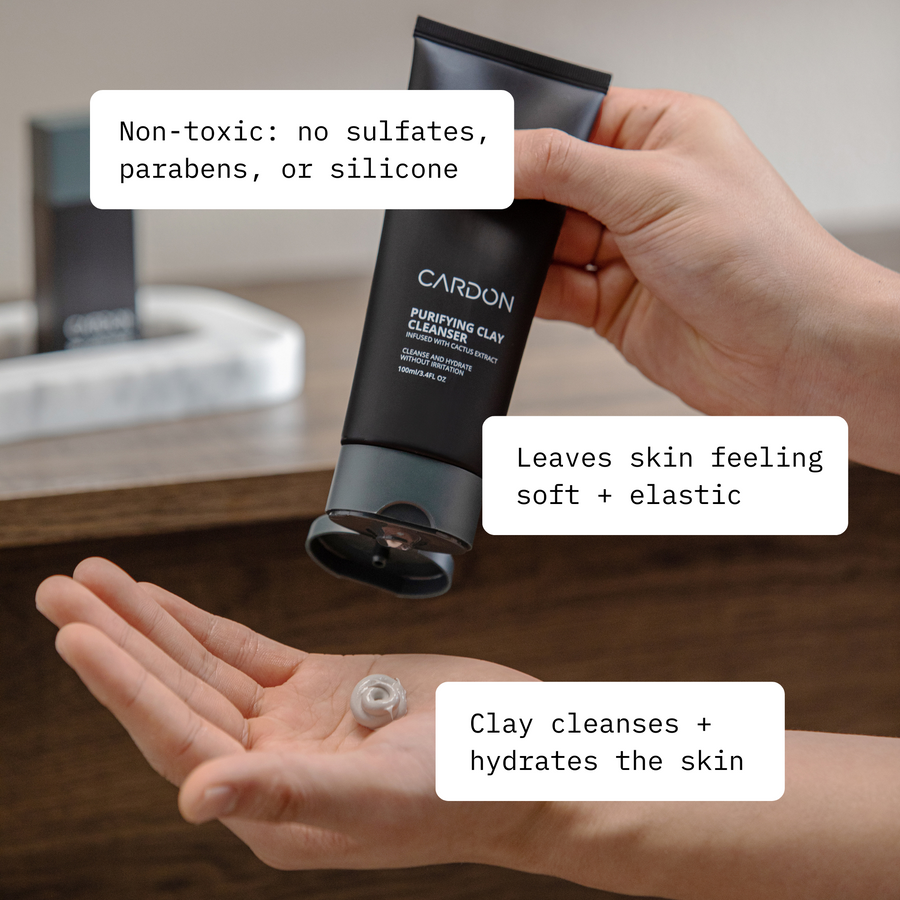
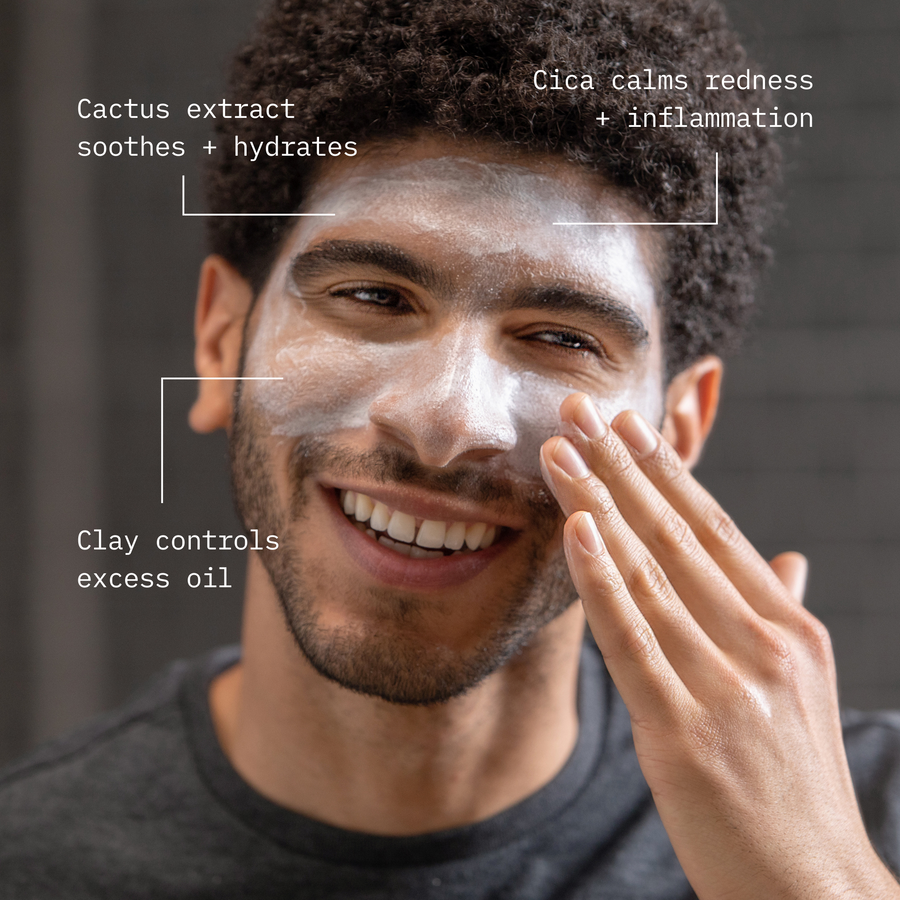
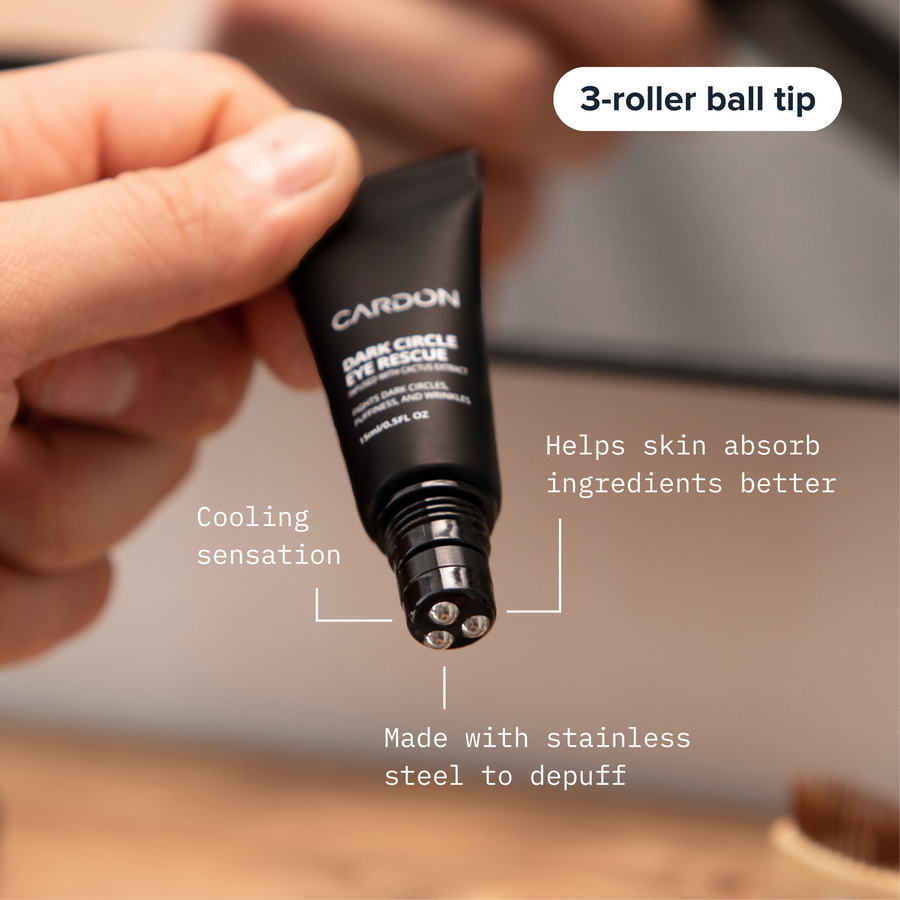
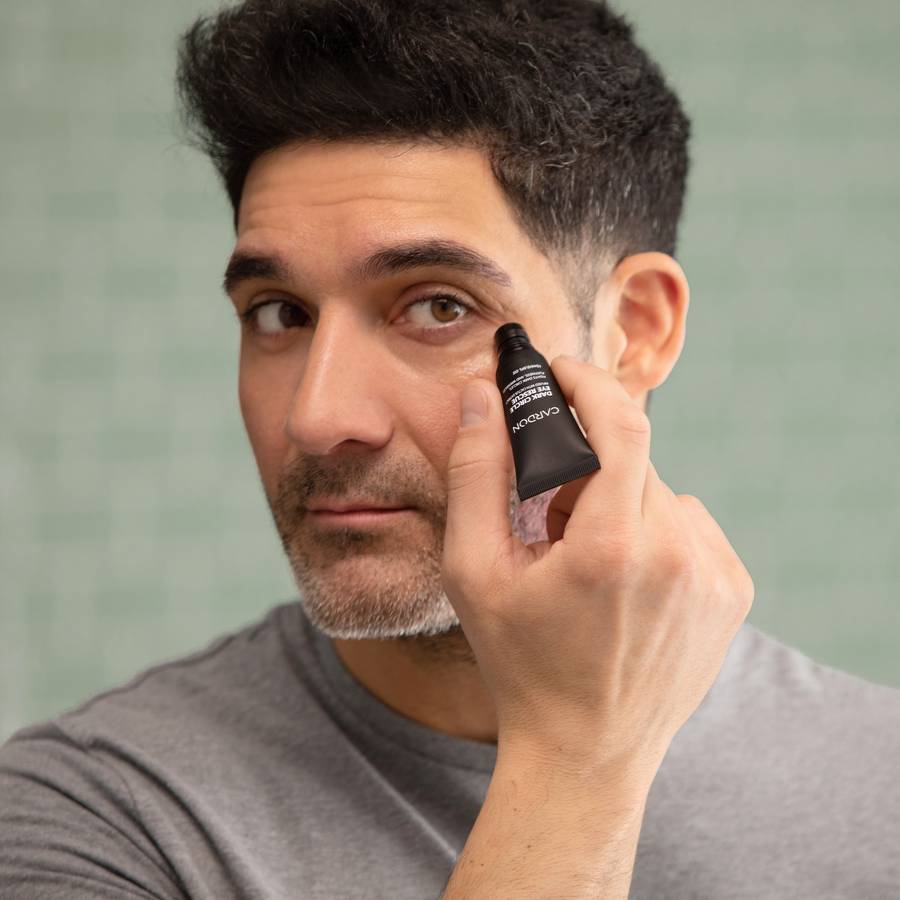
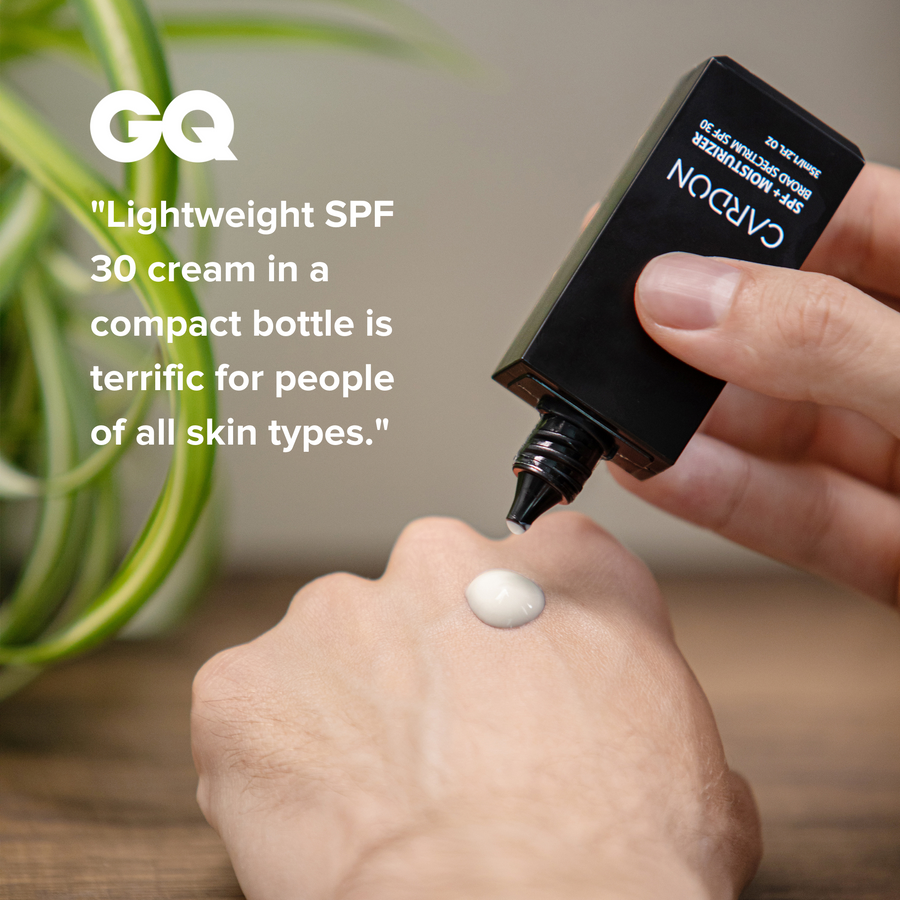
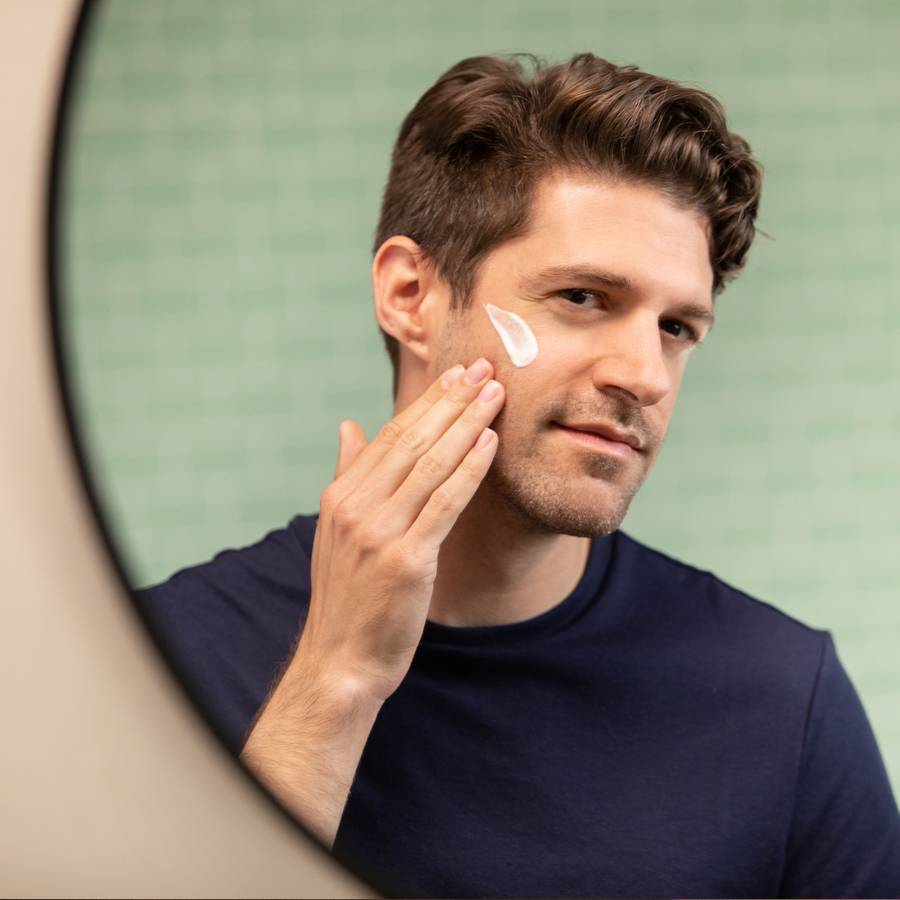
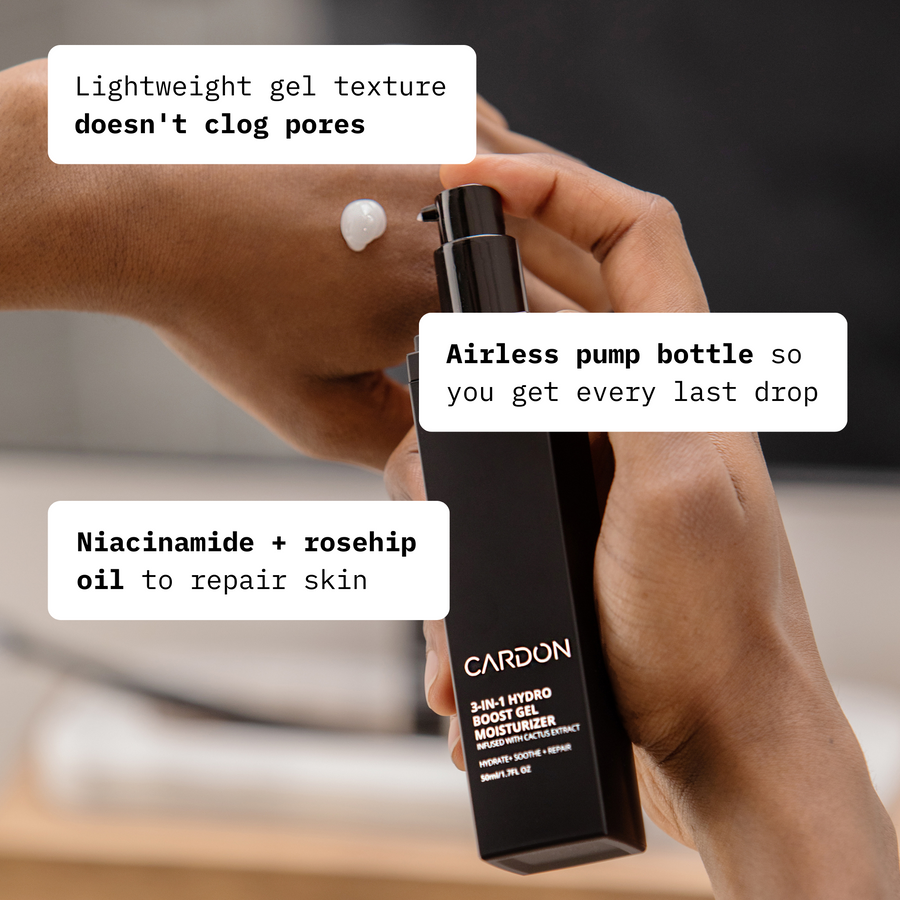


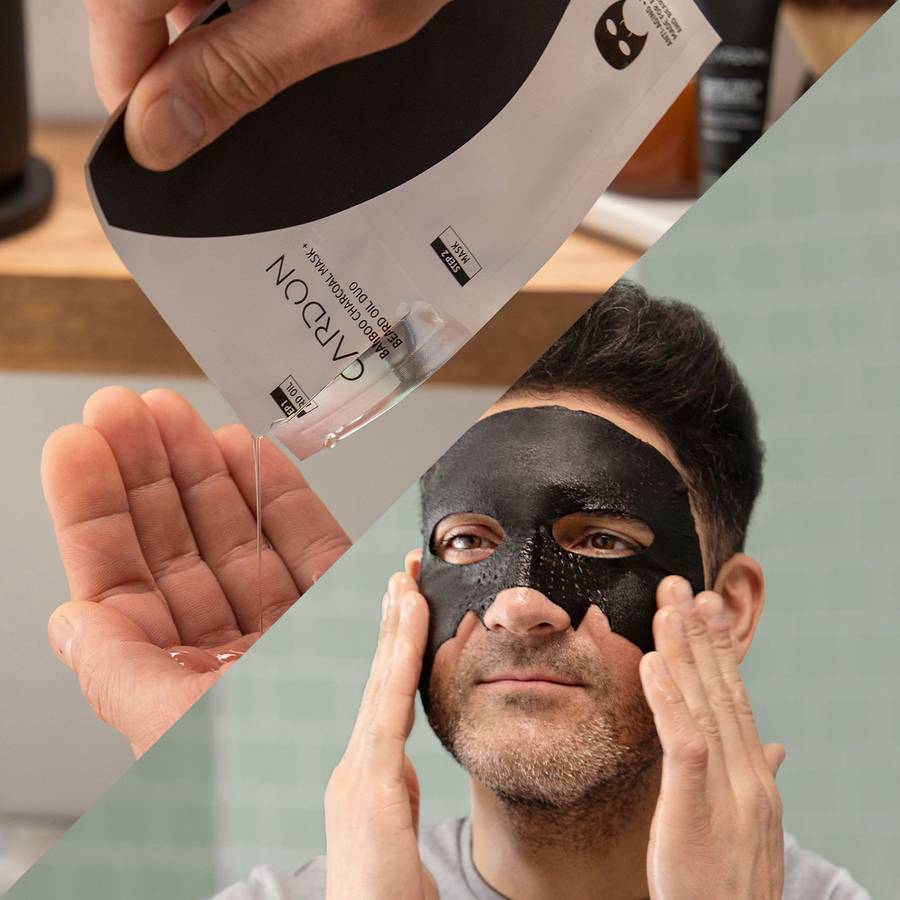
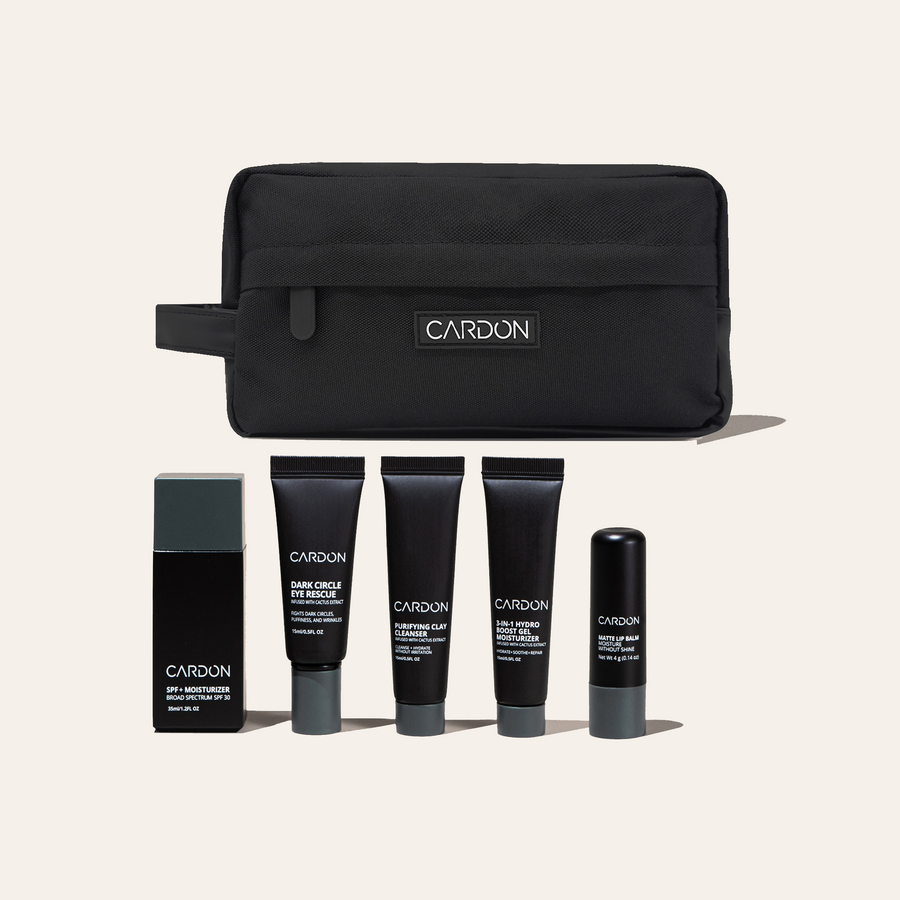
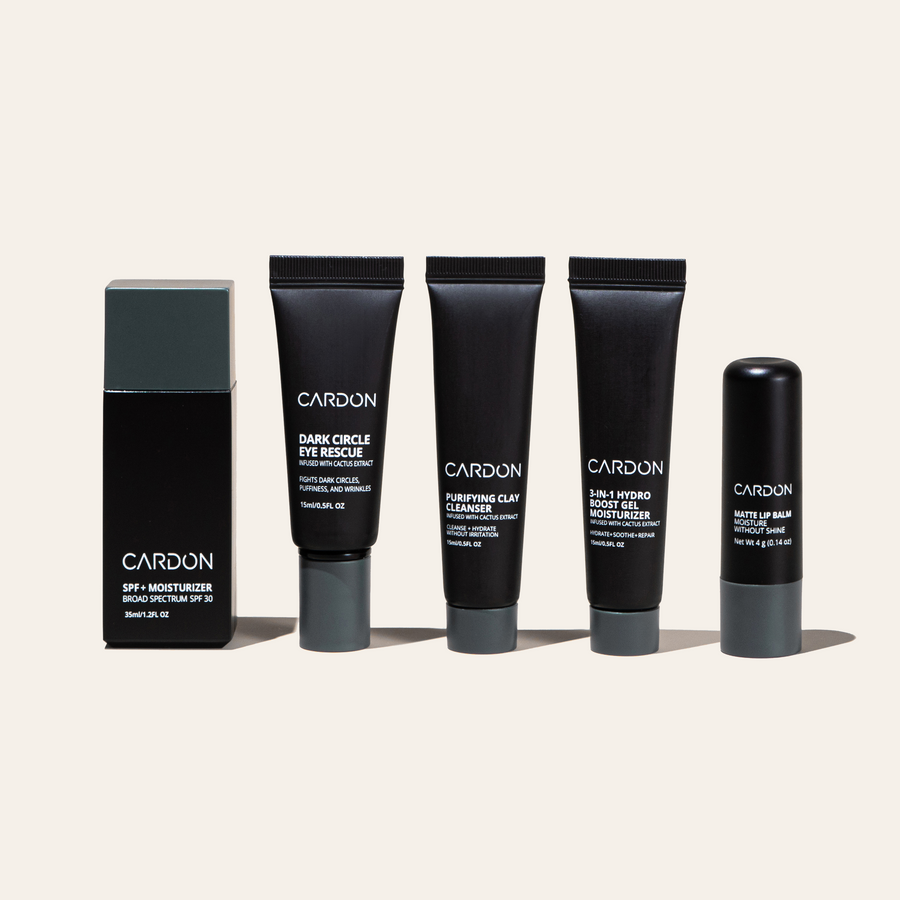
.jpg?v=1660669602636&options=w_900)
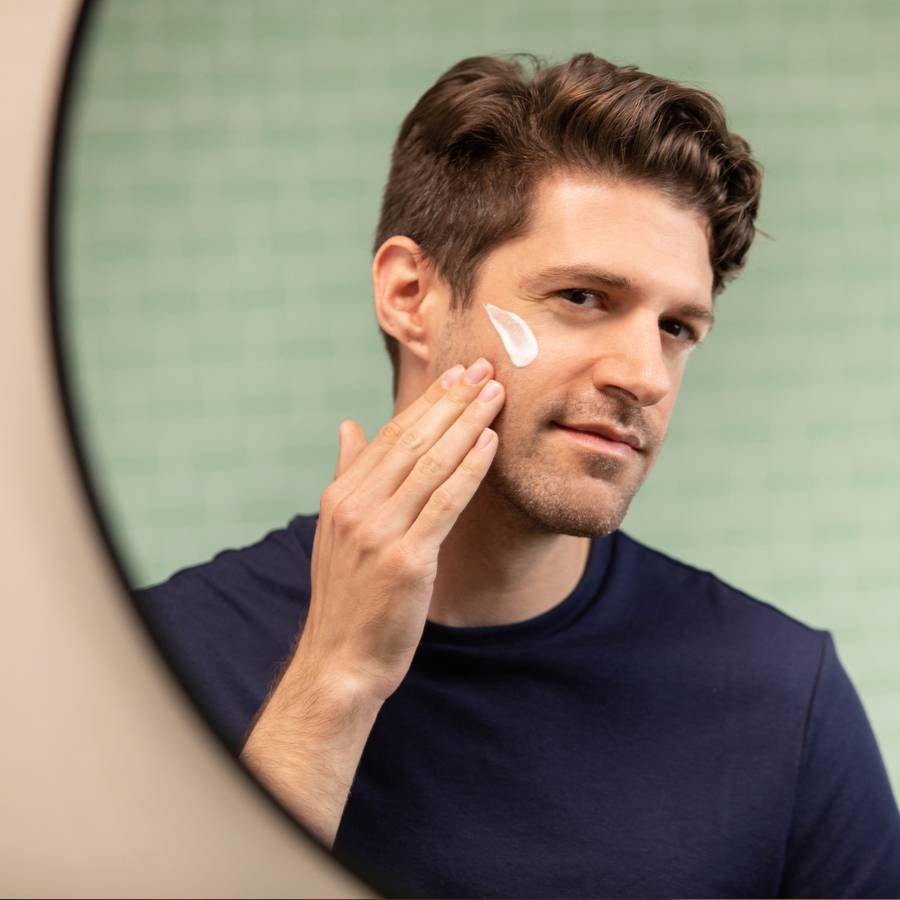
.jpg?v=1660669712802&options=w_900)
.jpg?v=1660669523094&options=w_900)
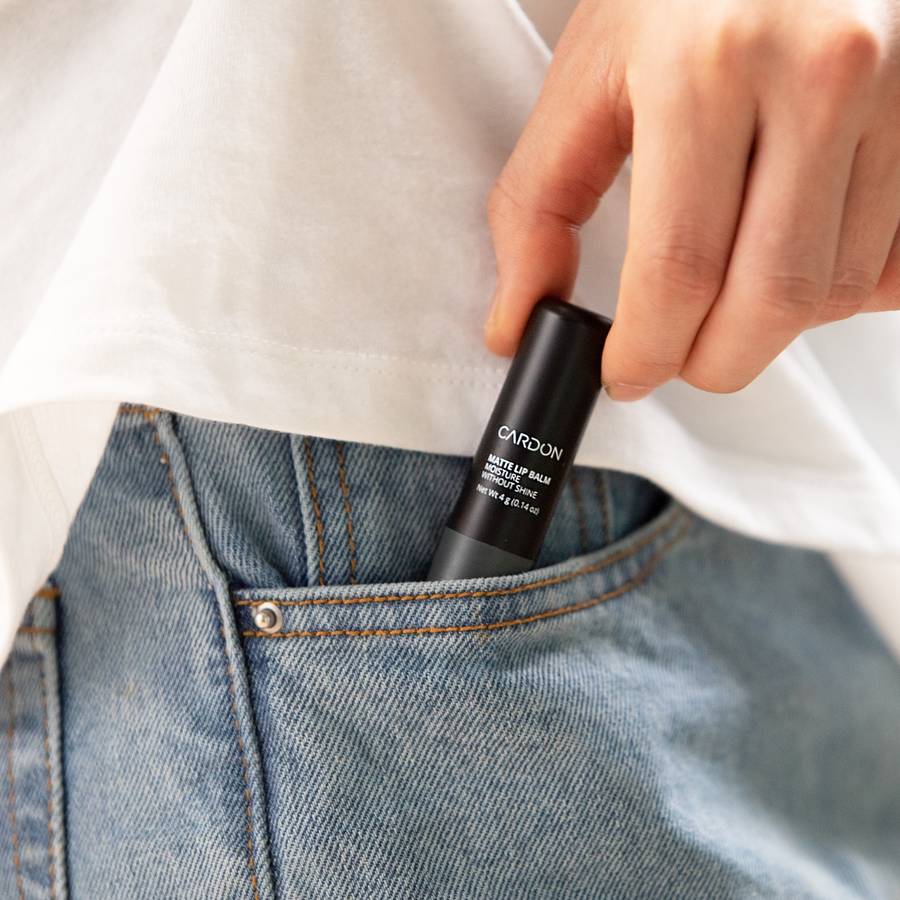
.jpg?v=1660669849450&options=w_900)

